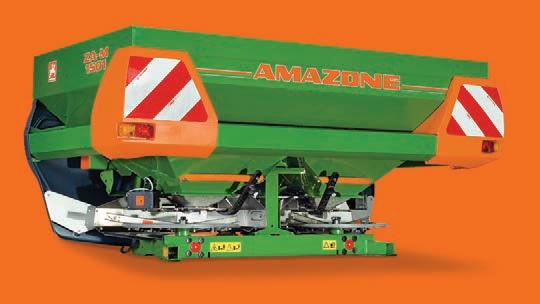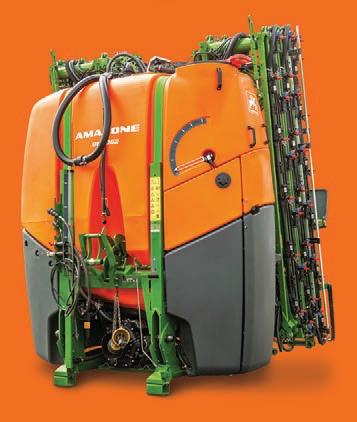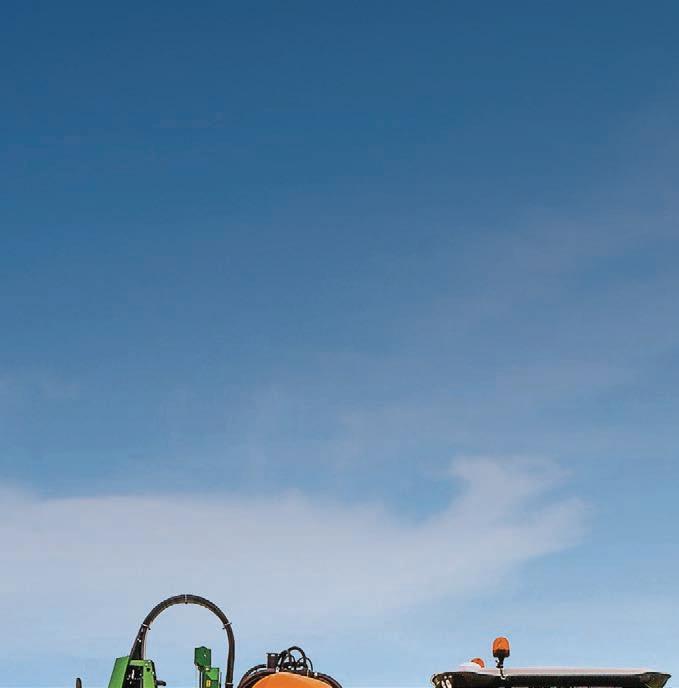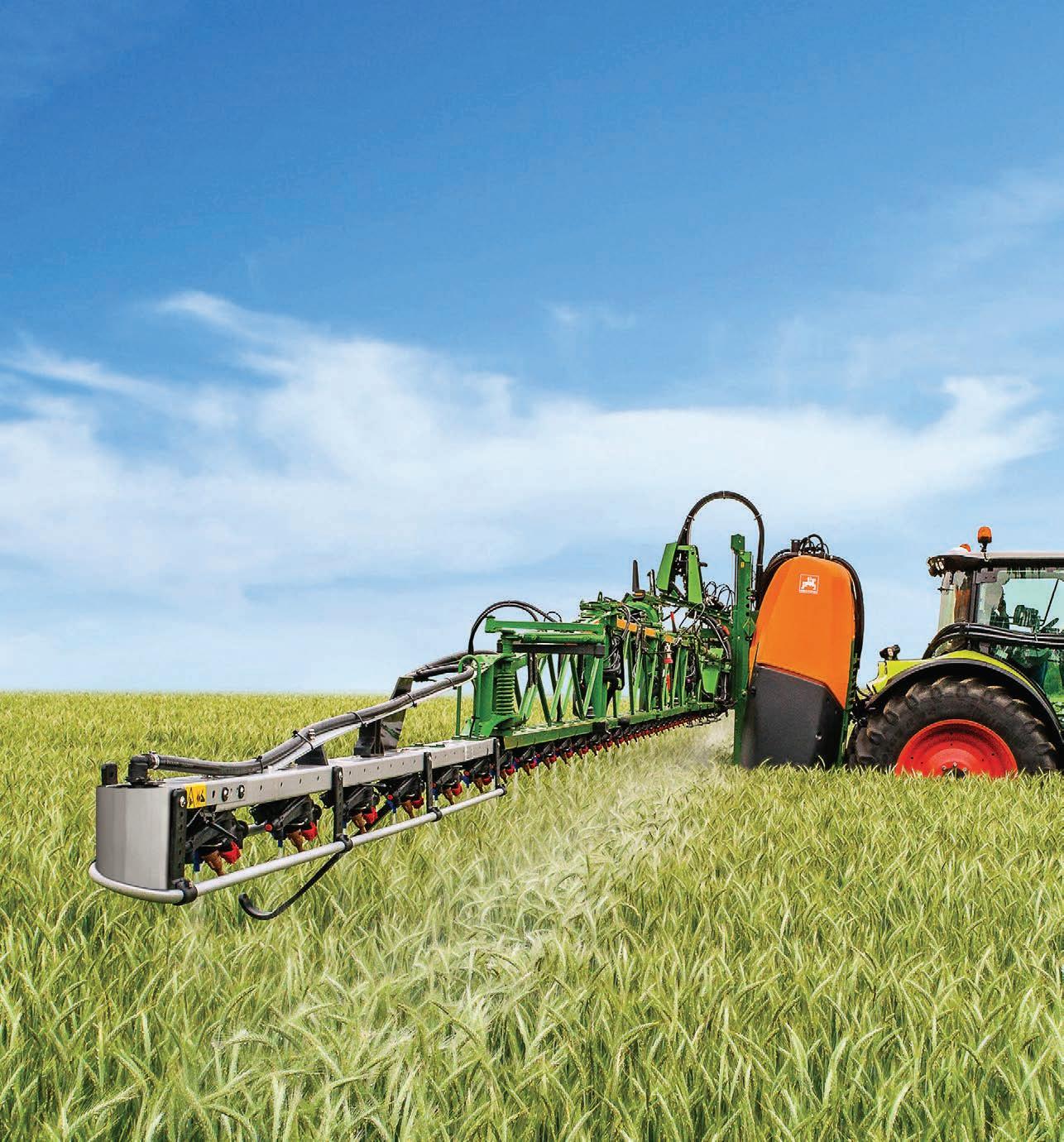‘Critical’ lessons for deer sector







Farmers president Charlie Reynolds said.
FARMERS and growers say they are in limbo three months after Cyclone Gabrielle and hope the appointment of a third Hawke’s Bay Lead Recovery Minister will provide greater direction and certainty about government support.
Wairarapa Member of Parliament Kieran McAnulty has been appointed to the position following the earlier demotion of Napier MP Stuart Nash and the defection to Te Pati Māori last week of Meka Whaitiri.

McAnulty acknowledged the size of the task ahead and said he wants to hear what the community needs.
“It is a locally led response. My job is to support that,” he told Farmers Weekly.
He said more support is coming.
Growers and farmers say they are in limbo, needing to make decisions as winter looms but waiting to learn the details of government aid.
“On the ground everybody is running around in circles, wanting to get their farms fixed but they don’t know who will pay for it or if it is worth doing or how it will look on the bank balance,” Gisborne Wairoa Federated
They want to replace bridges, tracks and fences so they will not be destroyed by the next storm, but need government guidance on whether that is possible.
”That’s the type of direction we want, to improve our resilience and not just replace it with the same bridges and have the same issue next flood.”
The reopening on Sunday of the crucial Waikare Bridge on State Highway 2 between Wairoa and Napier has been welcomed by local farmer Ben Lee for enabling people to reconnect and allow the movement of freight and livestock.
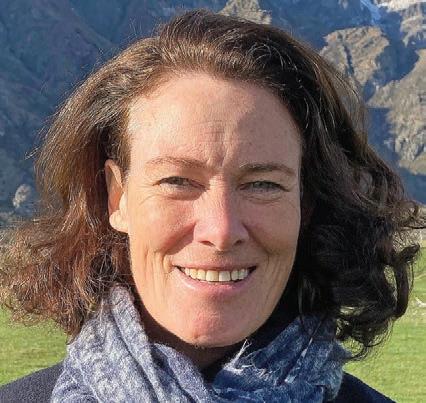
Parts of the road are still vulnerable and Lee said locals have been advised to be prepared for road closures due to winter weather conditions.
“This is concerning for all residents, workers, farmers and foresters and no one wants to be cut off again.”
A Boston Consulting Group (BCG) study commissioned by Hawke’s Bay Fruitgrowers found the cyclone affected 35% of the region’s crops at total economic impact of $1.4 billion.
It calculated it will cost $370m to remove silt, slash and other debris from farms, vineyards and orchards and contaminated crops,


Continued page 3
Argyll East School Farm Club students, from left, Charlie Kent, Lottie Smith, Maddie Butler, Lachlan Foley, Remy Davidson, Austin Buckeridge and Tei Pirie give their cattle a final once-over ahead of last Wednesday’s sale at Stortford Lodge in Hastings. The Farm Club sold six R3 steers and one R2 heifer at the sale.

MARKETS 4
The National Party will need to produce a blue wave across the country if it wants enough votes to form a coalition government later this year.
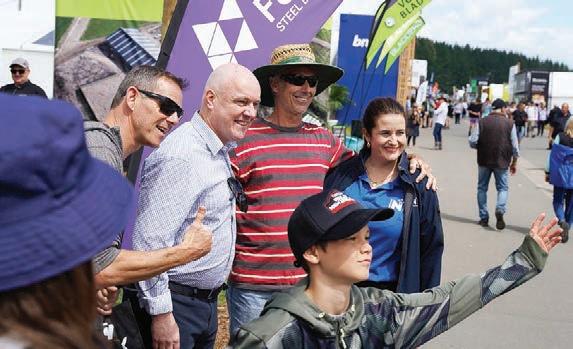
POLITICS 18
Zespri says the kiwifruit harvest has produced its lowest yield in years with just 136 million trays.
NEWS 3
South Korea’s ageing population is providing opportunities for Fonterra to develop new markets.
MARKETS 8
Volunteer first responders and rescue helicopters are increasingly left to cover rural health needs.
NEWS 10
Bryan Gibson | 06 323 1519
Managing Editor bryan.gibson@agrihq.co.nz
Craig Page | 03 470 2469

Deputy Editor craig.page@agrihq.co.nz
Claire Robertson
Sub-Editor
claire.robertson@agrihq.co.nz
Neal Wallace | 03 474 9240



Journalist neal.wallace@agrihq.co.nz
Gerald Piddock | 027 486 8346

Journalist gerald.piddock@agrihq.co.nz
Annette Scott | 021 908 400
Journalist annette.scott@agrihq.co.nz
Hugh Stringleman | 09 432 8594
Journalist hugh.stringleman@agrihq.co.nz
Richard Rennie | 027 475 4256
Journalist richard.rennie@agrihq.co.nz
Nigel Stirling | 021 136 5570
Journalist nigel.g.stirling@gmail.com
PRODUCTION
Lana Kieselbach | 027 739 4295 production@agrihq.co.nz
ADVERTISING MATERIAL
Supply to: adcopy@agrihq.co.nz
SUBSCRIPTIONS
0800 85 25 80 subs@agrihq.co.nz
PRINTER
Printed by Stuff Ltd
Delivered by Reach Media Ltd
Andy Whitson | 027 626 2269 Sales & Marketing Manager andy.whitson@agrihq.co.nz
Steve McLaren | 027 205 1456 Auckland/Northland Partnership Manager steve.mclaren@agrihq.co.nz
Jody Anderson | 027 474 6094 Waikato/Bay of Plenty Partnership Manager jody.anderson@agrihq.co.nz
Andy Whitson | 027 626 2269
Lower North Island Partnership Manager andy.whitson@agrihq.co.nz
Omid Rafyee | 027 474 6091 South Island Partnership Manager omid.rafyee@agrihq.co.nz
Debbie Brown | 06 323 0765 Marketplace Partnership Manager classifieds@agrihq.co.nz
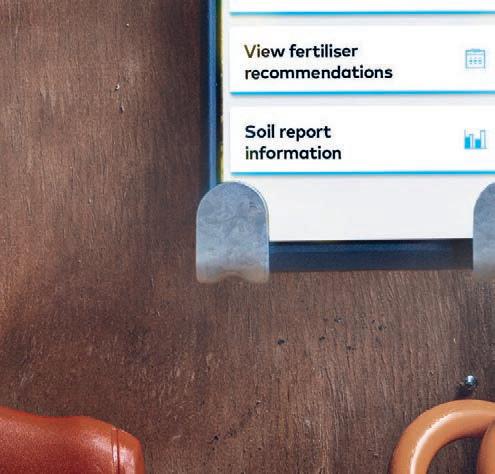
Grant Marshall | 027 887 5568 Real Estate Partnership Manager realestate@agrihq.co.nz
Andrea Mansfield | 027 602 4925 National Livestock Manager livestock@agrihq.co.nz
Dean and Cushla Williamson
Phone: 027 323 9407 dean.williamson@agrihq.co.nz cushla.williamson@agrihq.co.nz
Farmers Weekly is Published by AgriHQ PO Box 529, Feilding 4740, New Zealand Phone: 0800 85 25 80 Website: www.farmersweekly.co.nz
ISSN 2463-6002 (Print)
ISSN 2463-6010 (Online)
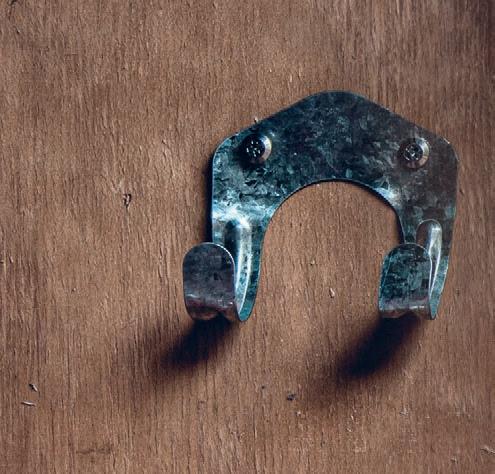


Pātoka sheep and beef farmer Patrick Crawshaw has been elected to the board of Beef + Lamb New Zealand as the Eastern North Island farmer director.

The election was originally part of the 2023 BLNZ annual meeting process but was delayed due to Cyclone Gabrielle. Crawshaw received 4305 votes, which represented 32.76% of votes received.

A2 Milk has announced an executive reshuffle in its United States, Australasian and Mataura Valley Milk businesses. US chief Blake Waltrip is leaving the company, replaced by the executive general manager of Australia and New Zealand, Kevin Bush. Eleanor Khor takes on Bush’s role. Chief of Mataura Valley Milk Bernard May is also leaving. John Roberts will be interim general manager.
A Levin farmer found responsible for the deaths of 29 cattle has been fined $32,000. Daniel Kilsby-Halliday was sentenced in the Levin District Court on five charges under the Animal Welfare Act, following a prosecution by the Ministry for Primary Industries. The court also ordered him to pay $7161.20 in veterinarian and associated costs.
New Zealand will join a world-leading international research effort to accelerate the development of technologies to reduce methane emissions from livestock, Agriculture Minister Damien O’Connor has announced.
The International Enteric Fermentation Accelerator will be the world’s largest single research effort to find and accelerate the development and implementation of mitigation technologies for agricultural methane emissions. O’Connor made the announcement following his attendance at the Agriculture Innovation Mission for Climate Summit in Washington DC.


THE weather events that continue to plague the kiwifruit sector over harvest time have contributed to a slump in fruit volumes this season, making the yield the lowest for years.
Zespri’s latest crop estimate indicates this season’s harvest will amount to 136 million trays of fruit, down even on last year’s disappointing harvest of 171 million, and well short of 2021’s record-breaking 182 million trays.
The volume impact on some fruit types is even more marked. Green kiwifruit are expected to be their lowest for 20 years at only 42 million trays, down from 61 million last year.
An untimely combination of weather events hammered crop volumes this season, kicking off with a warm winter-early spring period that affected budding, followed by a devastating frost in early October that completely wiped out crops in some Bay of Plenty orchards.
Cyclone Hale in late January flooded orchards in the region,
Continued from page 1
and will reduce the economic value of the region to $0.9bn in 2023. Hawke’s Bay Fruitgrowers president Brydon Nisbet said growers hope the government will meet half the recovery cost.
“Hawke’s Bay can’t afford a weak horticultural industry. It’s really important the government give confidence to growers.”

Removing silt and debris costs about $130,000/ha and Nisbet welcomed the recently announced government contribution of half those costs.
It will take at least seven years for production on destroyed
and Cyclone Gabrielle has affected an estimated 70% of the Hawke’s Bay orchard crop and 30% of Gisborne’s.
A hail event in Te Puke last month is also expected to further impact crop volumes.


Zespri CEO Dan Mathieson acknowledged the tough time growers have faced.
“Like many others in the primary industries around the world, kiwifruit growers have faced a particularly tough time this growing season, including many weather-related challenges,” he said.
The drop in crop volumes does not come as a complete surprise to the sector; a decline was signalled when Seeka, the industry’s largest grower and post-harvest processor, announced in April that its total volumes would be down by 20% .
The industry is using the lower crop volumes as an opportunity for the sector to focus on dealing with the quality issues that plagued last year’s crop, and to gear up for what is expected to be a record 2024 season.


Attention to fruit handling at harvest has been a key area, one where fruit damaged at harvest last season did not manifest until
apple orchards to recover, with replacement trees not ready to plant until 2025.
Gisborne kiwifruit grower Craig Wallis said the BCG report could apply equally to his region. Te Tairāwhiti kiwifruit orchard have a specific problem depending upon the type of root stock they used.

“Most of those orchards that have Bruno rootstock who have silt issues are going to have to replant with Bounty rootstock that holds up better.”
It will take more than a year before those crops start producing again.
“Any recovery programme almost needs to look at the needs
later in the season prior to export, requiring significant re-handling and pushing rejection rates to alltime highs.
The problems of last season were emphasised with the last two shipments, one to Japan and one to Europe, reporting exceptionally high levels of spoilage that prompted a further 60c-a-tray reduction on the Green fruit payment, leaving growers with no
of each individual grower to get back to full production.”
He said the Te Tairāwhiti region has managed recovery fund allocation well with oversight by Trust Te Tairāwhiti, and believes local decisions should be made with experienced locals.
McAnulty said the Ministry for Primary Industries (MPI) is working with the horticulture sector to calculate the estimated costs and will be release those findings once they have been reviewed and validated.
Hawke’s Bay Federated Farmers president Jim Galloway said hill country farmers have had little government help.
income payment for February.
That came after an August 2022 announcement when growers were informed of a $1.95-per-tray reduction in Green payments, and SunGold growers had a reduction of $2.80 per tray due to fruit losses.
A visit by Farmers Weekly to fruit retailers in South Korea in late April confirmed the quality plan was working, with retailers and
“If they are going to do something we want them to let us know what they are thinking and when they will make a decision.”
Rural roads remain fragile and Galloway said it is essential they are repaired.


McAnulty said he has visited the region many times since the cyclone and seen the devastation.
The government has so far made $74m available to help affected farmers and growers clean up and re-establish their businesses, for which it has received over 6000 applications for grants, with 5090 approved and over $57.7m paid out to date.
Zespri country staff reporting this season’s large-sized fruit were of a high standard, and selling well.
The volume rebound for next season is expected to be significant, with estimates it may approach 200 million trays as more SunGold fruit vines reach production maturity.
Total NZ supply is forecast to reach 230 million trays by 2028.
NZ Kiwifruit Growers CEO Colin Bond said he hopes to see Green fruit rebound to a more sustainable 50 million trays next season, accepting some volume has been transferred to SunGold with regrafting.

“Over half our Green growers will not make a profit this year,” he said.
Bond said half a dozen major weather events contributed to the crop losses.
Future weather events aside, he was confident the industry could return to its targeted 200 million trays next year.
“We had 180 million trays in 2021. Three years on with Zespri releasing more SunGold, expectations have been for industry to grow by 10 million trays a year. It is absolutely realistic to achieve that.”
On the ground everybody is running around in circles, wanting to get their farms fixed but they don’t know who will pay for it or if it is worth doing or how it will look on the bank balance.
Charlie Reynolds Federated Farmers
“This is just a small part of support we have already delivered but I know more support will be needed,” he said.
CASHING IN: Dairy farmers in the north may be pushing on through May before drying off because the forecast milk price for this season is expected to be higher than next season’s.
AGED dairy cow grazing is in strong demand in the North Island as farmers with good pasture covers and surplus stocking room outbid the meat companies.
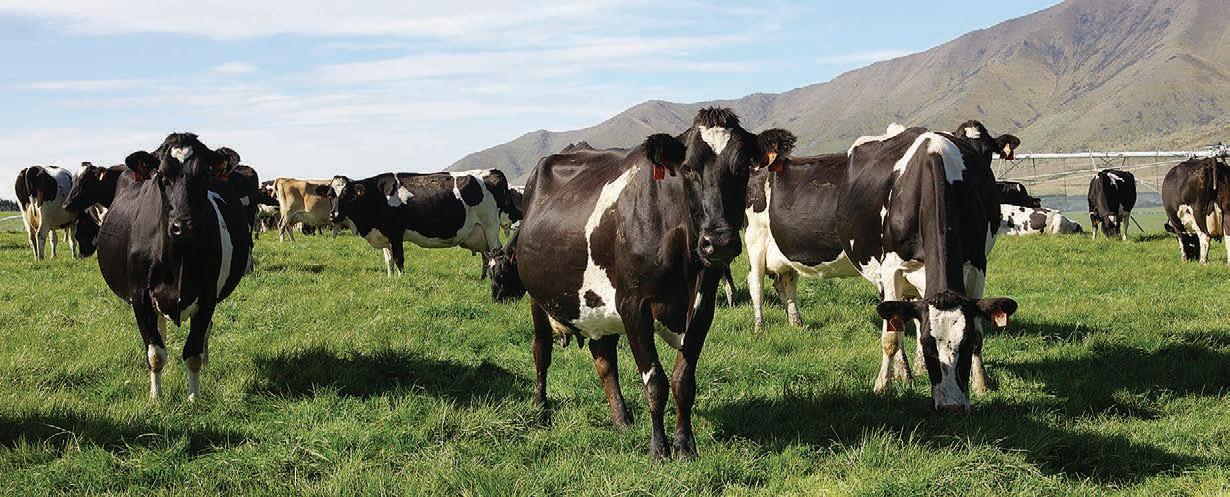
At recent North Island livestock sales, cull-for-age cows have made $1.65/kgLW, around $4.10/ kg CW equivalent, when the meat company schedules are around $3.80/kg.
The cull cow processing figures in the North Island are lagging well behind last year’s as feed levels are high and farmers are under no pressure to consign to slaughter.
Dairy farmers in the north may be pushing on through May before drying off because the forecast milk price for this season is expected to be higher than next season’s, and they have the feed and warmer weather to keep milking.
The opposite was true in the South Island, where weekly kill
SEVEN Central Hawke’s Bay students from Argyll East School made a trip to the Stortford Lodge saleyards to see cattle sold off their school farm.
The 2ha farm provides students with an opportunity to be farmers in their own right – although most come from farming families. The Farming Club has been going for many years and is currently run by Rose Hay.
All ages are encouraged to be part of the club and members range from new entrants through to Year 8 students.
system to feed the calves. Depending on the season, they will be grazed solely on the school farm, though in drier years neighbouring farms have taken the cattle on for a short period. The cattle are grown out and sold when it is appropriate to do so.
There is real passion among the students for farming their small block and they took great pride in seeing their cattle sold at the Wednesday sale. The students were up early to help load them onto the truck and the cattle were auctioned by Carrfields Livestock’s Ian MacEwan.
figures have been 65% above last year through the first half of autumn, which was a covidimpacted period, AgriHQ senior analyst Mel Croad said.



The historical pattern in the south between week one in March and mid-April was 10,000 head a week, but this year those tallies reached close to 15,000.
Dry conditions and high empty rates may have contributed to the early rush, she said.
In the north, processors are beginning to warn that cull cow consignments should not be left too late.
“There is definitely a premium being paid for cows to be grazed over winter and sent to processing later in the year,” she said.
The South Island premium in the yards over the current slaughter schedules is higher than in the north. The SI schedule average is $3.45. The average price in the Canterbury yards was $1.73/kgLW.
Prices in the South Island yards are 25-30c/kgLW ahead of where they were last year.
NZ Farmers Livestock has sent out emails to farmers headed “Strong demand for paddock cows

at the saleyards far exceeds works value and no waiting for space”.

Waikato agent Gareth Price said good pasture conditions have opened the door to grazing paddock cows over winter in the expectation that will deliver a margin from schedule prices for manufacturing cows in the spring, based on overseas lean beef demand.
“With a shortage of store cattle, boner cows are available now and buyers at Frankton are targeting Friesian, Friesian-cross dried off cows from 420 to 550kg LW.
“These are selling around $1.65/ kg LW and would currently be end-of-season condition, around 37-39% yield.
“Grazing over winter may not put on a lot of weight but it will improve body condition to 43-45% yield and provide a useful return for the short-term option.”
Danny Hailes, general manager livestock and shareholder services at Alliance Group, confirmed the paddock cow trend.
“We are seeing a greater volume of cows being sold on a liveweight basis and grazed at this time of year due to the abundant feed.”
Maddie Butler is one of the students involved in the Farm Club: “We meet each Friday morning to discuss what needs to be done, and to carry out any tasks that are needed, such as feeding calves, grubbing thistles and fixing fences.”
The general consensus from the group on what they enjoy most is doing all the jobs, even if they have to do them in the rain. Cattle are the main class of stock farmed on the property, along with chickens and some fish. Typically, the cattle are bought in as calves, and Maddie said they are put on a roster
They offered up six R3 Shorthorn and beef-dairy steers, which weighed an impressive 692kg and sold for $2000, after a bidding war between two parties. They then offered one R2 Angus heifer called Pepper, which sold for $1160. Both lines were bought by Hazlett agent Rowan Sandford, who will farm them on, on his own property. The proceeds from the sale will be used to purchase and feed more calves in the near future, as well as purchase farm equipment that the students have seen a need for. This includes thistle grubbers, electric fence reels and standards and hammers.

FRANKLY, THE DR200SE IS A BIT OF A LEGEND.
It’s a straight-up, rugged and reliable bike that’s been a firm favourite of Kiwi farmers for over 30 years. And with five hundy knocked off for a limited time, it’s great value and available from your local Suzuki dealer now.



THE New Zealand primary sector has some way to go to be match fit for the future and the deer industry is no exception, Deer Industry NZ chair Mandy Bell says.
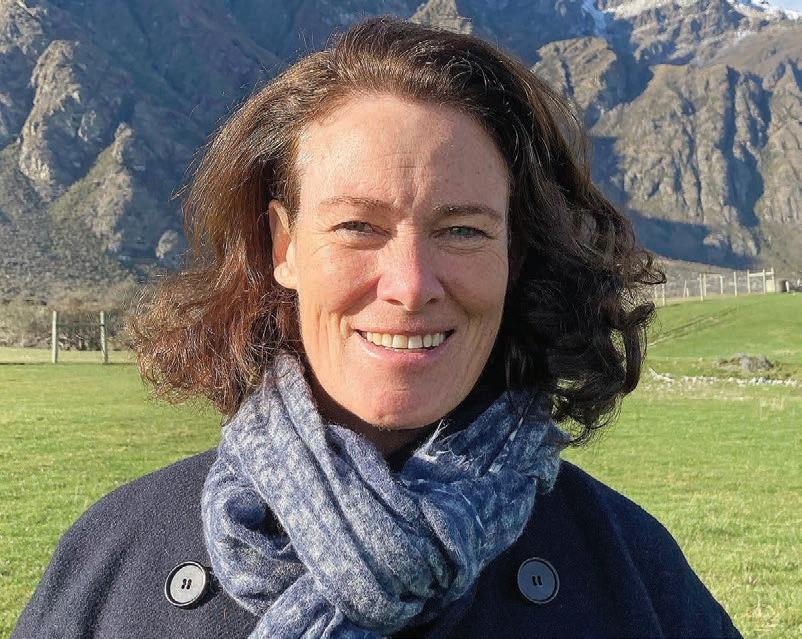


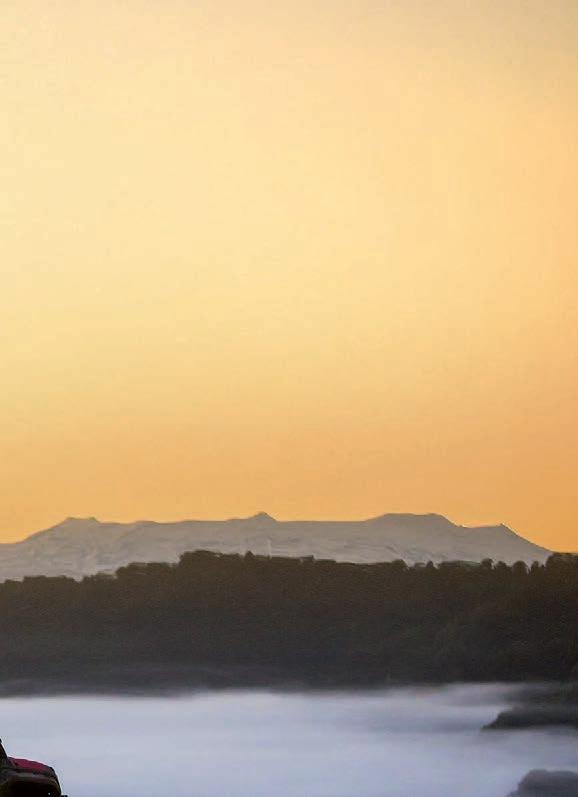
Addressing a capacity audience at the industry’s conference in Ashburton, Bell reported on “some critical conversations” at a recent Fit for a Better World meeting.
“They were not new, but together they were impactful,” Bell said.
She quoted NZ chief trade negotiator Vangelis Vitalis as saying the period of golden weather for the sector is over. There’s demand for forensic evidence backed by data that confirms its environmental actions. Big food and retail are asking for validation of these actions.
Bell said an international food business has said it sees NZ as
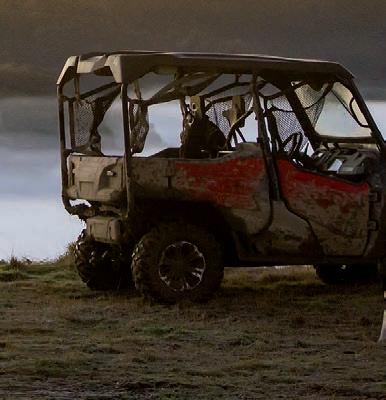
10 years behind global trends. Innovation and disruption have long timeframes; high value products must beat the current production cost curve. No business is sheltered from this change, she said.
“These messages are not getting through clearly. We need to get better at communicating with farmers, understanding the pace of change, challenges and opportunities,” she said.
environmental stewardship and greater connection with producers.”
The deer sector is a smaller industry but there are positives in that, it is easier to connect and join up solutions.
“The consumer must be driving our product development, policy and strategy.
“We need to seek out the opportunities of creating value chains that deliver fair value, end to end with revenues that reward producers.”
The industry is different from what it was 10 years ago, Bell said, and will be different again in five years.
“We will always be able to find buyers for our products but the most affluent, the most discerning, are who we need to satisfy.
“Their expectations are changing as they seek greater assurance of good animal welfare, good


“Our farming systems are changing because of the decisions we make. Some of us have swapped hinds for stags, some have shifted deer numbers up or down, some of us have explored other incomes like trees.
“Some of these changes have been in pursuit of higher returns, others have been forced on us by changes to land-use rules.”
Bell said the Deer Industry NZ


(DINZ) board’s challenge is to continue its strong advocacy to focus on key areas of opportunity and critical risks for the right reasons as the industry adapts to social and market demands of the future.
“To thrive in the future the board has implemented change. It has demanded change from the staff and asked for proactive leadership, for transparency in communication and accountabilities in delivery.”
Bell said increasing production isn’t what makes a thriving industry.
“Thriving comes from confidence and from reinvestment across the value chain.
“There are exciting opportunities that we can capitalise on in the next five years. There is growing interest in healthy and sustainable products and we are well positioned for this.
“We will need to lean in – change takes every one of us to act.”
GLEN Dene, a high country station on the shores of Lake Hawea, has won the Deer Industry New Zealand premier environmental award for 2023. Comprising three integrated businesses, a sheep, beef and deer farm, trophy hunting and a camping ground, and owned and operated by Richard and Sarah Burdon, Glen Dene took the Elworthy Award at the industry’s 13th biennial awards evening in Ashburton.
The third-generation farmers took over management of the 2300ha station in 2001.
The judges appreciated the 220km of deer fencing and shelter belts, pine blocks, extensive amenity plantings, large areas of native vegetation in the hill country and stream health assessments across the station indicating operational areas of generally good or excellent standard.
The NZ Landcare Trust award for excellence in deer farming through actions on the ground was won by Lyal Cullen and Marion Neill of
Springdale in South Canterbury. Extensive shelterbelts, woodlots and retired riparian areas, together with an in-depth knowledge of deer wintering systems including long-term water quality testing showing minimal impact from the farming operation, were standouts for the judges.
Also in Canterbury, Scott Hassall won the Duncan NZ Venison award for vision and innovation while mastering a demanding environment on Iffley farm in North Canterbury. Prioritisation of environmental projects with practical outcomes,
8- 9.5%
high-level innovation and indepth knowledge of the whole farming system stood out in Hassall’s case. He carries out cut and carry of kale crops to maximise feed utilisation while minimising paddock damage from high stock density.
The NZ Deer Farmers Association Next Generation award was won by Mike Humphrey of Green Hill, Manawatū.
This award is made for outstanding performance across environmental, financial and social aspects of a business.
Simon Hoskin of Five Hawks
farm, also in Manawatū, won the Gallagher technology and innovation award for excellent utilisation of farming technologies to improve farm productivity and manage resources.
The Streamlands Export Ltd Award for leading, environmentally sustainable velvet farming went to Ross and Monique Moore of the Abarta Company in Waikato.
Lead judge Janet Gregory said all entrants were extremely passionate and proud of what they were achieving with all having a strong environmental focus to all aspects of their business.
The consumer must be driving our product development, policy and strategy.Mandy Bell DINZ chair
















FONTERRA farmers returned in numbers to the co-op’s Fixed Milk Price offer in May after turning up their noses at an unexpectedly low-priced offer in April.
The May offer, covering 10 million kilograms of milksolids at $8.49/kg, was reportedly oversubscribed, although Fonterra has not yet released the volume of applications and the scale-back percentage.
In contrast, farmers were not attracted by the $7.57 offer in April, when only 42 applications were made for a total of 1 million kg out of 10 million kg offered.
Fonterra’s first forecast would be in late May.
A consensus of predictions is not available from the dairy analysts, who currently range from $7 to $10 in their forecasts.
“Most farmers were not prepared to lock in an FMP price that was lower than their break-even,” Jarden’s head of derivatives, Mike McIntyre, said.

“Milk price futures have quite rapidly appreciated since that early April slump, which was an over-reaction at the time.”
Fonterra said it is not uncommon to see swings in participation for FMP events.


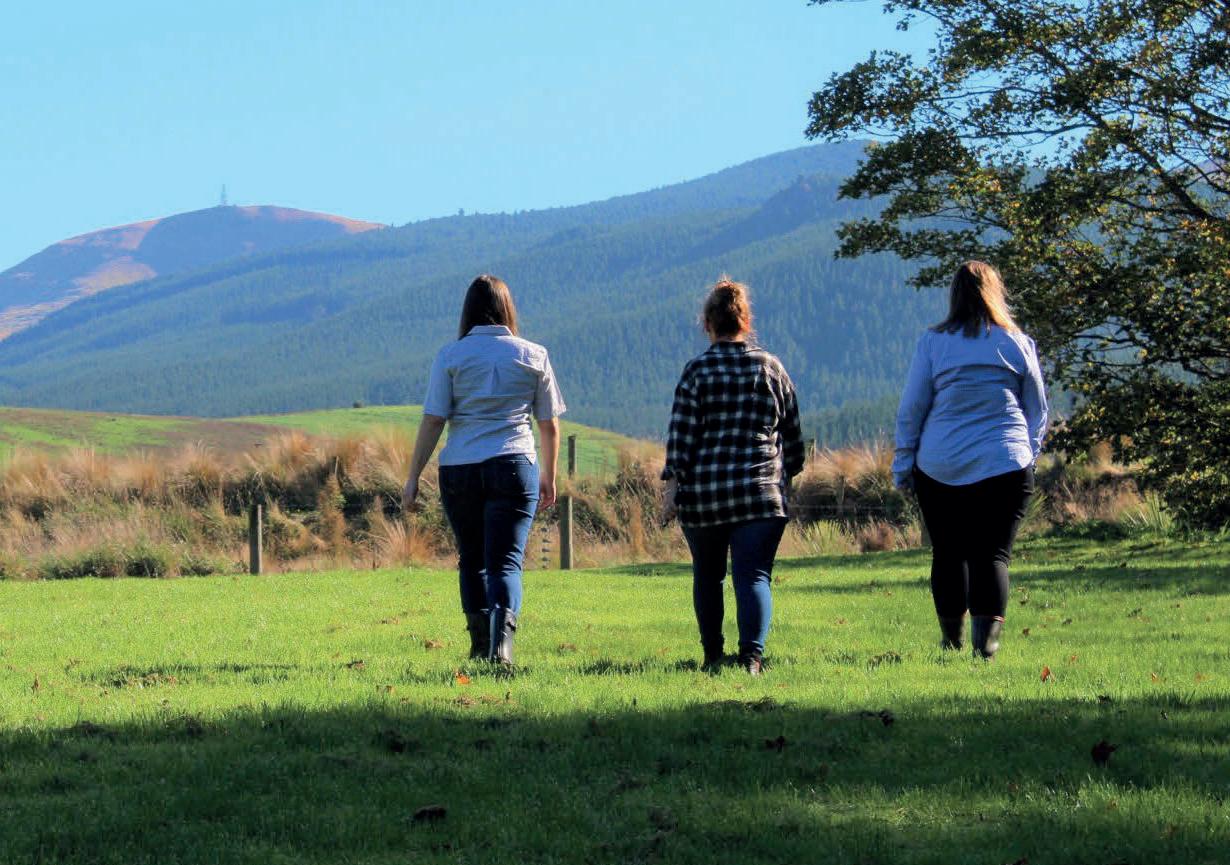
For the 10 monthly offerings in the 2023 milk season, from March 2022 to December 2022, applications varied from 35 (December) to 2021 (June).
Not unexpectedly, the June FMP offer price was $10.34 and the December offer was a seasonlow $8.96. Both prices have a 10c fee deducted before payment to farmers.
The second conclusion is that FMP participation is very sensitive to the offer price.
finish higher than the likely 2023 payout, currently in the range $8.00 to $8.60.
Using the $8.30 mid-point of the Fonterra forecast, FMP users stand to gain between 56c and $1.94/kg.
McIntyre agreed that 202223 has been a great season for farmers to use FMP contracts and to have sold milk price future contracts.
Last year 6002 applications were received in total and Fonterra sold 86 million kg on FMP contracts.
The volume sold was about 5% of Fonterra’s total milk collection for the season.
FMP offer prices are an average of the daily settlement prices of MKPU24 futures contracts over three days following the first Global Dairy Trade event of the month.
Back in March, the first offering for the 2024 dairy season, 302 applications oversubscribed the 15 million kg offering at $8.78.
In April farmers were not prepared to swallow the $1.20 price reduction, which was dictated by a shortlived but considerable slump in milk price futures traded prices (MKP24) at the time.
Futures trade prices have since recovered somewhat to sit around $8.45 and form the basis of the May Fixed Milk Price (FMP) offer.
The first and obvious conclusion of the 90% undersubscription for the April FMP is that farmers have a higher expectation of the farmgate milk price outlook. They were not prepared to lock in a $7 figure before hearing what
Five hundred-plus applications were received in six of the seven months last year in which the offer price was $9 or $10.
The three low-participation months, August, November and December, had offer prices in the high $8.
The true test of the FMP scheme as a risk management tool for farmers is participation in March, April and May, before Fonterra’s own informed forecast is known.

These are called the pre-season FMP events.
In autumn last year more than 1300 applications were made while the offer prices were $9.38 to $9.77 and all applicants had their volumes scaled back.
A third conclusion is that 2022 was a great year to use Fixed Milk Prices.
All 10 monthly net offer prices (with 10c deducted) are going to
WORLD avocado production and trade is galloping along but New Zealand’s participation is faltering under headwinds in orchards and on board reefer ships, Rabobank analysts say.
Under the heading Global Avocado Growth Far From Over, RaboResearch fresh produce analysts say industry growth worldwide in the past decade has been 7% annually, compounded.
Global trade will continue at that pace but the market will become more competitive, driving operators to be not only more efficient but also increasingly sustainable.
The big industry report follows closely behind the 10th World Avocado Congress held in NZ in early April.
Rabobank says Mexico is the largest producer, with 30% of global output, and that Colombia, Peru and Kenya expanded by 1115% compounded annual rates of growth (cagr) during the past decade.
Much of Mexico’s output goes to the United States, whose own production is no longer within the global top 10.
Mexico exported over 1 million metric tonnes in 2022 from its production of 2.5 million tonnes.
Marketing campaigns by importers and the Hass Avocado Board based in California have helped US consumption grow by 8% cagr. It imported 1.1 million tonnes in 2022.
Producers such as Peru, Spain and Kenya export mainly to Europe, where the biggest importing countries are the Netherlands, France and Spain.
According to the report, the global commercial market value
of fresh avocados is estimated to be around $US18 billion ($28bn) in 2022.
“We believe there is room for significant growth in several markets around the world, as per capita consumption is highly variable,” the report says.
Mexico leads with a global record of about 9kg of fresh avocados per person per year, followed by Chile with almost 8kg.
Australia and the US complete the list of countries with over 4kg per capita.
In NZ, export volume dropped 20% in 2022, due to sufficient supply in Australia, reduced demand in Asia and lower fruit yields.
Rabobank associate analyst Pia Piggott said a bumper harvest is expected in 2024 and the production growth projections mean that rebuilding market share in Asia will be a priority.
Most farmers were not prepared to lock in an FMP price that was lower than their break-even.Mike McIntyre Jarden HINDSIGHT: Head of derivatives for Jarden Mike McIntyre saw more farmers use risk management options when milk prices were high.

 Richard Rennie in South Korea MARKETS Export
Richard Rennie in South Korea MARKETS Export
WHILE much of Fonterra’s success in China was built on the burgeoning infant formula market over a decade ago, the other end of the human lifespan is providing the opportunities for growth in South Korea.
With a population that has shrunk over 100,000 in the past year, has the world’s lowest birth rate, and faces a surge in its over-65 demographic, it could outwardly appear that South Korea’s growth prospects for dairy would be limited.
But the market is a sophisticated, increasingly wealthy one where the opportunities are opening to provide ingredient formulations to the “active lifestyle” 65-plus demographic.
Fonterra’s general manager for planning in North Asia, Bryn Rowdon, says the “grass-fed” label for dairy is not in itself compelling enough to provide a higher value selling proposition to this market.


“Just as in Japan, the perception is that all cows, regardless of where they are from, are fed grass in some form.”
However, linking “grassfed” back to a health benefit is where the gold in the claim lies.
Along with proteins for ready-to-drink formulations, Fonterra is also working on building its butter and cheese trade in the market, and the health benefits that come from being “grass-fed” are to play a big role in an upcoming campaign.
Meantime, the company – with a staff of 18 in Seoul – is enjoying having a long-established, trusted



relationship in the market.
New Zealand has been engaged since the Dairy Board days, selling caseinate commodities.
South Korea’s domestic raw milk production is flatlining, with most committed to raw milk supply at a subsidised high price that rules it out as an option for further processing and protein supply, leaving Fonterra to help fill the widening gap.
It is a trend also echoed across the Sea of Japan, or the East Sea as it is known to South Koreans.
fortified protein drinks.
It’s an unfolding market, with brands competing to pack in as much protein as is possible, with some 250ml servings offering 32g of protein. Stenhouse said Fonterra is expecting to see typical levels of 8% protein in some categories to lift higher to 10-plus.
“Which is great for us. The higher levels are harder to formulate successfully, and we can do it. We have been lucky to be here at the start of this growth.
“What we have managed to do in this liquid space is to develop formulations that retain a very good mouth feel and taste, something you don’t always get with high-protein supplements in western markets,” Stenhouse said.
Koreans are particularly sensitive to taste profiles, with mouth feel and taste nonnegotiables regardless of a product’s health claim, and the lessons learnt in perfecting the products here could apply well to other developing markets globally.
The 65-plus demographic will consist of 20% of Korea’s population by 2025 (it is 17% at present) – one that is committed to aging healthily, said Jack Stenhouse, Fonterra’s business manager in the active living category.
“They want to enjoy their older years as healthily as possible.

“It is not just an awareness of the need to maintain bone density but also of the need to retain muscle mass as you age.”
Studies have shown after 45 muscle mass loss can be 1% a year, accelerating after 65.
“Fifty-year-olds want to be 30,” he said.
An emerging trend to help them achieve better health is the consumption of functional
He said typically the South Korean market will go from little change, to a very large market very quickly for specific products.
Alongside the healthy active segment, the liquid protein sector includes medical nutrition for cancer, diabetes and malnourished patients, and “lifestyle protein” beverages starting to fill the shelves of convenience stores.
Further opportunities also lie in the phospholipids sector – extracting lipids from buttermilk to use for stress relief and wellness – an area the company has most recently delved into with its BioKodeLab range in NZ.
Richard Rennie travelled to Seoul thanks to funding from the Asian New Zealand Foundation.
Richard Rennie MARKETS EmissionsAS FONTERRA farmers start to assess their greenhouse gas emissions and their mitigation, the South Korean government is also demanding the same of its farmers.
Fonterra’s Asia business planning general manager, Bryn Rowdon, said the perception of what constitutes a “sustainable” food product is steadily growing in South Korea, reflecting what is occurring throughout much of Asia.
With that comes a need for suppliers like Fonterra, and therefore their farmers, to meet those demands.
“The Korean government is quite invested in this, and by 2050 aims to be carbon neutral and is also pursuing ESG goals from its industries.” ESG, or “environmental, social and governmental” goal-setting, is a reporting standard that aims to
identify a company’s progress and goal-setting across all three areas.
“All listed Korean companies will have to divulge their progress against ESG goals by 2030, and this is similar to what is happening in Japan.”
The government is also to enforce a carbon certification scheme and has the pork sector as the first on the list in the primary sector, before rolling out to the country’s 6000 dairy farms. Farms that can show they are making progress towards lower carbon intensity will be able to add a certification to their products’ labelling.
Fonterra’s active living category manager Jack Stenhouse said Fonterra already has a Korean client that has used the New Zealand based Toitu carbon certification audit, as they aim to move towards carbon neutrality.

“We are starting to see more companies in the food and beverage sector look at this. It is not quite at the rate of the EU, but it is getting there.”

They want to enjoy their older years as healthily as possible. It is not just an awareness of the need to maintain bone density but also of the need to retain muscle mass as you age.
Jack Stenhouse Fonterra
AMID the enthusiasm in New Zealand about serving traditional Asian markets such as Japan and China, South Korea is a market that contains some good opportunities for New Zealand food exporters.
Stephen Blair, NZ Trade Commissioner for Korea, said the densely populated, singlelanguage country has tended to fly below the radar for many over the years.
“But if you are thinking of Japan or Singapore, then Korea should definitely also be in that mix. This is especially so now that most of the tariffs previously in place are almost entirely wound down now under the free trade agreement [FTA].”
Signed back in 2015, the FTA contains a number of sunset clauses in it for tariffs to be wound down by 2030. Dairy, horticulture and red meat are the biggest winners, with each having borne
punishingly high rates of 36-45% prior to the FTA signing.
Nick Oh, NZ Trade and Enterprise’s (NZTE) head of business development in Korea, said the market is an appealing one to diversify out of China to, sharing some similarities in logistic lines and culture.
But it has the advantage of having almost 25 million people within only 50km of Seoul’s centre in a region half the size of Waikato, helping make in-country distribution fast and relatively cheap.
“And we are seeing more opportunities open up in the premium market. It is similar in this respect to what Japan used to be, but now it is the Japanese who tend to ask more about price first,” Oh said.

In 2019 Korea was officially deemed a “developed country” by the United Nations, the first country in the UN’s history to be upgraded, and putting it in the same company as most European nations and Japan.
Overall, the economy now ranks as the 11th largest globally in
GDP, and 19th in the UN’s Human Development Index, an indicator of a country’s socio-economic capability. At 19 it sits just ahead of the United States, and just below Japan and the United Kingdom.
Blair said NZTE’s staff in Seoul witnessed more than 150 potential exporters inquiring about the market over the covid period, and while not all were food and beverage, the increasingly sophisticated market offered some appealing opportunities.
“If you took wine for example, five years ago we were exporting $3 million here, that is now $20m, and it is commanding a strong premium here compared to competitors. NZ is now the fastest growing wine exporter to Korea.”
NZ’s exports are dominated by sauvignon blanc, an exception in a market dominated by red imports, with NZ sauvignon gaining a strong following among young Korean women.



As tariffs continue to taper away in coming years, Blair said, other areas to work on include certification proof.
“When we are making those ‘grass-fed’ or ‘organic’ claims, the ability to provide proof of these is important. For that reason, we are welcoming NZ’s recent passing of the Organic Products Act, which brings us in line with the rest of the world.”
He said exporters who can provide a value proposition that goes beyond the “clean green” claim are likely to do better, given that so many of NZ’s trade competitors are making a similar claim.



He said NZTE is running several initiatives to help exporters get traction in the intensely competitive and increasingly
 Richard Rennie MARKETS Export
Richard Rennie MARKETS Export
MANY older sheep farmers will readily recall the golden days of the Korean wool boom, when wool was supposedly worth “a pound for a pound”, and the natural fibre enjoyed its zenith before synthetics dominated.
While the “pound for a pound” claim has proven to be somewhat stretched, the ties New Zealand built with South Korea as a result of the boom have stood the test of time.
NZ trade commissioner Stephen Blair said South Koreans have long memories and have not forgotten the valuable contribution this country made in defending theirs against the Chinese communist army’s invasion between 1950 and 1953.
“At the time NZ had 5000 troops come that were actually volunteers, something that was really surprising to most Koreans,” Blair said.
Over the week of ANZAC Day he journeyed north to the South Korean town of Kapyong. The town marks the location of the
Battle of Kapyong, the site of a battle in which NZ, Australian and Canadian artillery troops played a vital part in repelling invading Chinese troops making a last-ditch bid for Seoul.
The April 1951 battle is regarded as one of the hardest-fought battles of the war, in which allied troops inflicted vast losses upon the Chinese army.
Today NZ’s ties to the township include a scholarship offered to local high school children through the local chamber of commerce.
Blair said given that historical tie, any NZ exporter entering the
market already has a strong trust endorsement to help pave the way to what is becoming one of the most sophisticated markets in Asia.
“NZ holds a very special place in Korea’s heart,” Blair said. “It is remarkable, looking back then, they were largely a rural nation and after the war had a high level of diaspora and orphaned children.
“Labour was the only real resource they had, and today they are one of the most advanced economies in Asia, who view NZ as a very desirable place to visit and do business with.”
sophisticated market.
These include the “Goodness of New Zealand” project. Exporters have been invited to participate to help them understand three key points – what it is consumers want to hear, what NZ companies want to claim, and what can they claim legally to develop their value proposition.
An e-commerce project is also in play to help exporters understand how to best promote their products across e-commerce platforms, utilising influencers, real-time YouTube sales promotions and home shopping forums.
Trade facts NZ –South Korea
• Trade ranking: 5th
• Export value $2.78 billion (YE Sept 2022
Key exports:
• Dairy – $344 million
• Red meat – $297 million
• Wood – $363 million
• Fruit – $225 million
• Aluminium – $373 million
Biggest movers over past ve years
Meat 64% Fruit 13% Dairy 58% Wine 15%
AS RURAL health services buckle from a lack of medical staff, volunteer first responders and rescue helicopter services are being relied on to fill the void.
Data provided to Farmers Weekly shows that in the past year Fire and Emergency New Zealand’s 59 rural volunteer brigades with first responder services attached attended 4411 medical incidents, a significant increase on the 2645 calls for the year to March 2016.
Airways NZ data shows flight plans lodged for aerial medevac and hospital transfers, one way to measure trends, rose from 11,079 in 2017 to 13,478 in 2022.
A spokesperson noted that data refers to medevac and hospital
many of them see the real value and benefit of providing this service to their community.
flight plans lodged by helicopter and fixed-wing operators, but the terms could also refer to flights for the transfer of blood or organs.
A shortage of at least 150 general practitioners, medical professionals and after-hours accident and emergency services is putting pressure on those living in rural communities.
This data shows volunteer first responders and rescue helicopters are having a greater role responding to emergency needs in rural areas.
Cameron Grylls, a senior medical response specialist with Fire and Emergency NZ (FENZ), said the number of medical emergencies attended by fire fighters is increasing significantly, and cases range from broken bones to suicides, heart attacks and respiratory arrests.
First response stations have been established by choice of individual volunteer brigades, for which fire fighters receive additional medical training.
“While it may increase their response workload, many of them see the real value and benefit of providing this service to their community.”
Grylls said this allows medical first responder (MFR) brigades to maintain an elevated level of medical response in locations where St John have requested support.
IT’S the exhaustion, the lack of fight, that is most obvious to Dr Shane Reti when he meets with his former rural general practitioner colleagues.
The National Party’s health spokesperson is unequivocal when he says the health system is in crisis, saying he is reiterating what those at the coal face tell him.




Several years ago health professionals were angry. Now there is what he called “a sense of resigned desperation”.
Reti, who worked as a rural GP in Northland, said not only is there a shortage of rural health professionals, but those working there are exhausted, they don’t feel valued and are underfunded.
As a result, some areas do not have after-hours care or a formal emergency response system.

Reti acknowledged a longterm solution will take time to implement but said there are some immediate steps available now.
The party has announced that if elected it will wipe $22,500 off student loans for nurses and midwives if they commit to work in New Zealand for at least five years.
Reti said another option is to extend the scope of practice or tasks that nurse practitioners,
paramedics and pharmacists can perform to ease pressure on GPs.
“Those people are already there,” he said.
While not ready to release his party’s health policy, Reti said it will address three areas: workforce, targets and funding.
While communities cry out for GPs, Reti said, there are about 100 foreign-trained doctors driving taxis in Auckland who have passed their medical competency exams.
They still need two years of hospital supervision, but Reti is bemused that space has not been found to train this staffing resource or changes made to provide another training pathway.
Similarly he said the midwifery shortage needs to be addressed.
Last September, he said, he asked Associate Health Minister Ayesha Verrall if there was a midwifery workforce crisis in the regions, to which she answered no.
Reti said that is an example of the minister being “out of touch” with the issues facing her portfolio.
While delighted the government is committed to a rural health strategy, Reti said it was only added after he tabled a supplementary order paper (SOP) 90 minutes before the final reading of the proposed legislation.
To decline its inclusion, Reti said, the government would have had to vote down the SOP, a politically
A trained MFR is likely to arrive first at a medical emergency and provide initial care until an ambulance arrives.
“One of the major functions of first response brigades is providing support to our ambulance colleagues prior to their arrival, by arriving quickly and doing initial assessment and treatment,” Grylls said.
Graeme Gale, who owns Helicopters Otago with his wife Rosslyn, said when he began rescue services, he worked with
the intensive care unit at Dunedin Hospital to ensure access to highly trained paramedics, doctors and nurses.
“We can take the care to the patient, stabilise the patient and take them to wherever they need to go.”
Gale said they are certainly busier since the lifting of covid restrictions but attributes that to more people being involved in recreational activities, with a greater chance of accidents.
The trust operates helicopters at
Taieri Airport near Dunedin and Queenstown and in the year to June 30 2022 responded to 1611 patients, flying 2852 helicopter hours.
Due to the increased demand this year, Helicopters Otago has appointed additional paramedics.
Gale said another significant change for rescue helicopter services is the development of pathway of care in which a diagnosis is done in-flight and the patient taken to the hospital with the necessary specialist unit.
Northland Rescue Helicopters chief executive Craig Gibbons said their workload has stayed consistent at about 1250 cases a year.
Gibbons said about 70% of their work is patient retrieval from outlying hospitals for transfers to Whangārei Hospital or to Auckland Hospital, with the balance primary or emergency calls.
Murray Willocks, the chair of the Canterbury West Coast Rescue Helicopter Trust, said what he calls “the tyranny of distance” of the West Coast has made rescue helicopters crucial.
Demand for the trust’s services has increased with the return of international tourists.
Willocks said helicopters are crewed with a critical care trained paramedic but it has in recent years been increasing the skill level of its crew.
RURAL health has multiple longstanding challenges but Associate Health Minister WillowJean Prime says services are not collapsing.
“I understand the pressure it is under, but I have seen the resilience of those working in the rural health sector and it is not on the verge of collapsing,” Prime, who is also Northland’s Member of Parliament, said in an interview.
released in early July which will identify priorities for the next five to 10 years, from which will emerge an implementation plan and workforce strategies.
Initial feedback from the rural community includes a need for improved access to health services and specialists, support for people who have to travel long distances for services and care and improved training and recruitment of medical professionals.
ACTION: Shane Reti says there are about 100 foreign-trained doctors driving taxis in Auckland who have passed their medical competency exams.
sensitive action to take.
The government is now required to take action on rural health.
“It requires them to do something. They can’t just ignore it.”
Reti said the government’s decision to abandon targets for treating patients is wrong and would be reinstated by a Nationalled government.
While not elaborating his party’s on funding intentions, Reti said spending $486 million on reforming the health sector when frontline staff are under such pressure is not sensible.
Prime said Government health reforms, which have created the centralised body Health NZ (Te Whatu Ora), along with the development of strategies to target rural health services, give her confidence these issues will be addressed, she said.
But improvements will not instantly appear.
Health reforms will make access to health services more equitable instead of being determined by where people live.
“For the first time we have an opportunity to address the post code delivery of health services,” she said.
The other key initiative is the creation of a rural strategy.
Rather than being immediate solutions, Prime said these initiatives are designed to be long term.
An interim strategy will be
“We are taking seriously these challenges and we do have a strategy underway to address these issues, but it will not be fixed overnight,” she said.
Appointed associate health minister with responsibility for rural health services in April, Prime said her confidence in rural health services also comes from innovative solutions she has seen.
These include telehealth, which allows rural GPs access to specialists, integrated health providers and buses taking medical staff to clinics in remote areas.
Prime has met leaders of the midwifery sector to find solutions to the rural shortage and said the introduction of scholarships, part of a training and recruitment scheme, has resulted in the greatest number of Māori and Pacifica graduates ever.
Asked what impact this will have on the shortage of rural midwives, Prime said there is no certainty they will locate to rural practices.
While it may increase their response workload,Cameron Grylls Fire and Emergency NZ
There’s a lot to love about new pasture. It brings extra quality and yield to your home-grown feed system; your animals perform better on it, and it keeps your farm system efficient and productive. There’s only one thing that can make it better, a finishing touch that optimises all these benefits with the added bonus of enhancing pasture persistence, too.
What is this final essential step?



A well-timed herbicide spray to stop weeds from stealing delicious new grass and clover from your animals.



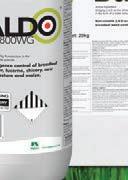





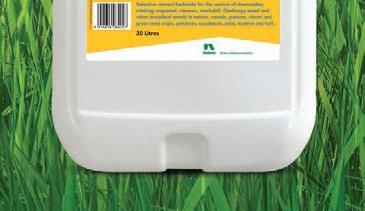




Matt Strahan Nufarm NZ Product Manager says “Look at it this way. Every weed that germinates and establishes among your new pasture seedlings represents lost potential. Weeds are free-loaders, taking everything and giving nothing in return.”



Lost pasture utilisation means lost animal production, and that comes at a cost to the farm, regardless of whether you measure it in milk solids,
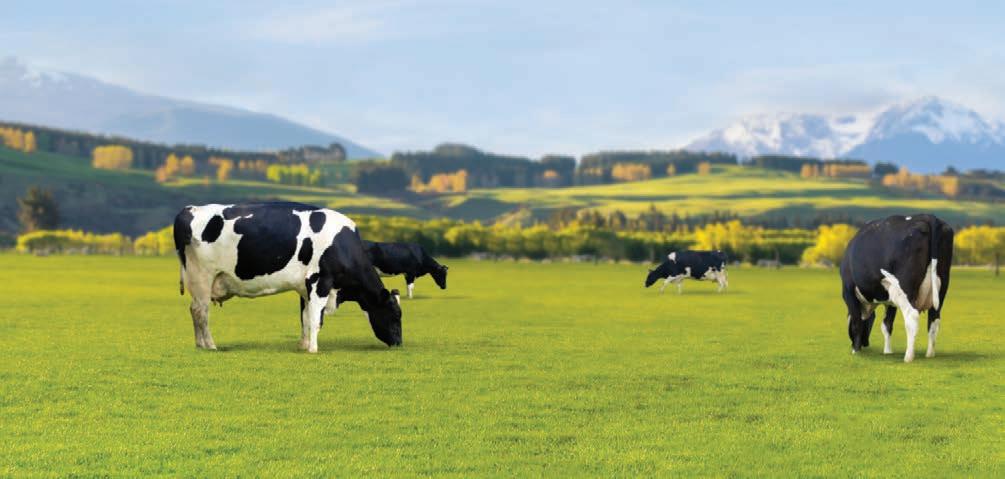
liveweight gain or the purchase of extra supplementary feed.
 Matt Strahan, Nufarm
Matt Strahan, Nufarm
“When you look at the overall cost of establishing your new pasture, including seed, fertiliser, and paddock preparation, the cost of spraying weeds is a small fraction of that investment, and best of all, it starts paying off straight away.”
You’ll get better pasture establishment, because weeds compete vigorously with young grass and clover for space, sunlight, nutrients and water. This damage is not easy to see at first, but it can permanently affect your new pasture for the rest of its life.








A well-timed weed spray also gives you better quality feed with good clover content, strong yields and high animal intake.




In fact, a new pasture spray can deliver a return on investment of $2 to $3 for every $1 invested.





Matt concludes “Pasture is your most cost-effective source of feed, and every mouthful counts when it comes to getting
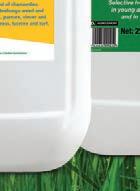
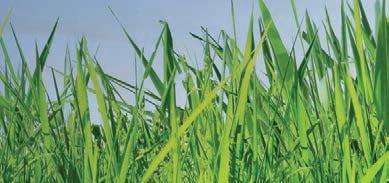







the best out of your animals in the most efficient way possible. So don’t waste your time growing unwanted weeds this autumn – knock them out of the picture now and grow high value pasture instead.”
For more detail contact your local Rural Retailer or visit nufarm.com/nz/

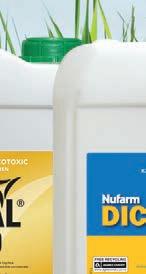

“Every weed that germinates and establishes among your new pasture seedlings represents lost potential.”

 Craig Page NEWS Agriculture
Craig Page NEWS Agriculture
STATS NZ has delayed the release of its Agricultural Production Census, saying more time is needed to gather information from farmers. Results of the five-yearly census had been due to be unveiled on May 5.
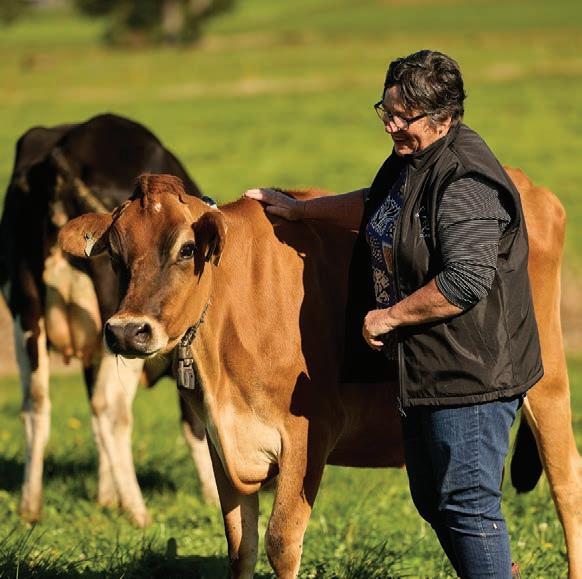
However, Stats NZ Economic and Environment Insights general manager Jason Attewell confirmed the information will now not be released until May 22.
The census is held every five years, with an annual survey carried out in intervening years, and was to have been completed in July last year. However, that deadline was extended until December 23 “to give busy farmers and growers more time to complete the survey”.
A Beef + Lamb New Zealand (BLNZ) mid-season update in March, based on preliminary Stats NZ census figures, revealed stock numbers in some categories have dropped significantly, raising
concerns that a campaign by Groundswell urging farmers to boycott the census may have had an impact. Groundswell’s gripe was with the emissions metric used by Stats NZ.
The BLNZ report showed the number of breeding ewes for the
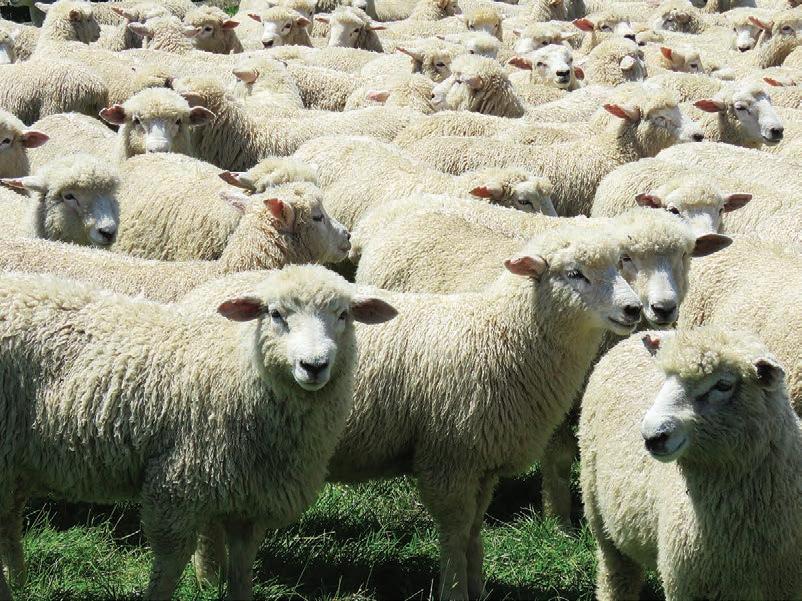
period June 2021 to June 2022 had plummeted from 16.33 million to 15.35 million (a fall of 6%) while the lamb crop had dropped from 22 million in 2021-22 to 20.2 million (8.5%) based on preliminary figures for 2022-23.
The increase in the number of
remain vigilant and keep scouting any maize and neighbouring paddocks.
farms sold to forestry was also likely to be a factor in declining stock numbers, the report said.
Attewell would not discuss the census results, saying the final stock figures and census response rate will be released on May 22.
In December, Stats NZ said 72% of expected census respondents had replied, compared with 84% in the previous census.
However, Attewell said the number of respondents who refused to take part in the census due to the Groundswell protest “isn’t significant” and does not affect the survey. Only 220 did not complete the census citing the Groundswell protest as the reason, about 0.5% of respondents.
“Stats NZ would like to thank the tens of thousands of farmers who made sure they were counted in the Agricultural Census, and who contributed to the results,” he said.
Attewell said the survey is New Zealand’s most “comprehensive, impartial and only data collection for agriculture”, and provides insights and up-to-date data about agriculture that benefits all of New Zealand.




“This information shows the importance of the agriculture sector, measures its contribution to economic growth, and provides data to enable evidence-based discussions as well as smart decision-making across the industry and the government on plans, programmes, services and investment.”
Attewell said results of the census and surveys are used by farmers, industry organisations, rural communities, the government and researchers for forecasting, policy advice, planning and investment decisions, trade negotiations, national and international reporting, and natural disaster relief (such as following Cyclone Gabrielle).
Farmers are required to complete the census, but Attewell said Stats NZ prefers not to impose penalties on those who do not, instead encouraging people to be involved.

“The more who take part will help to form a clearer picture of our nation’s largest industry, and of any changes since the last survey.”
ATTEMPTS to eradicate fall armyworm have moved to a longterm management programme, with farmers urged to remain vigilant.
As it is apparent that fall armyworm is unlikely to be eradicated in New Zealand, the fall armyworm response has ended, a Foundation for Arable Research (FAR) biosecurity report has advised.

An industry-led transition to a long-term management phase is now underway.
As the management phase begins, it is important farmers
With the “unwanted organism” status of fall armyworm revoked, it is no longer mandatory to report finds.
“However, significant observations remain important so please record them and inform us,” FAR general manager Ivan Lawrie said.
The life cycle of fall armyworm has begun to slow as temperatures get colder, but Lawrie said it is still important to stay vigilant as fall armyworms will target a large variety of crops.
They have been observed on ryegrass and clover in a harvested maize paddock. Volunteer maize
should not be overlooked either. There is a total of 139 confirmed reports of fall armyworm across NZ.
Meanwhile, nine velvetleaf plants were found in a Mid Canterbury paddock during routine surveillance this autumn.
The paddock is associated with the 2015 incursion via imported fodder beet seed.
FAR is urging all growers to keep an eye out for this weed as its seed can remain viable in the soil for up to 60 years.
Velvetleaf (Abutilon theophrasti) is originally from China and India and became a problem in many countries, including NZ.
It can decrease crop yields
and cause economic damage to agricultural production as it is an aggressive weed that quickly outcompetes crops and other plants for water and nutrients.
Velvetleaf has been present in NZ since 1948, though reports of its distribution had been limited.
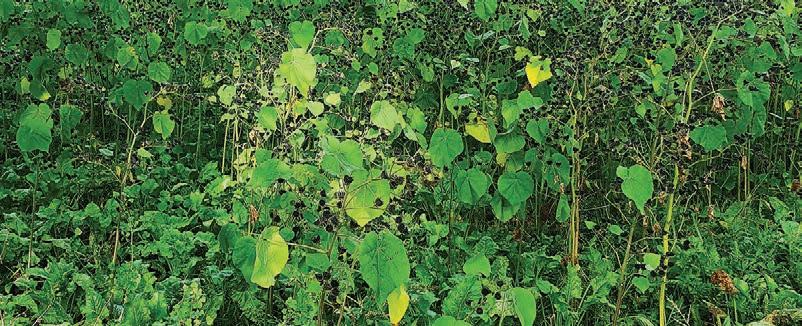
Also of ongoing concern is black grass, with FAR calling on all
Canterbury farmers to continue looking out for this pest.
Black grass (Alopecurus myosuroides) has become a serious grass weed in winter cereals in the United Kingdom and Europe, where many populations have developed resistance to many of the grass weed herbicides used in winter cereals.
The FAP assists NZAEL with setting priorities for trait breeding value and economic value enhancement, evaluating on research outcomes before implementation. The FAP is a forum for greater interaction between farmers, NZAEL staff, and geneticists.

“
“
I use my knowledge of our own herd to see if adjustments pass the common sense test.
WENDY HARKER, FAP MEMBER
The Farm Advisory Panel (FAP) ensures NZAEL is delivering a BW that is relevant to all farmers. 12 farmers with different breeds and farm systems provide a perspective on what makes a good cow.












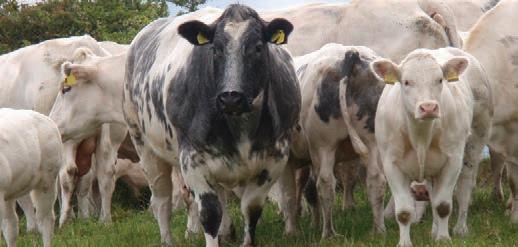 Gerald Piddock NEWS Climate change
Gerald Piddock NEWS Climate change
NEW Zealand farmers can become the heroes of climate change rather than its villains, Prem Maan says.
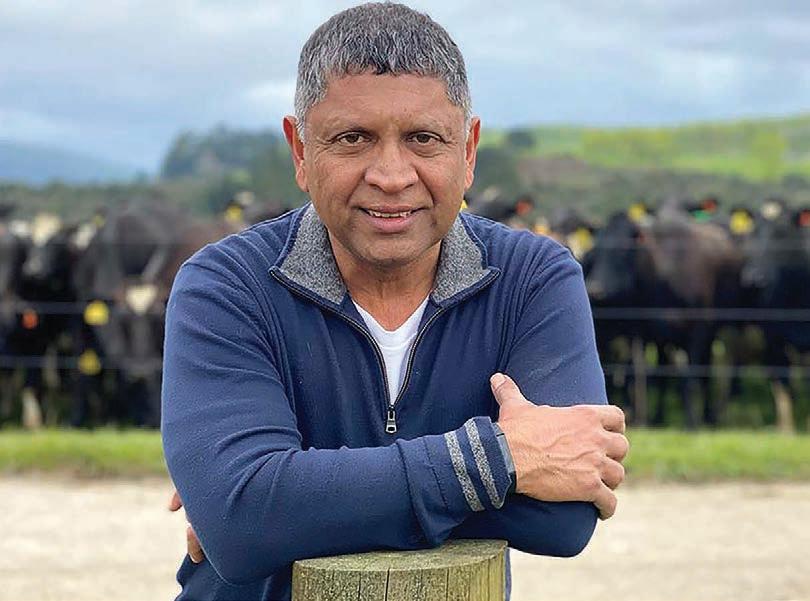
The executive chairman of dairy farming group Southern Pastures told farming leaders at an open day in South Waikato that changing that mindset comes down to how dairy is produced.
The company owns 19 dairy farms across NZ as well as Lewis Road Creamery and NZ Grass Fed Products.
Outdoor grass-fed farming with due regard to animal welfare and environmental sustainability is part of the solution to the world’s nutrition and climate change mitigation needs, he said.
“We do not share the prevailing view, the negative view among some people, that dairying is the problem. We see dairying as part of the solution to climate change mitigation.”
NZ is also its own worst enemy when it comes to supporting farmers, he said.
In contrast, NZ’s biggest competitor for sustainable dairy, Ireland, celebrates its farmers. In Germany, its citizens are proud of its car industry despite it being so fossil fuel dependent, he said. But in NZ, “people are ashamed of the dairy industry”.
“We produce the best, lowestfootprint animal protein in the world but somehow the publicity is very much against the dairy industry.”
Maan favours a cap-and-trade system rather than establishing a pricing system for agricultural emissions.
Asking how the industry can meet its climate change obligations is the wrong question, he said.
“It’s just a singular question looking at one tiny point.” Instead, a global holistic perspective is needed that looks at climate change, biodiversity and global protein needs.
“At the moment, the only way we can meet New Zealand’s climate change needs is by reducing our protein production. That’s just nonsense.”
Such a policy does not include enhancing biodiversity, nor take into consideration global protein requirements.
“There will be carbon leakage and everything they are proposing, I hate to say it, it’s nonsense. As farmers we’re shooting ourselves in the foot and shooting the planet in the foot as well.”
The industry is already the most efficient producer of dairy in the world and if emissions are reduced
here by reducing production, it will lead to leakage where other, less-efficient countries will fill that production gap.
Maan also rejected the notion that people should eat less dairy, as claimed by Eat Lancet’s Planetary Health Study published in 2019, which recommended adopting a more plant-based diet. New research from the United Nations showed that study was “bollocks”.
“Researchers are now suggesting the consumption of minimally processed nutrient-dense food and, really, what’s better than dairy?
“If we do lose production here, it’s a lose, lose, lose scenario. We really need to learn how to farm sustainably within the farmgate and within our industry and we believe this has to become possible.”
Maan is also dismissive of claims of a takeover of plant-based and synthetic milk products.
“If you want to drink chemical soup, it’s your funeral and a free world. In terms of synthetic milk, again it’s a GMO soup so if you want it, it’s up to you.”
When Southern Pastures was still just an idea, Maan said they were driven by what he and the other directors believed was the right thing to do.
What customers want and consumer megatrends drive it, not “silly government policy”, he said.

Sustainability sells, especially
with Generation Z and Millennial consumers and the dairy industry needs to take note of their spending habits, he said.
It is also the key to creating value and long-term economic success in the dairy industry. For Southern Pastures, putting that philosophy into practice meant taking its products to premium markets in the United States and Australia.
We do not share the prevailing view, the negative view among some people, that dairying is the problem. We see dairying as part of the solution to climate change mitigation.
Prem Maan Southern PasturesThere, they target consumers willing to pay extra for products with superior attributes around health, animal welfare and environmental sustainability. They also created their own 10-star certification and purchased Lewis Road Creamery, producing dairy products that are nutrient-dense.

“It has more omega-3’s than farmed fish and is essentially a health product.
“For us it’s been an amazingly satisfying journey to see the fulfilment of our vision,” he said.

signals Lincoln University’s influence in shaping the future of the land-based sector in New Zealand and globally.
STUDENT numbers at Te Whare Wānaka o Aoraki Lincoln University continue to rise, with enrolments expected to reach 4000 by the end of the year.
Vice-Chancellor Professor Grant Edwards said Lincoln’s “world class” programmes and its fees waiver scheme, brought in during covid restrictions, have contributed to the boost in student numbers.
As of May 1, 3288 students were enrolled at Lincoln, up 16% from 2843 at the same time last year. The University expects total enrolments to approach 4000 students by the end of the year.
Edwards said the strong growth
“Our world-class education programmes position our students to contribute directly and consequentially to industry when they enter employment, and our graduate employment rate of 85% is consistently the highest of all the New Zealand universities,” he said.
Edwards said research at Lincoln is increasingly leading positive and impactful change in the land-based industries “in an era where all sectors of society are demanding the application of more efficient and sustainable production practices that safeguard the environment and intergenerational wellbeing”.
International student numbers have returned to 62% of precovid levels, and the university has experienced strong domestic growth since 2019.
The number of domestic students currently enrolled, at 2534, is 57% higher than the 2019 number of 1613. The Lincoln University halls of residence are at capacity, including 64 newly refurbished self-catered units brought on stream for the 2023 cohort.
Edwards said contributing to Lincoln’s popularity is its fee waiver scheme.
First introduced in 2020 amid pandemic-related restrictions, the scheme has been extended to cover postgraduate study options until the end of 2024.
The fee waivers aim to help meet
a growing demand for experts in the food, fibre, and environment management sectors.
The most popular programmes at Lincoln this year are the Bachelor of Land and Property Management and Bachelor of Commerce (Agriculture).
Programme director for the Bachelor of Land and Property Management, Professor Graham Squires, said the popularity reflects New Zealanders’ high interest in property matters, in both a personal and professional capacity.
“The reputation of our Bachelor of Land and Property Management is underpinned by the quality of the programme and our highprofile and highly regarded teaching staff, as well as our strong industry connections. The
programme is accredited for five main industry bodies, which is a draw card for those in the industry or anyone seeking employment in the sector.
“Our close engagement with the property sector enables us to provide valuable practical experience, and the employment rate from the programme is extremely high, at pretty much 100%.”
Squires said he expects the growth in domestic student numbers will soon be matched by the emerging international market for real estate/property studies.
“Skilled practitioners in the land and property management sectors will continue to be highly soughtafter and well-rewarded going into the future, both nationally and internationally.”
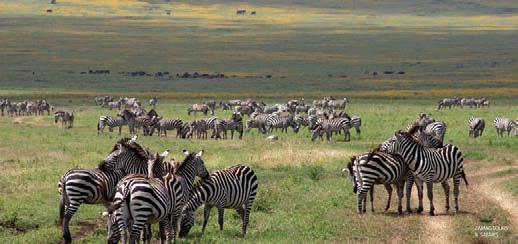


ALMOST $100 million was paid out by the Accident Compensation Corporation for agriculture related injuries last year, and injuries caused by lifting and carrying topped the list of complaints.
The figure, which includes new and existing claims, has risen by about $14m in the past five years, yet the number of new claims in 2022 (18,164) has dropped since 2018, when 21,846 were lodged.
ACC injury prevention leader James Whitaker said research shows 90% of all injuries are predictable and preventable, and those in the agriculture sector are no different.
“New Zealand agricultural workers are among the best in the world at what they do, but sometimes we don’t make the best decisions if we’re feeling tired or under pressure.”
The figures supplied by ACC encompass agriculture, forestry and fisheries and are based on information provided by claimants.
They show the total payout in 2022 was $97,987,530, and $1,629,142 of that related to fatalities. In 2018, claims reached $83,895,820 and have steadily been on the increase since.
The figures, which do not include GST, are made up of new claims and active claims – those which happened in earlier years but require ongoing costs.
Lifting and carrying strain injuries are the most common type of complaints with 3412 lodged last year, compared with 3728 in 2018.
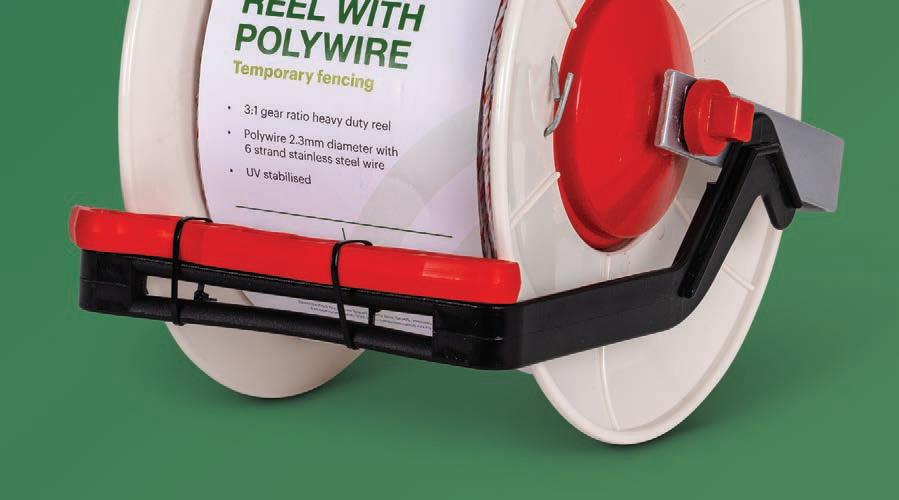
Loss of balance or personal control were responsible for 3248 claims last year, compared with a five-year peak of 3763 in 2021. People being struck by animals, or another person, also feature prominently, with 1636 such claims lodged last year, down from 2040 in 2018.
Lower back and spine injuries accounted for most claims last year, followed by finger and thumb injuries.

However, some inroads into farm vehicle safety appear to be occurring. Injuries from the loss of control of a vehicle accounted for 92 claims last year, down from 254 in 2018.
Former Federated Farmers national president Andrew Hoggard said the rise in payout costs is simply down to inflation – “it costs more to do stuff these days”.

However, it is a positive to see claim numbers dropping, he said. Minor injuries, such as strains and twists, are “pretty much” part of farming but it is the fatalities and serious injury accidents that need to be addressed, he said.
“Any death is too many.
“It’s the serious accidents, where people haven’t really thought things through or something goes tragically wrong – that’s where we have to work on getting those down.”
Hoggard said it is pleasing to see the number of claims for injuries from loss of control of vehicles drop in recent years and it shows the benefits of targeted safety campaigns in the sector.
“I think that has been money well spent.”
ACC has partnered with the Farmers Mutual Group (FMG) and the Mental Health Foundation to deliver the rural wellbeing programme Farmstrong.
“Farmstrong is an initiative to help farmers, growers, and their




families cope with the ups and downs of agricultural work by sharing things they can do to look after themselves and the people in their business,” Whitaker said.
The programme provides safety tips and tools for workers in agriculture.
Whitaker said a lot of injuries in the agriculture sector could be prevented if workers took the time to think about what they are doing before getting stuck in. Accidents have flow-on effects for friends, family, workmates and teammates.
“If we take a few seconds to think about the risks involved in
our task and make smart choices, we can be injury-free and get the job done.
“A few extra seconds could prevent a long period of inactivity and lost productivity at the other end.’’
Hoggard said the Feds’ focus this year will be in Gisborne and Hawke’s Bay and the mental wellness of farmers impacted by cyclones.
“There is so much work to be done. People are going to be putting in long hours and that raises the risk of injuries.
“So it will be about supporting those people.”
 Annette Scott NEWS Community
Annette Scott NEWS Community
HIGH demand for support funding has Rural Women New Zealand reaching out for donations to ensure the organisation can continue meeting the needs of rural communities affected by adverse events.
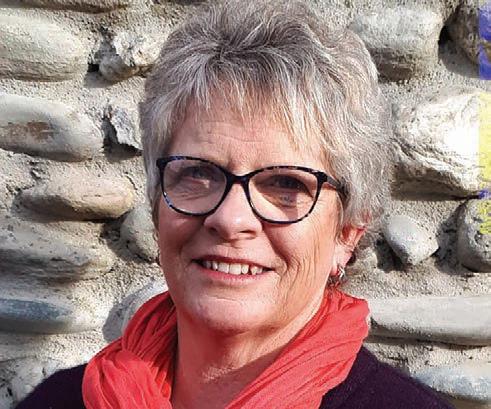

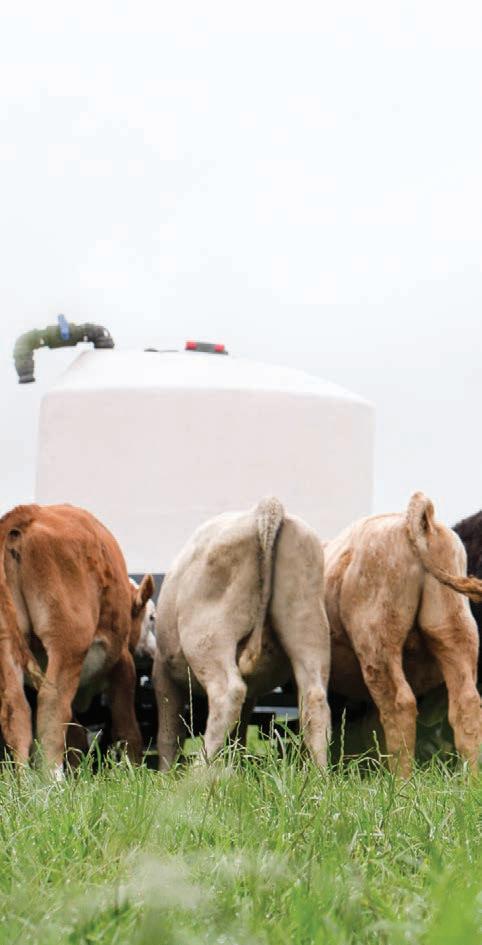
Following the weather events in the first quarter of the year, the Rural Women New Zealand (RWNZ) fund set up to help those in rural communities after adverse events has been experiencing exceptionally high demand.
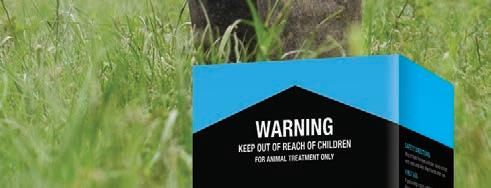


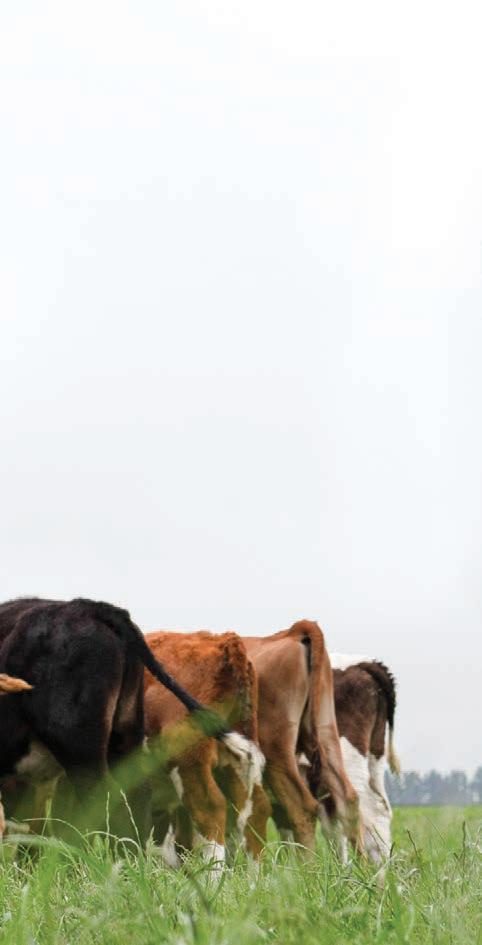
“We anticipated in February that our adverse events fund would experience high demand and that the response would be ongoing.
“This is certainly proving to be the case,” RWNZ president Gill Naylor said.
“We are very grateful for the support shown by our members, and the various groups that have fundraised for us, and the
generosity of a private benefactor.
“Together this resulted in $70,000 in funds being collected year to date.
“This, combined with existing funds, means we have been well placed to assist,” Naylor said.
But the coffers could run dry.
Up to the start of May more than $50,000 in grants has been made to individuals, families and groups in the affected areas.
The majority of grants have been for $1000 and paid out in the past month.
More than 20 further applications are under consideration and requests for

support are being received almost daily.







“We value our relationships with agencies such as Rural Support Trust and catchment group co-ordinators who are able to alert and refer those in need to this funding,” Naylor said.
For applicants who are working their way through complex insurance claims and processes for more significant funding, these grants provide speedy, timely support and are much appreciated.
“We receive feedback from grant recipients regularly.

“It is notable and humbling that their appreciation is not only for the financial
assistance but also the boost of knowing that someone cares about their situation and is willing to help.
“We know that demand will be ongoing for some time, and we encourage those who are in a position to do so to donate to the fund knowing that it provides immediate, necessary assistance to individuals and families for costs not covered by insurance or other support.”
MORE:
More information on how you can donate and how to apply to the fund can be found at: www. ruralwomennz.nz
HELPING
Gill
says demand for support from Rural Women New Zealand has increased since February.
ONE of politics’ worst-kept secrets has been confirmed: former Federated Farmers president Andrew Hoggard is to stand for ACT in the Rangitīkei electorate at this year’s general election.
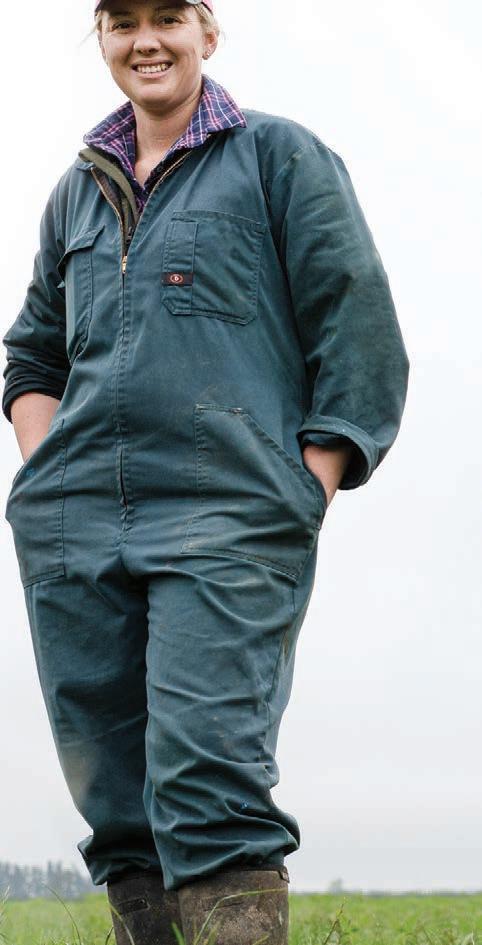
This was confirmed by ACT leader David Seymour, who said Hoggard, a Manawatū dairy farmer, is likely to be given a high ranking on the ACT list.
Hoggard said he decided to move into national politics out of growing frustration at the direction New Zealand is taking, saying the policies pursued by Labour and the Greens have made the past six years especially tough.
“When I became president of Federated Farmers, I had a goal to try to make farming enjoyable again,” he said.

“At the time, farmers were frustrated and angry, but things have become worse under this government. Farmer confidence is at all-time lows.”
Seymour praised Hoggard’s three-year role as Feds president, saying he had been at the forefront representing farmers.
“Andrew will make a superb MP and he and Mark Cameron will make a formidable team representing rural New Zealand.”
Hoggard resigned as president of Federated Farmers this week saying rumours he was going to stand for ACT had made that role untenable.
Wayne Langford is the acting president until the federation’s annual meeting later this year.

“ The gains we’ve seen are better reproduction, better six week in-calf rate and less empties.”
Mel Lilley, Mid CanterburyNeal Wallace POLITICS Elections HAND: Naylor
In 2020 the Labour Party won an unprecedented 50% of all votes in the MMP voting system, including majorities of party votes cast in 71 of 72 electorates. To get enough votes to form a coalition government after the 2023 general election, the National Party must achieve a blue wave of at least 10% across the country. Hugh Stringleman looks at the state of the parties.

IN THE red wave of Jacinda Ardern popularity that swept the 2020 election, Labour gained 11 provincial electorates, 10 of them from National.
Historically the preserve of the National Party, provincial power is more evenly shared at present –National has 16 seats and Labour 13.



Prior to 2020, Labour held only two provincial seats – Napier and West Coast – outside the main population centres.
It gained 11 more provincial seats – Northland, Whangārei, Hamilton East and West, East Coast, Tukituki in Hawke’s Bay, Whanganui, Otaki, Wairarapa, Nelson and Rangitata.



The eight it will have highest hopes of retaining are on the East Coast (Kiri Allan), in Napier (candidate not selected), Whanganui (Steph Lewis), Wairarapa (Kieran McAnulty), Nelson (Rachel Boyack), West Coast (Damien O’Connor), Rangitata (Jo Luxton) and Taieri (Ingrid Leary).







Leary made a strong first-up showing in Southern Otago, where the new seat of Taieri contains Dunedin South, Mosgiel, Outram, Milton and Balclutha, with a majority of 12,398 votes.
Labour will also be counting on retaining at least five of the seven Māori seats with the other two likely to go to Te Pāti Māori.
The red wave of voting in 2020 saw Labour make a clean sweep of the party votes in all provincial electorates.
National’s total vote percentage dropped 10 percentage points, from 44% to 34%, while Labour’s rose 12 percentage points.
The National-held electorates that were previously majorities of 10,000-plus votes lost out heavily to Labour in the party votes, and candidates had their personal majorities chopped below 5000.
Typical was Selwyn in Canterbury, where Nicola Grigg won for National by 4968 personal votes, one of the best results for National, but the party vote went to Labour by 3486.
Neighbouring National MP Matt Doocey in the Waimakariri electorate won the seat by 1507 votes but lost the party vote to Labour by 9843.
The gains at the time of the 2020 general election were Labour plus 19, ACT plus nine, Greens plus two and Te Pāti Māori plus two – all at the expense of National and NZ First.

To recall the conventional wisdom of National Party dominance of non-urban New Zealand, this is what I wrote in a 2020 pre-election article.
“National’s 2017 majorities in the provincial seats were such that most sitting MPs should only fear an unprecedented swing to Labour outside the cities.”
That unprecedented swing to Labour occurred – it achieved 50% of the party vote and 48% of the electorate vote.
It won party vote majorities in 71 of the 72 territorial electorates, the only exception being Epsom, including all urban, rural and regional electorates where National candidates won the personal vote and were elected.
National’s parliamentary presence dropped from 55 MPs to 33, while NZ First lost all its nine seats. National has subsequently improved to 34 with the Hamilton West 2022 by-election win for Tama Potaka.
The gains at the time of the general election were Labour plus 19, ACT plus nine, Greens plus two and Te Pāti Māori plus two.
The gains were at the expense of National and NZ First.
Labour has subsequently lost Hamilton West and the Māori electorate of Ikaroa-Rāwhiti, where Meka Whaitiri has defected to Te Pāti Māori.
Assuming the ACT Party retains its nine seats, National needs to win 52 seats to be able to form a coalition government, with a total vote share of 45%.









That means a gain of 18 on its current position, and that would require regaining almost all the losses of 2020 – 11 in the provinces and seven urban seats.












The enormity of National’s task cannot be over-emphasised.




In urban electorates Labour holds a clean sweep of Palmerston North, Wellington, Christchurch and Dunedin.
Four National MPs will retire at this election, all of them from provincial electorates.

Former short-term National Party leader Todd Muller has
stood down in Bay of Plenty, a safe National seat he held for three terms.
Two six-term MPs for National, Jacqui Dean in Waitaki and David Bennett in Hamilton East, are retiring.
Four-term National MP and former Manawatū district mayor
Ian McKelvie has retired, and the Rangitikei candidate selected is Suze Redmayne, producer for Coastal Lamb at Turakina.
In the Labour camp two-term Hamilton East MP Jamie Strange and two-term List MP in Rotorua, Tāmati Coffey, will not contest.
Neither will four-term MP for Labour in Napier, Stuart Nash, demoted from the cabinet recently for a breach of confidentiality.
One-term Whangārei MP Emily Henderson, who had one of the smallest majorities for a Labourwon electorate over Dr Shane Reti, will not stand again.
The biggest resignation from a Labour seat was that of former prime minister Jacinda Ardern in the inner-city electorate of Mt Albert, Auckland.

In total Labour has 11 resignations, about one-sixth of its total parliamentary strength.
The Electoral Commission will not make any boundary changes for the 2024 election, having made several in 2020 following a boundary review.
A boundary review occurs after each five-yearly census.

Each of 72 electorates presently contains approximately 65,000 to 67,000 people, including voters.

It’s early days in the intensive winter grazing season (May 1 to September 30), with signs that farmers have aligned with the permitted activity conditions in the regulations that came into e ect last November.
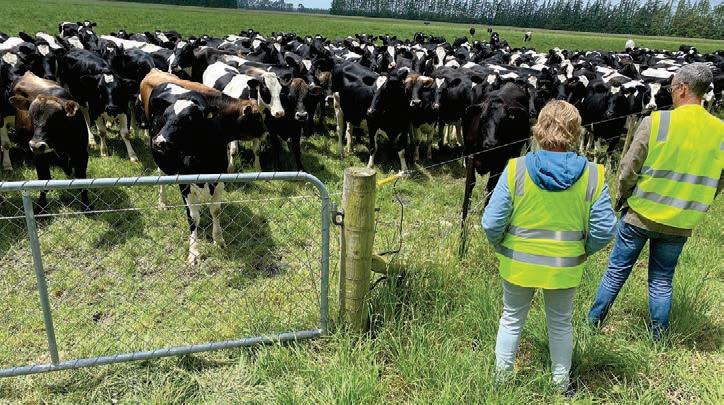

Councils in regions where winter grazing is common have reported lower-than-anticipated applications for consents.
This is, in part, due to many farmers having improved their crop-planting practices in preparation for this winter, removing the need for a consent.
Education material and an intensive winter grazing module (developed by MfE, MPI, key sector groups and regional councils) have assisted farmers to make changes, as have industry assurance programmes.
Collectively, regional and unitary councils have produced a series of winter grazing frequently asked questions. Some councils have developed advice and resources for farmers, including check-sheets, winter grazing plan templates, and have held workshops on consent requirements, with input from sector organisations.
Figures to date show councils across Waikato, Manawatū/Whanganui, Canterbury, Otago and Southland have granted around three-quarters of the winter grazing resource consents applied for, in their regions, this season.
“It’s heartening to see so many farmers are ahead of the game when it comes to protecting waterways in and around their catchments by meeting the permitted activity
conditions for winter grazing,” said Ministry for the Environment’s Sara Clarke, director of implementation.
“When done poorly, winter grazing can have negative e ects on animal welfare.
“The environment also su ers when crops are planted on unsuitable slopes or stock are grazed too near streams and waterways that are then contaminated by runo from the paddocks.
“The feedback we’re getting from some
regional councils is that critical source areas and the slope of land chosen for intensive winter grazing are the main reasons farmers are applying for a resource consent.”
Freshwater farm plans, in some cases, will be able to be used instead of obtaining a resource consent. The farm operator will need to show, however, that any adverse e ects caused by winter grazing are no greater than those allowed for under the permitted activity (default) conditions.
The gazettal (noti cation) of the freshwater farm plans regulations is expected within a month.
Following noti cation, the regulations will be turned on a couple of months later in Waikato and Southland, with other regions to follow. Councils will have input into the schedule for freshwater farm plan rollout catchment by catchment.
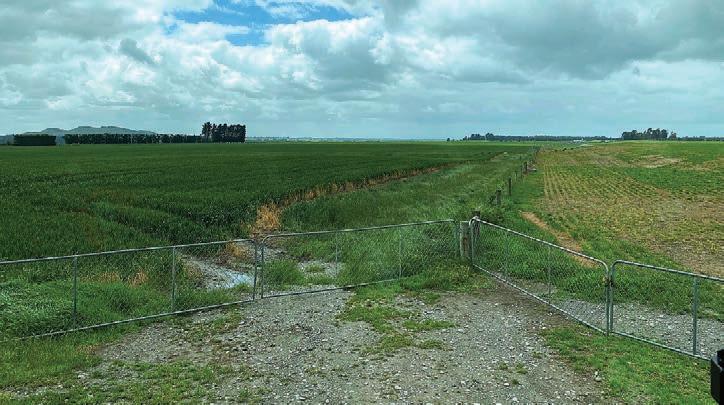
The Ministry for the Environment has been working closely

with Te Uru Kahika (Regional and Unitary Councils Aotearoa), as well as speci cally with Waikato and Southland councils to ensure all with a role to play are ready for the regulations and that plenty of support and guidance will be available.
MfE sta will also be at National Fieldays in June as part of the EPA Sustainability Hub – drop by if you want to nd out more about freshwater farm plans or other
regulations relevant to the rural sector.
We encourage farmers and growers to watch for freshwater farm plan updates in newspapers and online, as well as from their regional council, MfE, MPI, farm adviser or industry body. The freshwater farm plan system will be turned on across the whole country by 2025.
If you already have a farm environment plan or are part of an
industry assurance programme, keep doing what you are doing. We have been working with industry groups and providers to help them update their programmes.
Take the time to understand your local waterways, not only on your farm but within your catchment.
Taking action now to address farming risks and e ects will be rewarded when the time comes for you to develop your freshwater farm plan.
For further information about winter grazing in your region, contact your regional or unitary council.
Dr Ross Monaghan, a senior scientist at AgResearch, is a leading expert on the impacts of animal wintering on soil and water quality.
In an earlier article published in Farmers Weekly he and the Ministry for the Environment shared some of the latest thinking regarding intensive winter grazing.
“The intensive winter grazing regulations recognise the need to focus on areas that are prone to contaminant loss, in order to reduce waterway pollution. Winter grazing typically sees high stock densities grazing at a time when the land is least able to handle the activity,” said Ross Monaghan.
This greatly increases hoof damage to soil (pugging) and can potentially result in signi cant nutrient, sediment and faecal microorganism discharge into surface or ground water.
As a result, winter grazing areas are hotspots for sources of contamination, making them “low-hanging fruit” opportunities for reducing waterway pollution.
Scan the QR code to read more about the science behind the winter grazing rules.
 Animal welfare is enhanced, the land recovers more quickly, and waterways are protected when winter grazing is done well.
Animal welfare is enhanced, the land recovers more quickly, and waterways are protected when winter grazing is done well.
Sporting Hunters Outdoor Trust

THE letter of David Field, “Destructive species” (May 8), is wide of the mark ecologically in its hatred of cats, whether domestic or wild. I agree with him that cats are killers, as any predator is. But they kill only for their needs, that is, food. It’s no different to any predator – man included. They kill.
While I probably don’t reach the dizzy heights of David in background, my experience goes back as a young forestry trainee on the first trials of about 1958 in the Caples Valley at Lake Wakatipu and subsequent “pest” work with the Forest Service and regional councils plus a lifelong love of the wilderness recreationally.
Removing a predator from a food chain invariably has adverse effects. A classic case was Macquarie Island, south of Tasmania, a rainy, windswept place teeming with wildlife. But things changed due to man’s interference.
UNTIL a few months ago, the animal protein sector looked destined to share the fate of the tobacco industry. Meat and dairy were the new global pariah and, like a tired boxer, the sector was backed into a corner being pummelled by successive claims that if consuming animal protein wasn’t killing you, then farming animals was destroying the planet.
But in recent weeks science and reality have challenged that narrative.
A United Nations Food and Agriculture Organisation study shows that, globally, more than a billion people depend on livestock for their livelihoods, nutrition and health.
Another international study, published in the science magazine Animal Frontiers, concludes that “regular consumption of meat appears to bestow multiple and important nutritional benefits”, and that expanding animal production is the most readily available way to nourish the world.
Earlier this year more than 900 scientists at a conference in Dublin called for an end to the “zealotry” in the promotion of veganism.
The resulting Dublin Declaration called for an acknowledgment that livestock systems are too precious to fall victim to “simplification reductionism”.
On another level, farmers in the Netherlands are fighting plans by their government to buy out 3000 farms to meet European Union nitrogen and greenhouse gas emission targets.
The protesters also spawned a new farmers political party with representation in the Dutch parliament.
The second-largest exporter in the world of agricultural products by value, the Netherland was headlined in a 2017 National Geographic article as “This tiny country [that] feeds the world”.
On the other side, some plant-based protein companies are posting huge financial losses as consumers are turned off by the taste and texture of their product, while Food Navigator reports investor resistance to firms in the sector trying to raise capital.
A report in New Scientist magazine cites research analysing the cradle-to-grave life cycle of lab-grown meat as 25 times worse for the climate than regular beef production, due to the energy intensity required for its manufacturing

Alternative protein production methods will become more efficient and taste and
texture will improve, making these fillips for animal products little more than an interlude in the constant attacks.
But they show that it is not all one-way traffic – that science, reality and common sense offer constructive counter arguments.
The biggest challenge for governments introducing greenhouse gas reduction policies was always going to be public resistance to the ensuing economic and lifestyle impacts, as is playing out in the Netherlands.

That has been accentuated by global food shortages and rampant inflation, hardly conducive to policies that, given current technology and limitations, restrict food production.
For some time now the animal protein sector has been seen as a soft target for policy and decision-makers seeking quick gains and populist plaudits for addressing climate change.
For example, multiple schools, universities and councils in the United Kingdom have decreed that only vegan meals will be served.
Certainly greenhouse gas emissions from livestock need to be reduced and the environmental impact lessened, and that is happening – a factor critics often overlook or ignore.
But as scientists are proving, ceasing livestock farming would come with nutritional, economic and socio-cultural consequences that cannot be ignored.
Finally the fight back is underway.
An article from Quadrant Online 2012 said: “The changes began with the extermination of the feral cats between 1985 and 2000 in an attempt to restore the island and its bird population to its pristine state. This led to an explosion in the rabbit population once feline predators had been removed. Attempts to control the rabbits started as early as 1968, but with little success. It now appears that it was primarily the cats keeping them in check.”
The rabbits devastated the island and copious tussock grasses that had consolidated the steep slopes were almost entirely denuded. This resulted in a loss of habitat for nesting birds and an increased number of landslides.
You’d think people might learn from past mistakes because in 1867 the New Zealand weka was introduced as a source of food. Tasmania’s Park Service said: “The weka put pressure on the native Macquarie Island parakeet and rail, and the species became extinct on the island. Weka numbers declined in the 1980s and the last weka was dispatched in 1988.”
Feral cats had been recorded on the island way back in 1820. Everything was in equilibrium ecologically.
It’s the same with poison in New Zealand. Aerially spread for rats, it knocks them back, with a low percentage (10-15%?) surviving. But rats are superb breeders. Eighteen months later, the rats have bred back to pre-poison levels. Three years after poison the rat numbers are three to four times original numbers – a veritable plague of rats.
Then the main predator of rats, stoats, with
Continued from previous page
abundant food, spiral into a big population increase.
Ill-directed interference with nature’s food chain equilibrium is invariably counterproductive and disastrous.



SEEING in the latest Farmers
Weekly the straits in which cyclone-affected rural residents find themselves, I hope we will refresh our memories about the experiences of those who suffered through the Canterbury earthquakes: the insurance companies would not pay them out, stating this was because they “could not know” how much of the burden the government would undertake.
Many policy holders still suffer heartbreak these seven years later, not having received the insurance money they paid premiums for.
Gabrielle victims take note.
If someone buys hazard insurance covering flooding and storm events, they are not informed beforehand that the company won’t pay out until the government contribution is known.
If one purchases a policy seemingly suited to the potential size of the risk, say $10 million for a typical dairy farm, it isn’t legitimate to, without disclosure, reduce that payout by – and delay it until – a government rescue package is either paid or ruled out.
There is a legitimate concern in such circumstances that those who forego insuring their property are entitled to the same level of compensation as those who purchase insurance. Who would buy insurance if they see their neighbor without it bailed out by the government?

The government needs to get tough on insurance companies to pony up to their paying customers. Unfortunately, there seems to be an aversion to treating businesses in such a manner, a holdover from past experiences perhaps, in which the departure of a service-provider might mean no service at all.
FOR many of us, especially gardeners and farmers, it seems as though science changes its mind about long-held “facts” every five minutes, and the latest to be found inaccurate concerns humus.
For around 200 years we’ve understood that all those dead leaves and other decaying plant matter that fall to the soil are fragmented and broken up by insects and other larger soil organisms before being absorbed into the soil as small organic fragments. These fragments are then further decomposed by microbes to create particulate organic matter, ending up as humus – which lasts a very long time.
Different plants produce different exudates, which feed different microbes, which supports the concept of plant variety being needed for healthy soil. Symbiosis is always a two-way street.
But now we need to look at the living plants on the surface, which are photosynthesizing with their leaves and passing a large proportion of this as exudates of sugars and proteins down through their roots to feed the soil microbes and mycorrhizae, which return the compliment by supplying the minerals the plant needs.
Different plants produce different exudates, which feed different microbes, which supports the concept of plant variety being needed for healthy soil. Symbiosis is always a twoway street.
In the last decade, with new equipment, a number of the science fraternity have been looking more closely at POM and now consider that, on its way down the soil, microbes have devoured most of the carbon and broken down the remainder and put them inside soil particles, especially clay, where they are protected to form mineral associated organic matte, and it is this that can persist for centuries.

Thus it’s the roots of living plants, coupled with their microbial rhizosphere populations, that are making use of what comes down from above, to enrich the soil sufficiently to produce more above-ground crops. Maybe we should start thinking “keep soil rooted” rather than focusing on what we add on the surface.
Other scientists are carrying this idea further in relation to long-term underground storage of carbon. While many, including the Intergovernmental Panel on Climate Change, have built their climate models on the idea of soil sequestration, and stocks of longterm carbon have been found, computer models that predict the greenhouse gas impacts of farming practices, which are being used in carbon markets, are probably overly optimistic about soil’s ability to trap and hold onto carbon.
It had been thought since around 1786 that humus contained large molecules of long
TURNING SOIL: The need for a variety of plants on top, and a goodly population of soil life and microbes underneath, has to be the main focus for both farmers and gardeners.
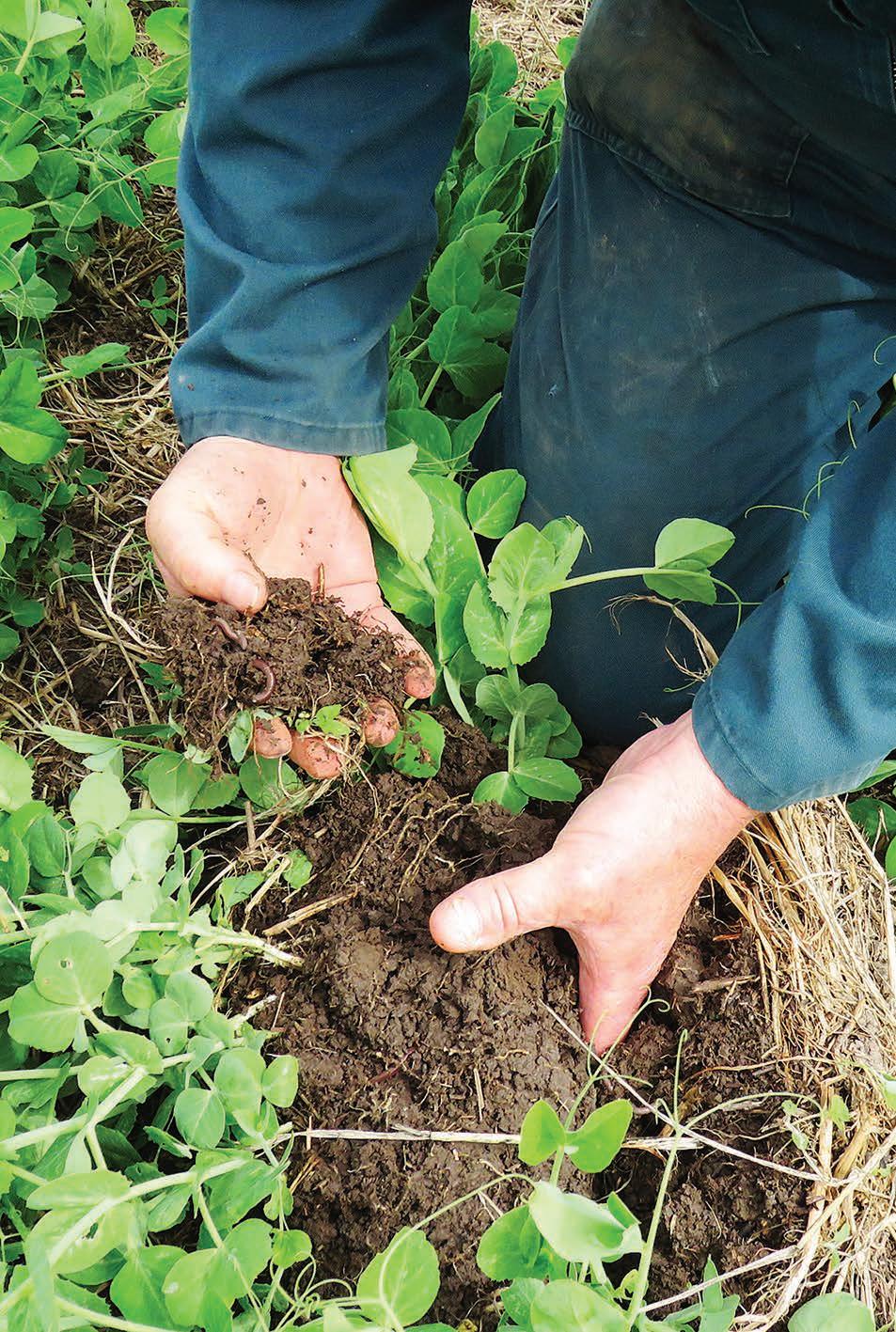
carbon chains that were too large to be eaten by microbes. The new equipment can be used to look at soil in place in the ground, rather than having it removed to a laboratory. This new method has disproved the existence of long carbon chains, and found everything to be small and devourable. Thus the existence of humus has now been debunked; it is microbes, minerals and microscopic soil particles.




This puts the need for a variety of plants on top, and a goodly population of soil life and microbes underneath as the main focus for both farmers and gardeners. If the soil is too disturbed, or what has been applied on top, both helpful and toxic, has killed off our underground friends, then the
next lot of plants may find that one half of the symbiosis isn’t around to do what they are expecting.
Got a view on some aspect of farming you would like to get across? We offer readers the chance to have their say. Contact us and have yours. farmers.weekly@agrihq.co.nz Phone 06 323 1519
is beyond me and think of the example he’s setting the younger generation. They’ll grow up thinking eating tarragon, broad beans, spinach, fruit and nuts is normal. Mind you the good news is that if they do follow that diet then the English are finished as a rugby-playing nation.
It all came across to me as a largely irrelevant and expensive circus and basically meaningless to New Zealand today.
Alan Emerson Semi-retired Wairarapa farmer and businessman: dath.emerson@gmail.com
IDETECTED some excitement around the traps last week and believed it must have been the Mighty Hurricanes game against the Fijian Drua that was responsible. I’ve played rugby in Fiji and it was a great experience but they are tough, as they certainly were against the Hurricanes.
Alas, however, it wasn’t the rugby but a coronation that created the excitement. How could I have missed that?
The papers have been full of it. We even heard our prime minister was invited to meet the King, who supplied sausage rolls. The only thing missing was tomato sauce, which indicated a distinct lack of class. Sausage rolls without tomato sauce is a little like a glass of tonic with no gin in it. Unacceptable in my circle.
Then we read, horror of horrors, that the dish the King would celebrate his coronation with was a quiche. No, I’m not joking. His quiche will contain tarragon, broad beans, spinach, cream, English cheddar and eggs.
It gets worse as you can read that the King only eats fruit and seeds for breakfast and doesn’t eat lunch.
With the exception of cheddar and eggs, it seems singularly uninspiring
Tarragon, or Artemesia dracunculus to those with a Lincoln education, prefers poor soils and is a carcinogen in mice so I’d leave it alone.
Broad (Fava) beans are high in potassium and protein, which is fine for those missing those essentials in other foods.
Spinach is 91% water and originated in the old Persian Empire. My wish is that it had stayed there but the chooks really like it.
And, as we’ve all been told, real men don’t eat quiche.
It gets worse as you can read that the King only eats fruit and seeds for breakfast and doesn’t eat lunch.
Why the King didn’t have a good feed of lamb shanks or some nutritious steak and onions
For a start I found the pomp and ceremony ridiculous and think of the effect on the climate. Hundreds flying in first class from around the globe. The motorcades and fly-pasts. It makes our cows’ emissions pale into insignificance.
I just wonder: if they planted their estate at Sandringham in pine trees would it make the coronation carbon neutral? As there’s 6400ha it should do, but the pheasants might object.
The coronation was interesting just viewing the incredible wealth of the Anglican church. They also seem to have a licence on pomp and ceremony, which would be largely irrelevant to most, including the over 90% of Kiwis who don’t go to church.

Where I had some difficulty is putting up with the media frenzy over the event here in NZ, especially considering two thirds of Brits either didn’t care about the coronation or cared very little.
Watching Al Jazeera on the eve of the coronation I was a little surprised to see Māori co-leader Rawiri Waititi telling the world that the British royal family were “war criminals”.
He then claimed that the Māori King was attending the coronation “as an equal”, adding that “Māori people do not care what nonMāori think’”.
I’m sure those viewing from Al Jazeera’s 80 million households were entertained by the comments.
The cost of the coronation is obscene, estimated at $203 million. That’s on top of the annual bill for supporting the royals at $1 billion.
Mind you, maintaining the King’s presence in NZ through the governor general’s office doesn’t come cheap either at $9,368,000. That’s equal to a lot of pothole fixing on our rural roads.
The final iniquity for me was the suggestion we all swear allegiance to the King.
We were even provided with the words: “I swear that I will pay true allegiance to Your Majesty and to your heirs and successors according to law. So help me God.”
You’d have to be joking.
Allegiance, according to my dictionary, is “loyalty as of a subject to his sovereign or the obligations of a vassal to his liege lord”.
My view, as you may have guessed, is that it is high time we became a republic. I don’t want to be a subject to anyone and NZ in 2023 shouldn’t be swearing allegiance to a person or persons thousands of kilometres away who is there by birthright alone.
THE government is rolling out legislation that will see every farm required to have a mandatory “Farm Plan” through their local council. Another piece of compliance for farmers. Another
thing to be certified and audited. Another cost. Millions of dollars being wasted on unnecessary box-ticking, meaning less money for environmental actions on the ground.
It isn’t just farmers and rural communities who are opposing this approach by the government; even some regional councils have made their disagreement clear. However, council concerns about Farm Plans have also been ignored by central government.
The core issue that is being universally opposed is the way the regulation is set to be state controlled and a one-size-fitsall. Additionally, it has been introduced in a scattergun manner with Farm Plans popping up in legislation relating to freshwater, climate change and environmental reforms to replace the Resource Management Act.
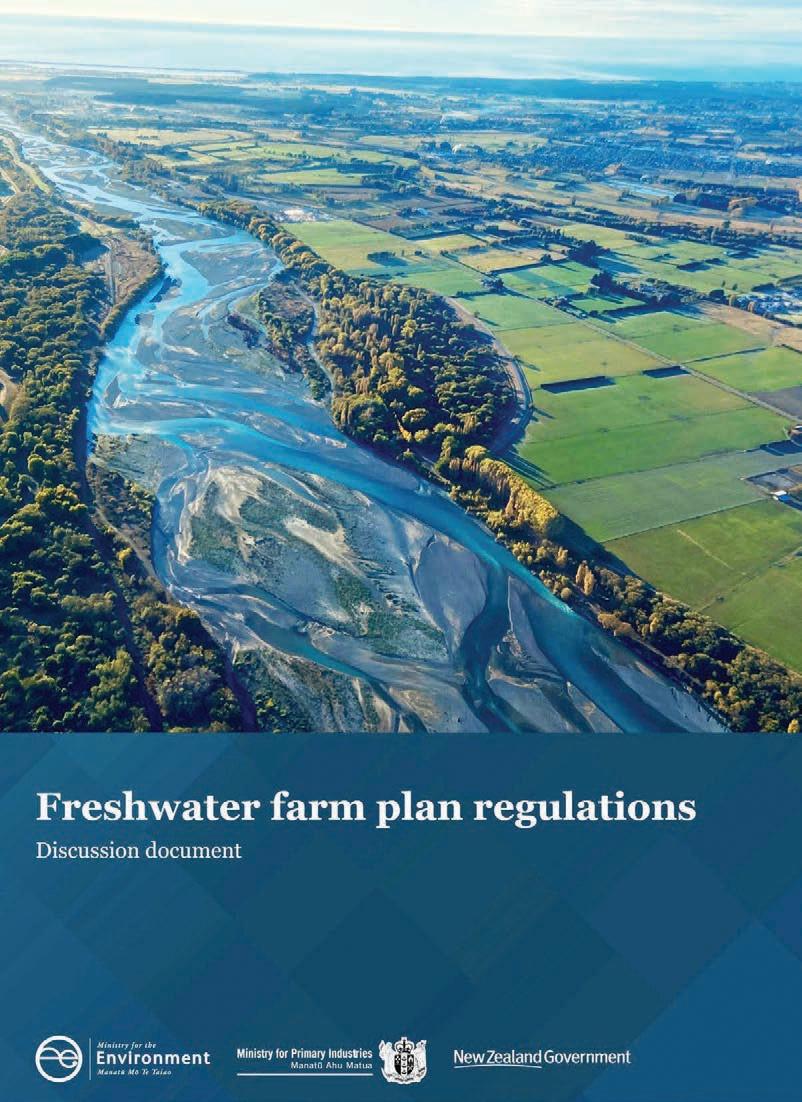
Farming groups, councils and people in rural communities are calling for partnership with farmers to be prioritised. Yet, for around a year now, there has been little clarity as to what is being worked on, leaving farmers uncertain about how this will impact them and when it’ll be dropped in their laps.
Groundswell NZ is urging the government to go back to the drawing board and to relook at an industry-led solution as proposed by farming groups. For Farm Plans to be successful, it is essential to have farmer buy-in and involvement in developing them.
The government’s mandated model has major detrimental
Continued next page
We are moving house. We’ve bought a house 10 minutes away to allow the next generation to live and run the farming business from here.
And they have made it clear they don’t want anything left behind. That’s fair enough, and given this week’s experience it will make their own shift in the distant future easier.
This has been my home base for 62 years and I’ve lived here for all but seven of those years. Jane and I have lived here together for nearly 40 years.
Steve Wyn-Harris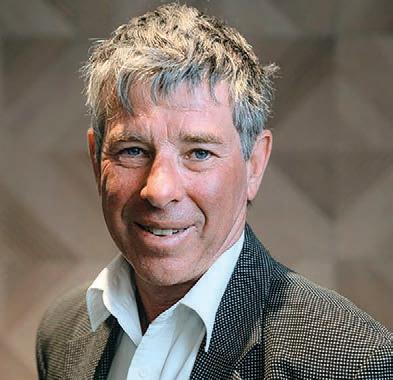
IBET hoarders don’t reckon they are hoarders. I certainly am not one. But I do seem to have accrued quite a bit of stuff over my lifetime.
I see a definition of a hoarding disorder is where someone acquires an excessive number of items and stores them in a chaotic manner, usually resulting in unmanageable amounts of clutter. The items can be of little or no monetary value.
I wouldn’t say there has been any chaotic storage going on around here, or unmanageable amounts of clutter for that matter.
The definition of a compulsive hoarder is a persistent difficulty discarding or parting with possessions because of a perceived need to save them.
I haven’t had a persistent difficulty in discarding but must admit to being challenged somewhat this week in discarding a few long-held and treasured possessions.
Continued from previous page
implications for farmers compared to the industry-led approach advocated for by the farming sector. Many farmers remain confused about all the different Farm Plan approaches.
It is a recipe for failure to mandate all farmers have a government-prescribed, one-sizefits-all Farm Plan regardless of the farming activity, the catchment or region they are in, or the effects of their activity.
It is an unprecedented level of state control that would never be allowed under the original Resource Management Act, but this government is set to remove the protections ordinary citizens used to have from unrestrained state control.
Privacy and safety are other major concerns as state-controlled Farm Plans would be publicly discoverable, meaning farmers’ private information would be accessible to the public and environmental lobby groups.

So I have never had any need to declutter my own stuff before. And some of those possessions were my parents’ and even grandparents’ things. Jane of course brought her own family history with her; we’ve bought furniture to bring up three sons and we’ve even ended up with their things as two of them are still migratory.
I suggested to the incomers they at least let us leave the antique Welsh dresser
My distant ancestors built it themselves and inscribed E&I and the date 1763 on it. I look at it and think of that Davies family eking out an existence in the brooding hills of Wales 260 ago.
But the next generation said no, they didn’t want it and there was no way it was going on the bonfire that has been fed all week by my own history, so we are taking it to store in case one of the other two put up their hand.
Years ago I did a fun television programme where Dick Frizzell taught 10 of us farmers who had no talent or training in art to paint. Some of my mates turned out to be surprisingly good.
This could prove to be a real risk to property and personal safety.
By contrast, the industry approach to Farm Plans is centred on a partnership with trusted advisers who help farmers plan and review actions to address the priority environmental issues relevant to their farm, the particular catchment, and the resources available to them.
The Taranaki Regional Council (TRC) is dismayed at the likelihood that its hard work developing positive working relationships with farmers in its region over the past 25 years will all be undone by the government’s dictatorial approach. The council made a submission expressing its opposition to this model for Farm
But not me. My painting of a lonely winding CHB road has never hung on a wall and had no chance of doing so in the future. All the same, I had great difficulty throwing it into the all-consuming flames.
I had a grandfather who was a governor general in Africa in the dying days of colonialism.
For 80 years several large albums of photos and newspaper cuttings have been stored in that dresser. Photos of him with the Duke of Edinburgh as they boated up the Gambia River, shot crocodiles, and sat down to longago banquets. And of elegantly dressed Africans engaged in everyday life.
Unlike the painting, I couldn’t burn these, and they remain in the dresser while I work out what to do with them.
When I was a hippy in Asia in the early 1980s I acquired a couple of Indian batiks of Shiva and Vishnu and, once back, got them tastefully framed.
Plans. A model that it says it does not want and neither does the community.
The TRC’s submission states the government model will come at a significant cost to the council and landowners.
This will inevitably cause a knock-on effect to ratepayers for an outcome that is unlikely to achieve any significant water quality improvements over and above current initiatives.
Farm Plans must be empowering. They must be a partnership between the farmer and their Farm Plan adviser(s) with the flexibility to meet each farmer’s needs while targeting the key environmental issues on each farm and catchment.
Groundswell NZ has called for farmers to refuse to do government-mandated Farm Plans. We urge all farmers to take part in this protest action, which will help farming advocates and regional councils lobby on our behalf for an industry-led approach instead.
They only got to display their splendour for about a year; once we got married they were consigned to a cupboard with my other tasteful art.
Then poor old Shiva and Vishnu were consigned to the heavens in a column of smoke along with my other paintings, but Jane’s are coming with us.
I have never had any need to declutter my own stuff before. And some of those possessions were my parents’ and even grandparents’ things.
I’d kept my first PC, a Windows 95, along with the now oddlooking box-shaped monitor, reckoning these would make great museum items one day.

Sadly not, as they headed towards the dump.
I’ve kept my music records as
they are back in fashion but went through the tapes and CDs and kept only the best. Just in case. A big problem were the books. We’ve always loved books and have a large bookcase to house them, but the incomers said take them all.
We’ve got books that are 150 years old through to recent ones we’ve enjoyed.
We went through book by book and managed to send a good third to the Lion’s Bookarama fundraiser but with no bookcase at the new house, the rest have been boxed and shifted, delaying the inevitable I suppose.
There are now a large number of banana boxes in the shed at the new house and when we have a bit more time will have another round of reducing and decluttering.
Now we are in an empty house with just a bed, fridge and computer as we clean and paint, readying ourselves for our final departure in the next few days.
The core issue that is being universally opposed is the way the regulation is set to be state controlled and a one-size-fits-all.
The New Zealand Hereford Tour, a four-day tour of Hereford stud farms throughout the South Island, was held earlier this year. Sponsored by Public Interest Journalist Funding and AgriHQ, Emma Blom caught up with some of the characters who have worked to develop the breed in this country.

PERU has never been a priority export destination for New Zealand trade, but in 1952 Doc Sidey’s father clearly had an entrepreneurial mindset, embarking on a one-man mission to sell Corriedale sheep in South America after receiving funding from the World Bank.
The stud had been established in 1923 with high quality sheep focusing on meat and wool, and Sidey snr was a man on a mission.
The trip was successful, and 70 years later rams are still being exported from Glenovis. Four rams have been sold to Peru in the past three years, including Ram K-145 in 2022.
Doc Sidey believes K-145 was the oldest ram ever exported at seven years old. In 65 years working and improving the stud, Sidey snr had three to four “superheroes”, and K-145 was one.
Doc inherited the Corriedale stud from his father and wanted to create his own legacy. After 49 years, Jandoc Hereford is a wellestablished stud thanks to Jan and Doc Sidey.
Hereford breeding is a hobby but at the end of the day bulls still need to be sold in the market and the current market demands polled animals.
Doc Sidey Jandoc HerefordThe herd was built up from five heifers and later 36 females were introduced from nine different herds.
Today 75 calves are born annually with a focus on fertility, calving ease and milk blend.
After careful selection, only five descendants from the original herd remain.
Minimal modern genetic technology is used on Jandoc. Through experienced stockmen, animal selection is made on the structure and cosmetics of the cow. The next step is improving carcase data and polled animals while holding on to the genetic heritage of horned Herefords.
Hereford breeding is a hobby but at the end of the day bulls still need to be sold in the market and the current market demands polled animals, Sidey said. One of his cows, Jandoc Leonora, became a legend in the Christchurch show after having spent 36 days of her life on the show grounds.
In her first year in the competition, she came straight from the hills to place as reserve champion in her class. For the next
ROB and Mary Ann Burrows are the proud owners of Beechwood Polled Herefords alongside Rob, Julie and Roz Stokes in a share farm operation.
Rob Burrows’ mother started the horned Hereford herd back in 1962 after being given Herefords by her husband. Sixty-one years later the Herefords are still a big part of the family.
The Beechwood Herefords came from the Williams family in West Coast and the Buicks in Wairarapa. Over the years selective breeding has produced some wonderful bulls, including Incognito 70 and In time 7.
Burrows focuses on keeping birth weight well below average and all
the other traits well above.
This means the sires are fit for the dairy beef industry, with smaller offspring easier for dairy cattle to calve and a promising growth rate. If the sires are successful in the programme, 10,000 semen straws will be used in the dairy sector.
The Burrows moved from Culverden to an 8ha block on the outskirts of Rangiora, Canterbury. Shortly after that they expanded the property, purchasing the 37ha block from the neighbours and are currently leasing 35ha at Leithfied.
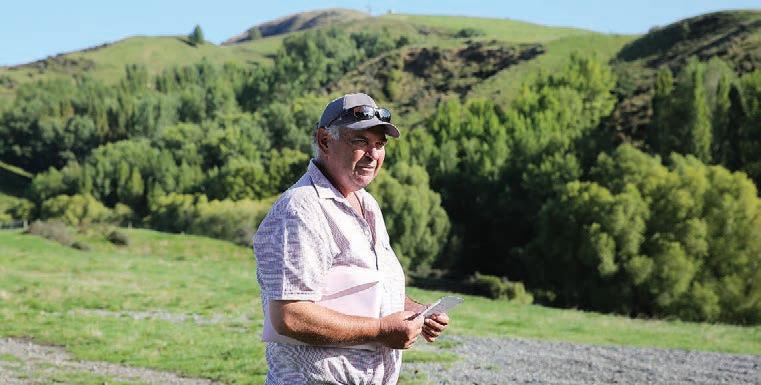
This enables the stud to have a 300-cow herd with eight yearling bulls used between the home block and Less Valley, where the Herefords are wintered.
Girl 510 of 2005 has been Burrows’ highlight, consistently
getting in calf after the first cycle and raising 18 calves in 16 years, including two sets of twins. Burrows is expecting another calf from her this season. Over winter, when the 70 heifers are on kale, the old girls get “some ‘extra tender love and care”, Burrows said.
Another special mention goes out to Bull 17, with a scrotal size Estimated Breeding Value of 5.2. The contract between Stokes and Burrows for the stud was professionally drafted – but eight years later the pages still do not carry a signature because “the two Robs are easygoing”, said Burrows. The strong relationship allows for Beechwood Poll Herefords to thrive, with all parties involved to working together for the future. They have agreed, verbally, on a succession plan for the stud.
six years Leonora was champion and on the final year of her showing the Aussie judge broke the winning streak, placing her as reserve champion.
Leonora had favourable genetics with plenty of descendants and produced one successful bull, allowing her legacy to live on in the Jandoc Hereford stud.
JUST shy of Cheviot in the Hurunui District of north Canterbury, the Jeffries family farm Angus, Hereford and Romney stock on a 600ha block consisting of medium and steep native hill, 70ha of medium downs and 80ha of irrigated pastures. This allows the family of four – Chris, Amanda, Gus and Maddie – to carry around 3000 stock units including registered Angus and Hereford cows.
The family work together on business ventures, including a vineyard in East Marlborough contract growing sauvignon blanc on a 27ha block for Whitehaven. Maddie is studying viticulture and oenology at Lincoln University. The university holidays are perfectly timed for Maddie to help with tractor work on the vineyard. Gus also helps on the farm and intends to start a heavy diesel
mechanic apprenticeship.
Tom and Suzanne Jeffries established Grassmere Herefords in 1966. Chris grew up with Herefords and took over the stud from his parents, calving about 100 Hereford with a similar amount for Riverlands J Angus, the subsequent stud. Both breeds have similar growth rates and produce quality beef, and Chris enjoys working with both breeds but notices a better temperament with Hereford cows.
“My direction is exactly the same with both breeds,” he said. The future of the studs includes growing the number of bulls available for the annual on-farm sale, when Hereford and Angus bulls are sold.
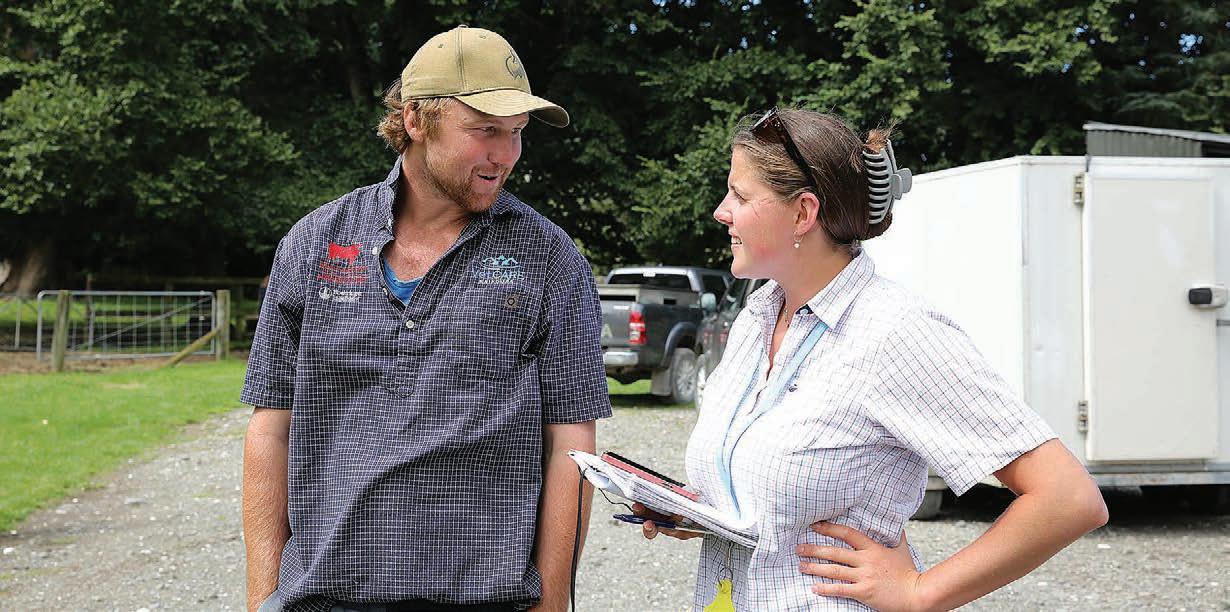
“With breeding plans, Chris can take the cows in a controlled direction by using available technology and data to follow genetics.
“The technology is there to use,” creating a better bottom line for the stud and ultimately the clients, Chris said.
New agricultural models developed with funding from the Our Land and Water National Science Challenge look ahead to what NZ farmers could be growing for the good of the environment and their bottom lines.
AS CANTERBURY dairy farmers look to diversify land use, adding wheat production could make New Zealand self-sufficient in wheat while reducing greenhouse gas production and water demand.
The warm aroma of freshly baked bread is hard to beat. But surprisingly, even though we grow 452,000t of wheat in NZ, we import about 70% of the wheat we use to make our bread from Australia.
developed for the NZ arable farming sector looked at how to achieve this, with funding from the Our Land and Water National Science Challenge. Producing up to 700,000t of wheat is needed annually to cover current shortfalls and low production years, and meet dairy sector needs.
The modelling showed, at current yields (9.9t/ha), an extra 25,000ha are needed to achieve self-sufficiency in milling wheat for human consumption – an extra 250,000t. Widespread use of precision agriculture to improve yields (to 12t/ha) could see this drop to an extra 20,000ha.
From the environmental side,
in wheat cropping, Lawrie said. Land could be freed up to accommodate extra wheat production as dairy farmers reduce stocking rates in response to freshwater and greenhouse gas regulations.
With their own machinery and tractor driver, they can do a reasonable amount of the work themselves. Alternatively, a contractor could come in to do the sowing, tillage and harvesting as required.
“Leasing out the land to an arable farmer who would grow a crop and pay either a lease or a percentage of the crop to the owner of the property is another option,” Lawrie said.
There are specific requirements around storage and conditioning of grain, which would see a need for more facilities, an increase in capacity of some machinery and more transport, he said.
With pockets of arable land further south in Southland and south Otago, this could provide the economy of scale. So too could production on pockets of arable land in the east and south of the North Island, Waikato and up to Northland, he said.
needs to drop to net zero by 2050.
AGRICULTURAL emissions targets could be met by 2030 by increasing brassica and grains in cattle diets by 20-30%, with stocking rates reduced just 5%, a new agricultural model developed for the New Zealand arable farming sector has found.
Cattle grazing on lush green pastures under clear blue skies is an iconic rural NZ image – and it resonates with consumers.
Those targets could be met by reducing stock numbers, but this may not be the whole solution, Ivan Lawrie, general manager at the Foundation of Arable Research (FAR) said.
“Keep the pastoral system, but balance out the diet with an increase of low-protein supplemental feeds. Grains fit well and can be grown on farm, in the same livestock or dairy systems we currently have,” he said.
SEED CAPITAL: Ivan Lawrie, general manager at the Foundation for Arable Research, points out that New Zealand was self-sufficient in milling wheat until 30 years ago.
“NZ was self-sufficient in milling wheat until 30 years ago,” Ivan Lawrie, general manager at the Foundation for Arable Research (FAR) said.
If NZ achieves self-sufficiency once again, this could help insulate the rural economy from the disruptions to global supply chains we have seen over the past few years, which have raised concerns around ongoing food security.
A new agricultural model
the modelling suggests that introducing this wheat production in a dairy system has clear positive impact, producing almost eight times less CO2-e biogenic emissions and using a third less water for irrigation than dairy.
The vast Canterbury Plains have some of the best arable soils in the country and produce most of the 425,000t of wheat grown annually in NZ. Along with plenty of growing expertise, this makes the region well set up for an increase
Few agricultural models anywhere in the world have been designed to combine production methods, emissions, energy, land use, water use, fertiliser use and profitability. Scientists at University of Canterbury and Manaaki Whenua Landcare Research developed a model specifically aimed at NZ’s agricultural systems and conditions, with data from NZ’s Arable Food Industry Council, StatsNZ, and the Food and Agriculture Organisation of the United Nations.
Aimed at national and regional policy makers, and agricultural industry leaders, the model has used real world questions and scenarios, said modelling scientist Dr Clémence Vannier of Manaaki Whenua Landcare Research.
But pastoral farming has some surprising drawbacks. When looking through a climate change lens, our cattle are probably releasing 20% more methane from their pasture diet than their factory-farmed counterparts with diets high in grains.
Pasture species also produce more protein than grain feed. The excess returns to the paddock as nitrogen in urine, leading to additional nitrous oxide emissions.
With consumers, food manufacturers and retailers increasingly considering the emissions footprint of food, the country’s agricultural products run the risk of becoming seen in a negative light, despite its freerange model.
The government has set goals of reducing methane by 10% from 2017 levels by 2030, and 24–47% by 2050. Nitrous oxide
A new agricultural model developed for the NZ arable farming sector, with funding from the Our Land and Water National Science Challenge, has combined recent studies’ evidence to show stocking rates could reduce 5% or less and still meet emissions targets in 2030, providing there was an increase of alternative feed (brassica and grains) of 20–30% in cattle diets.
The model also suggests that reducing stocking levels 10% while increasing alternative feed intake at least 10% would enable 2030 emission targets to be met. Emissions targets for 2050 could be achieved by reducing herd numbers between 10–15%, combined with an increase of 30% of the alternative diet. Although thousands of hectares will be needed to produce the alternative fodder crops and grain, most could be grown on farm, Lawrie said.
growers to be involved, Ivan Lawrie, general manager at the Foundation for Arable Research (FAR) said.
five times less nitrogen to grow than other mainstream crops.
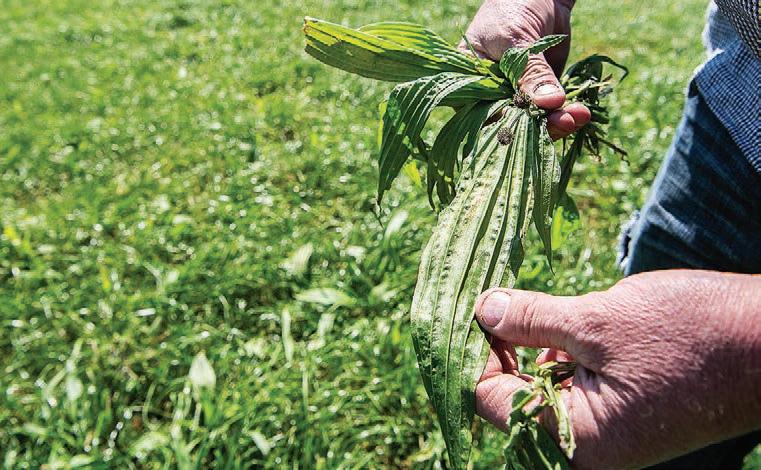
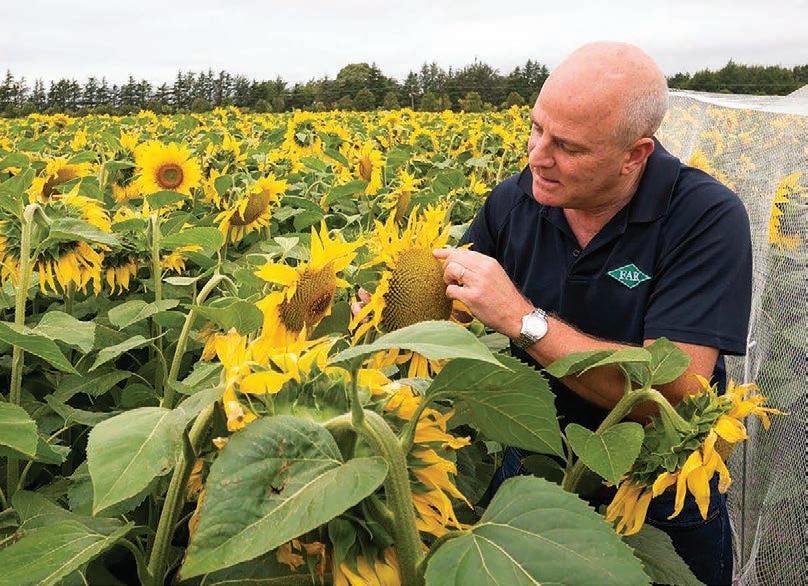
protein, said Lawrie.
DEVELOPING a pea and fava bean protein market in New Zealand would have high environmental gains, finds new research – but who pays for the processing plant and how to grow value for growers are questions yet to be answered.
The alternative protein market is worth over $15 billion globally and is expected to increase to around $23bn by 2026 – and there is plenty of scope for NZ’s arable
A new agricultural model developed for the NZ arable farming sector has shone a light on the potential to increase our pea and fava bean production, with funding from the Our Land and Water National Science Challenge.
Developing a pea and fava bean protein market in NZ was found to have high environmental gains, with peas and beans requiring half the amount of irrigation water and
But environmental benefits alone are unlikely to sway growers, Lawrie said. Peas are not currently a high-value crop and that will need to change somewhat for growers to include it in their cropping options.
Everything hinges on increasing the value of the crop for growers, Lawrie said.
NZ food manufacturers are already importing both pea and fava bean protein. They will have to step up to the mark, placing greater value on locally grown
Another challenge is the current lack of a protein processing plant in the country.
Building the necessary plant will likely cost around $50 million, but here “the chicken or the egg” scenario kicks in: crop area will have to increase substantially to make the build worthwhile.
Pea production currently uses 7000ha of land, produces around 4900t of protein, and is worth about $29.5m to the NZ economy.
A new extraction facility would be capable of processing around 15,000t of peas annually.
According to research by FAR, increases in crop value, land area and yield are also feasible in the near future.
According to FAR’s short-term feasibility parameters (yields up from 3.5 to 5 t/ha yield; value rising from $960/t to $120/t; and land area increasing to 25,000ha) an additional $375m could be gained.
Reasonable returns on investment will be needed for the processing plant, and this lends itself to growers getting involved, along with food processors, said Lawrie.
Whanganui 1700 Kauarapaoa Road, Paparangi

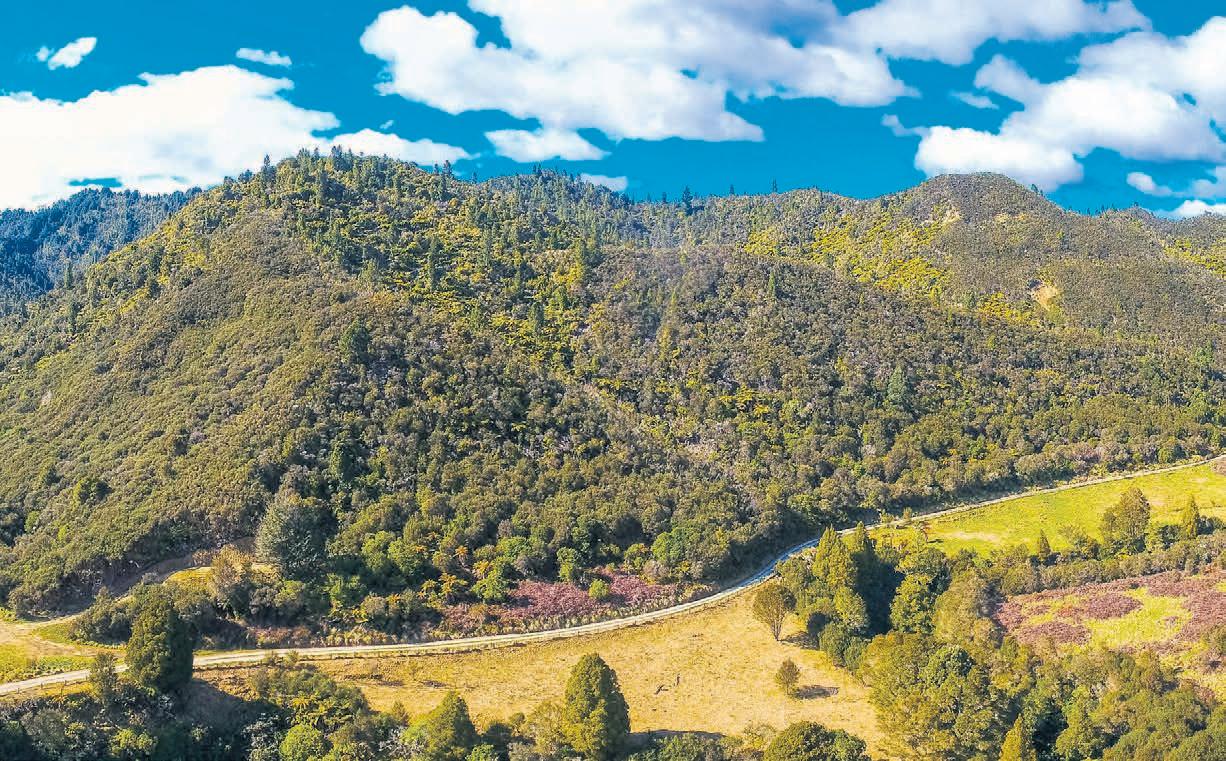
Situated inland from Whanganui City on two freehold Titles are 573 hectares of regenerating Native Bush and Manuka utilized for hunting, Honey collection & recreational activities. The property is located approximately 37 kilometres North-West from Whanganui in an area that is predominantly regenerating bush, Manuka and established Forestry. Contour ranges from medium to steep hill country with large areas of Manuka, Native Bush and a small stand of Pines. Improvements include a near new two bay steel lock-up shed, two main tracks off Kauarapaoa Road, one running through a central valley and the other providing access to a leading ridge for beehive placement of up to 380 hives. The property has produced high-quality honey and offers recreational and hunting opportunities for outdoor enthusiasts.
bayleys.co.nz/3100494
573.5ha
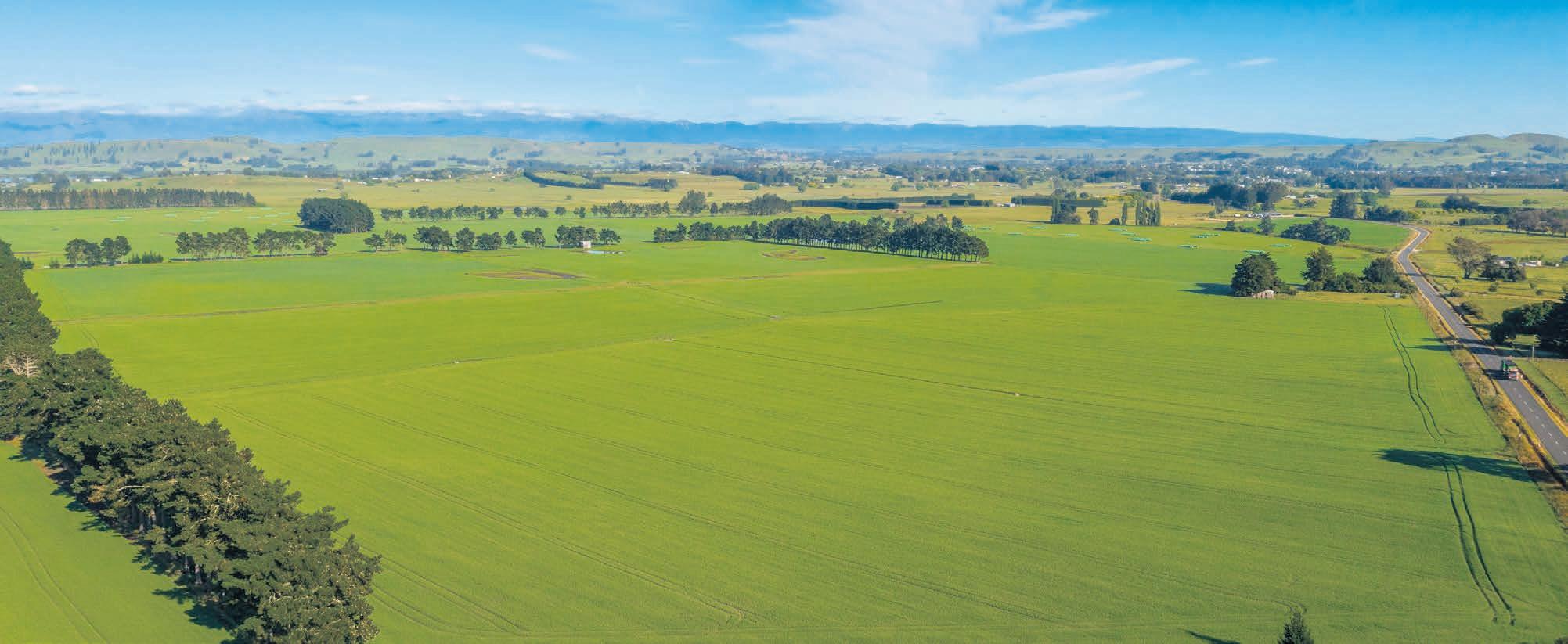
Deadline Sale (unless sold prior)
1pm, Thu 15 Jun 2023
49 Manchester Street, Feilding Mark Monckton 021 724 833 mark.monckton@bayleys.co.nz

Knud Bukholt 027 222 6161 knud.bukholt@bayleys.co.nz
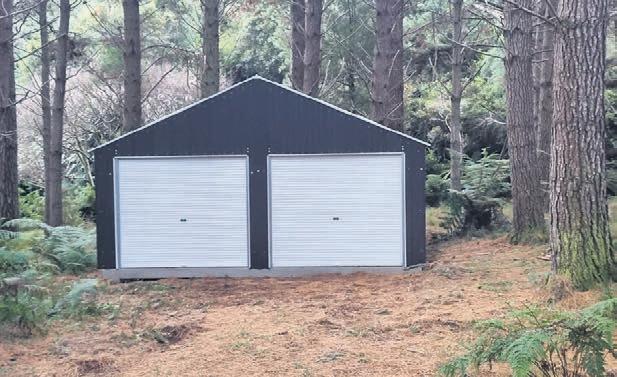
Waipukurau 356 Farm Road
Situated only 3.5km from Waipukurau this property offers the ultimate in contour and location along with numerous farming options. The property is held in four titles with a land area of 317.9999ha and is currently being farmed under a lease agreement with a cash cropping along with a winter lamb finishing program. The contour is all flat and has benefitted with areas of tile draining over the years. The soils are a mix of Matapiro sandy loam, Waipukurau sandy loam and Arlington loam. Water reticulation to all paddocks. Infrastructure includes four stand woolshed, sheep and cattle yards and numerous shedding. Rylands comes to the market offering a discerning buyer an opportunity rarely seen in Central Hawkes Bay. bayleys.co.nz/2870964 propertybrokers.co.nz/WR113547
317.9999ha
Tender (will not be sold prior)
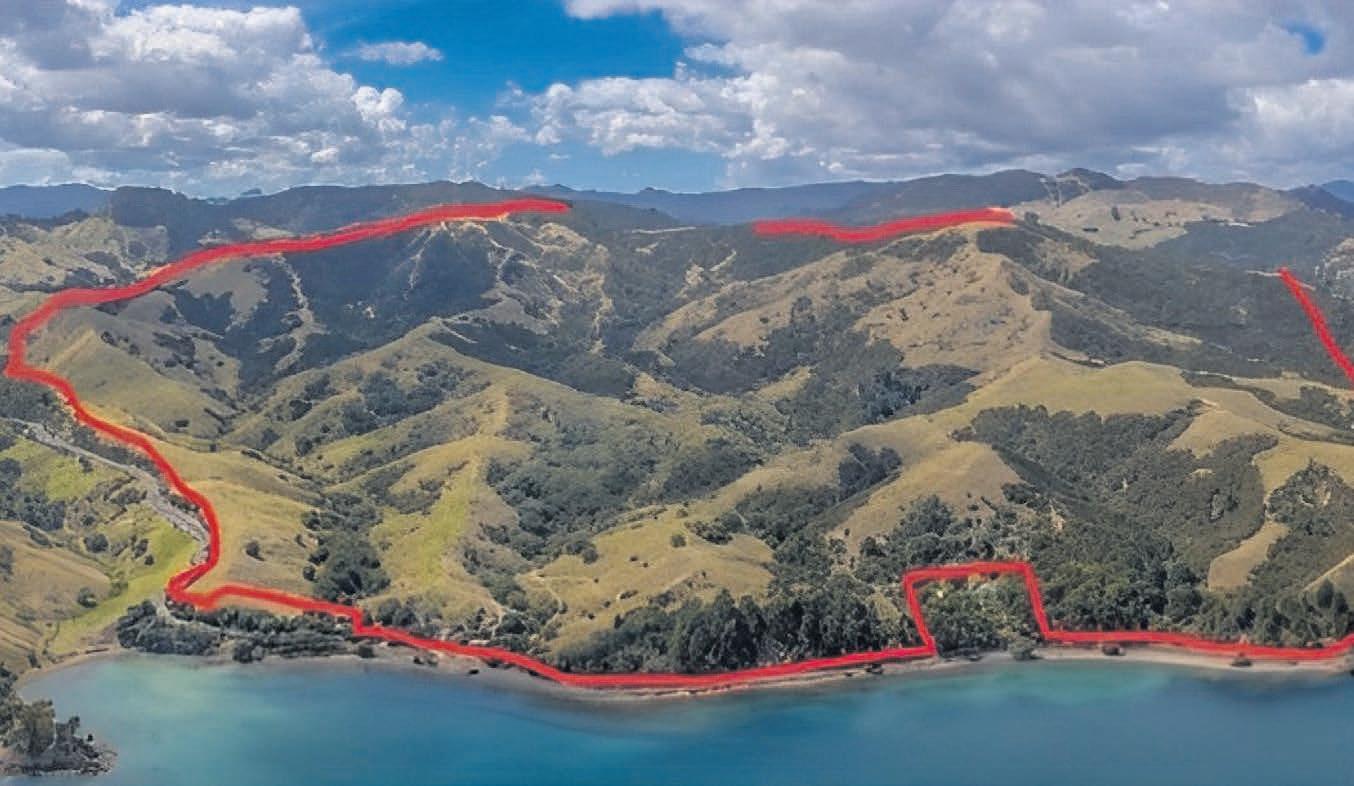


Grab this opportunity with both hands, the ultimate rural lifestyle is at Thames Coast Road. Overlooking the magnificent Hauraki Gulf, this farm spans over 412 ha and consists of three titles. The property has been operated as a beef breeding farm for the past decade and can accommodate up to 160 breeding cows with its 20 main paddocks and 11 holding paddocks, which are mostly fenced with electric fencing. In addition to the livestock facilities, the property also boasts a two stand wool shed that has been used for machinery and hay storage, two yards, a few lean-to sheds, and a utility shed at the back of the farm for additional hay storage. The three bedroom house with sleep out sits directly across the road from the beach at Wilsons Bay. This property offers the perfect opportunity to enjoy New Zealand's beautiful coastline and a quintessential rural lifestyle.

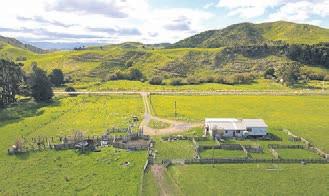

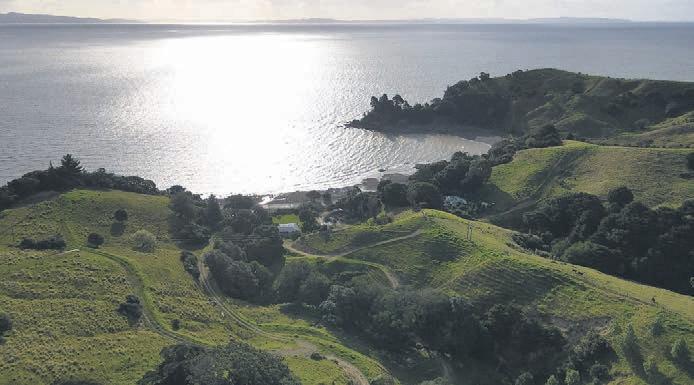
Our combined strengths complement each other, creating more opportunity for our customers and Farmlands shareholders across provincial New Zealand.



• A nationwide network from Northland to Southland


• Sound, trustworthy advice from market-leading experts
• Shareholder benefits and preferential commission rates means more money in your pocket




Bigger networks, more buyers, better results
For more information call 0800 367 5263 or visit pb.co.nz/together
PB062743




Tender closes 4.00pm, Wed 28th Jun, 2023, Property Brokers, 94 Duke Street, Cambridge View Wed 17 May 11.00 - 1.00pm Wed 24 May 11.00 - 1.00pm Web pb.co.nz/CBR116194
David McGuire

M 027 472 2572 E david.mcguire@pb.co.nz
















Jeremy Waters
M 021 607 281 E jeremy.waters@pb.co.nz
Dannevirke 672 Weber Road
Deadline Sale
Premium farm with location
Located in the Waitahora farming district which is under 10 minutes drive from the Dannevirke township and centrally located to the Hawkes Bay and Manawatu is a superb 126 ha finishing farm with balanced contour that will cater to all sectors of the agricultural market. The farm boasts 18 ha of flats in modern pasture species and quality farm infrastructure including three bay and two bay implement sheds, three bay hayshed, three stand woolshed, reticulated water and sheep and cattle yards. A modernised four bedroom home set in established ground provides ample accommodation or future sell down opportunities.
Deadline Sale closes Wednesday 24th May, 2023 at 2.00pm, (unless sold prior), Property Brokers, 4 Stanley Street, Dannevirke View By appointment Web pb.co.nz/DR119001
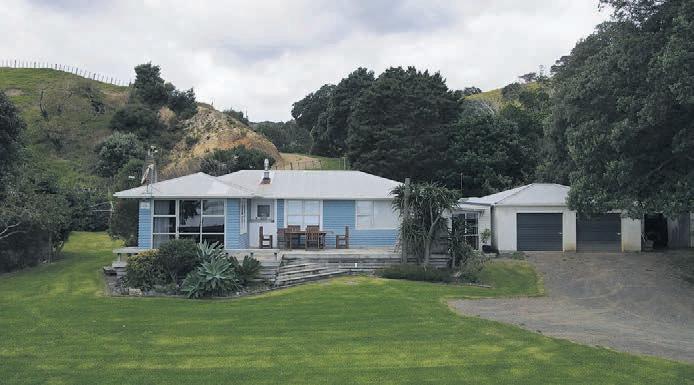
Jim Crispin M 027 717 8862
Sam McNair M 027 264 0002






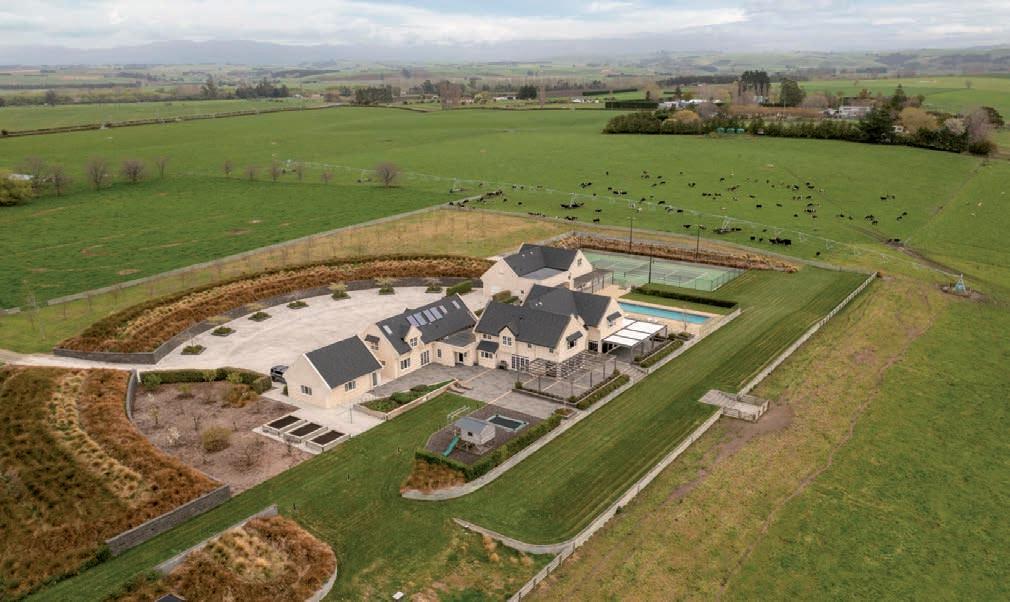

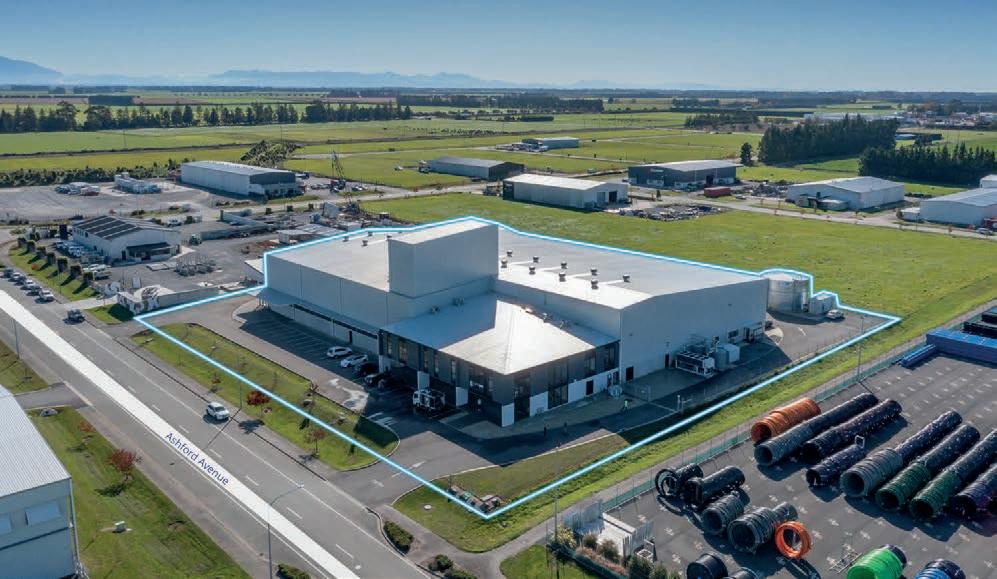


• 60.1055 hectares subject to final survey
• 670 Fencourt Road and Beer Road, off Victoria Road, Cambridge
• flat to easy rolling contour; some steeper sidlings
• sandy loam & clay loam soils sand pit on property
• currently utilised for finishing lambs but ideal also for dairy support, beef finishing, calf rearing or maize growing

• fertility benefits on part of the property from Fonterra wastewater irrigation

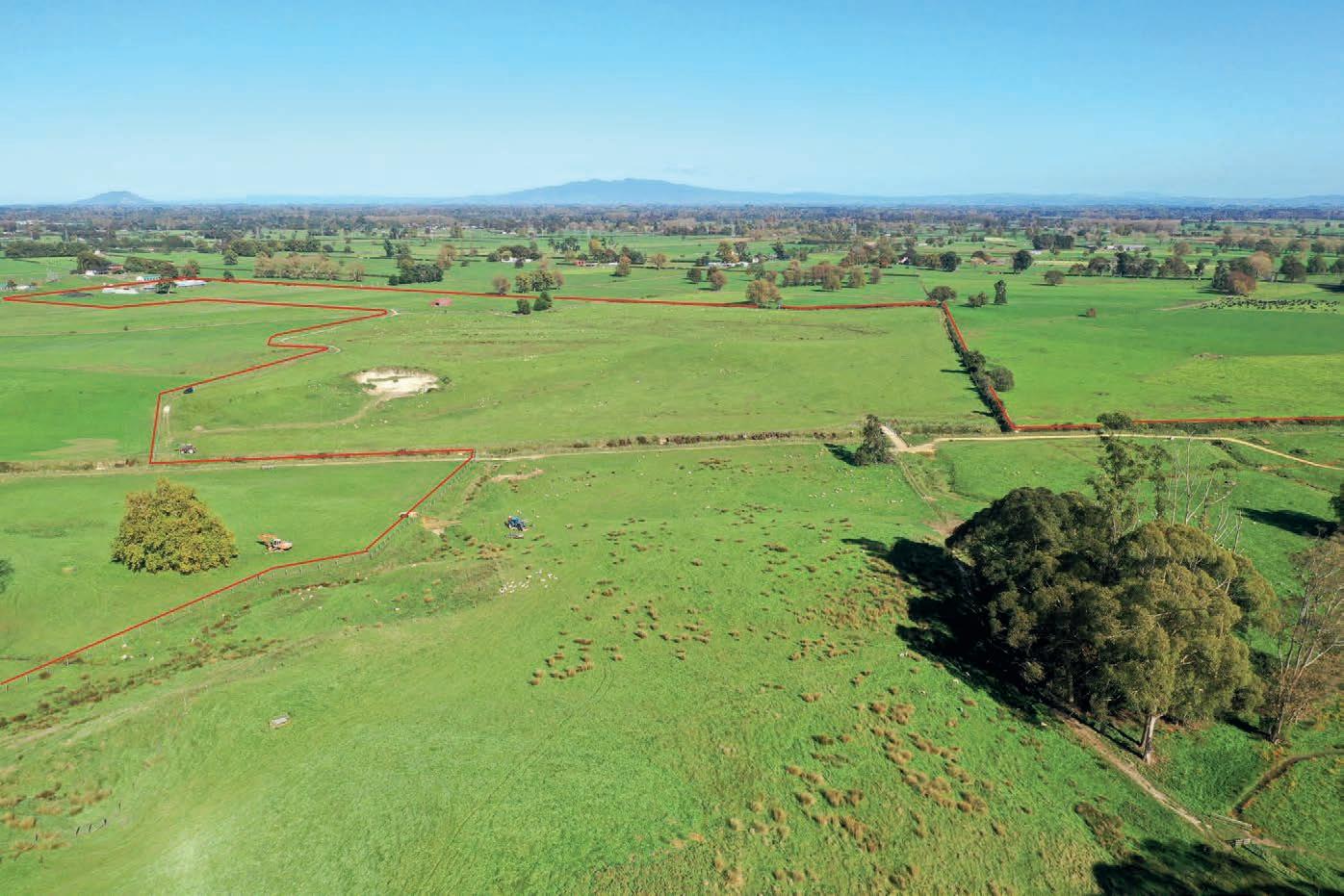
• a good range of older but functional buildings including a 10 aside herringbone farm dairy and large shedding ideal for calf rearing; new heavy duty bridge
• no dwelling but spectacular building sites with panoramic views to Pirongia, Maungatautari and beyond
• excellent primary and secondary schooling options within easy travelling distance
bjp@prl308.co.nz

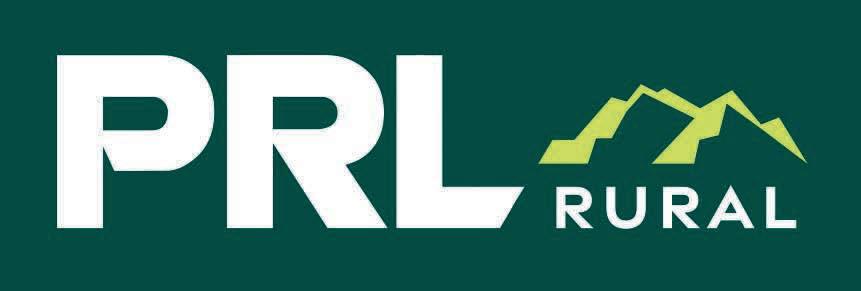
• Approx 5450 stock units, 570 effective hectares
• 3 years from 01 July 2023 with longer term potential
• A very sound, reliable hill country unit with useful calving country
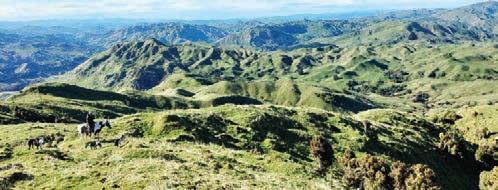
• Well developed with a good dwelling, substantial woolshed and covered yards
• Approx 45 paddocks with good permanent fencing

• First right of refusal offers potential for longer term relationship with compatible Tenant
• Honey opportunity available to Tenant and established hunting operation can be considered
Information pack with basic lease terms & conditions, proposal requirements and inspection dates available from:
Taumarunui Phone 07 895 8052 gtb@xtra.co.nz


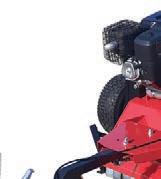
14.5HP. Vanguard Briggs & Stratton Motor. Electric start. 1.2m cut
3 year Briggs and Stratton Commercial Warranty.
2 year Mower Master Warranty
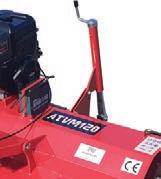
Assembled by Kiwis for Kiwi conditions – built to last.
$4900
To find out more visit www.mowermaster.co
Phone 0800 422277 or 028 461 5112
Email: mowermasterltd@gmail.com
Experienced and knowledgeable team looking for sheep and beef opportunity.
Lease, share farming or manager type position with possibility to grow our stock numbers considered.
We come with a stud flock of 300 ewes and are keen to take on anything including remote places and cyclone damage. Or give us a ring before you sell that family farm into pine trees. Always striving to improve the land and animal performance. Happy to work something out that suits you.
Please contact Haleigh or Steff on 022 574 1426 for a no obligation chat.


A BIT ABOUT KERERU STATION – Kereru Station is a large sheep and beef property located in Kereru, 35 minutes west of Hastings. It is a total of 2848ha flat to medium hill country. Owned by two charitable trusts the property is split into two blocks, a finishing operation situated at the main station, and Thornflat, the breeding operation under the Ruahine ranges. The well-resourced property boasts innovative infrastructure and utilises modern technology. New sheep yards have recently been completed to support a new dam that provides irrigation to 200ha of flats. Kereru Station is governed by an experienced and professional board made up of industry leaders who are committed to the long-term sustainability and performance of the business. The Station has a reputable management team with a proven track record of engaging with and growing their employees.
THE OPPORTUNITY – Reporting directly to the Business Manager, this is a hands-on role with a focus to maintain and improve the already high-performing finishing block. Key duties will include stock rotations, pasture management, animal health and welfare, weighing and condition scoring, recording and reporting, health and safety and general farm maintenance. You will lead a team of three and work with the Thornflat block as labour requires enabling an insight into the entire farming operation.

This is a rewarding position and provides learning opportunities for someone who has an understanding and passion for finishing lambs and bulls. Under the guidance of the Business Manager, you will develop a strong understanding of feed management with a range of crops including Lucerne, Chicory, and winter crops. Further responsibility will be given when established in the role and new ideas welcomed.
A BIT ABOUT YOU – The successful applicant will be driven and have the desire to continually progress themselves and the property. To succeed in this role, you will bring:
• Excellent understanding of the fundamentals of farming.
• Excellent communication and relationship building skills.
• Interest and ability in utilising technology and modern systems.
• High level of stockmanship with a team of 4 - 6 working dogs.
• Accurate record keeping and reporting skills – monthly stock reconciliations through excel.

ON OFFER – Kereru Station take a lot of pride in developing their team, this is a proven development step (practically and technically), with previous Block Managers securing their first farm management positions with the full support of the Station.

In addition to the professional development offered there is an attractive remuneration package including modern, well-appointed three-bedroom home located centrally on the Station. Kereru is a welcoming community with a rural school and kindy just 3km down the road. There are plenty of recreational activities nearby including local cricket club, squash court at the hall, Young Farmers Club, hunting, fishing and more.
For further information or to apply, please visit www.ruraldirections.co.nz/jobs or give the team a call on 06 871 0450 for a confidential chat. Applications close Sunday 21st May 2023
Cinta Agri Research is looking for home-based telephone interviewers who wish to work on a casual temporary basis and able to work from home. It is preferable if you have an understanding of NZ farming or have a rural background.

If you are keen to start immediately and have the following qualities we wish to hear from you:
• Reliable and able to work to time deadlines unsupervised
• Professional telephone manner
• Clear and confident speaking voice
• Conscientious approach to work
• Remuneration is $24-$27 per hour payment options dependent on number of interviews completed
Please email your interest and any experience to Fiona – Managing Director fiona@cinta.co.nz www.cinta.co.nz
•
•
•
•
Bring your own 4X4 on a guided tour to discover more of the South Island.
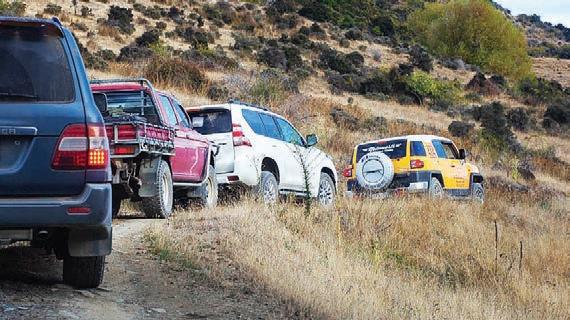

Tour 1: Molesworth Station, St James, Mailings Pass & Rainbow Stations

Dates: 2023 – Nov 13-16
2024 – Feb 19-22, March 4-7, March 11-14, March 25-28 April 8-11, April 22-25
Tour: 2 D’Urville Island and Marlborough Farms Tour
Dates: 2024 – Feb 11-15, March 12-16, April 24-28
Other dates available for groups of 6 or more people on request
Ph: 0274 351 955 E:
• www.southislandtoursnz.com

BUYING / SELLING. Huntaways. Heading dogs. Deliver NZ wide. https:// www.youtube.com/@ mikehughesworkingdog 07 315 5553. STARTED PUPS, two available, run and stop commands. Phone 027 449 0048.
GOATS WANTED. All weights. All breeds. Prompt service. Payment on pick up. My on farm prices will not be beaten. Phone David Hutchings 07 895 8845 or 0274 519 249. Feral goats mustered on a 50/50 share basis.
GRAZING AVAILABLE
RAMS FOR SALE
WILTSHIRES-ARVIDSON. Self shearing sheep. No1 for Facial Eczema. David 027 2771 556.



RURAL MASSAGE
RELAXING FULL BODY massage in rural Ohaupo. Unwind. De-stress. www. ruralmassage.co.nz or call 027 529 5540.
SHEEP SCANNING AVAILABLE



Unbeatable pricing. Phone 06 835 6863. www.craigcojetters.com


LAND TO HUNT on wanted. 50 years hunting, building and farming experience. Happy to help on-farm if required. Will travel anywhere. Ross 027 445 4307.
NORTHERN SHEEP
SCANNING. Friendly and reliable service. Based in Northern Waikato, servicing surrounding areas and Northland. Phone Natalie 021 109 5884.
FARM MAPPING
WORK SMARTER with a farm map based on the latest satellite imagery. Drone photography also available in South Island districts. For more info call Cli Francis 0800 433 855 or visit farmmapping.co.nz
FERAL DEER
TOO MANY WILD deer on your property eating pasture and crops? Want their numbers reduced by two experienced hunters? Manawatu / Tararua / Whanganui areas. Phone 027 714 9577 or 06 323 6022.
FREE DIGGER WORK IN EXCHANGE FOR hunting privileges. Phone Ben 021 175 4069.
110 DAIRY COWS. Up to 8-9 weeks on Kale, Mainstar and Baleage on at, free draining soil. A half kilometre o State Highway 4, Featherston. Phone Rob 027 490 0727.
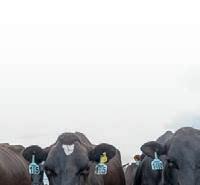
WINTER COWS. Ex-dairy farm, suit 300 cows, plenty of baleage. Email: nilsreiten@ gmail.com or phone 027 482 2575. Taumarunui. WINTER GRAZING for dairy cows, approximately 200. Cambridge. Phone 027 494 4557.

HORTICULTURE
NZ KELP. FRESH, wild ocean harvested giant kelp. The world’s richest source of natural iodine. Dried and milled for use in agriculture and horticulture. Growth promotant / stock health food. As seen on Country Calendar. Orders to: 03 322 6115 or info@nzkelp.co.nz
LEASE LAND WANTED
RANGITĪKEI, MANAWATŪ or HB areas. Dairy or grazing farm. Regenerative farming practiced. Open to developing land in partnership. Phone Michael 027 223 6156.

2000-4000SU SHEEP AND beef lease block. Anywhere in New Zealand considered. Mid 40’s couple, approximately 30 years experience. References available. Phone Karyn 027 246 9668.
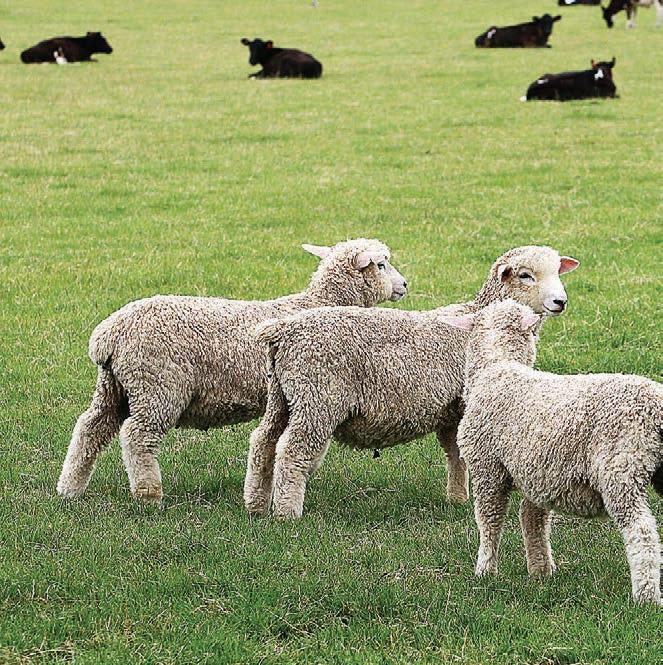
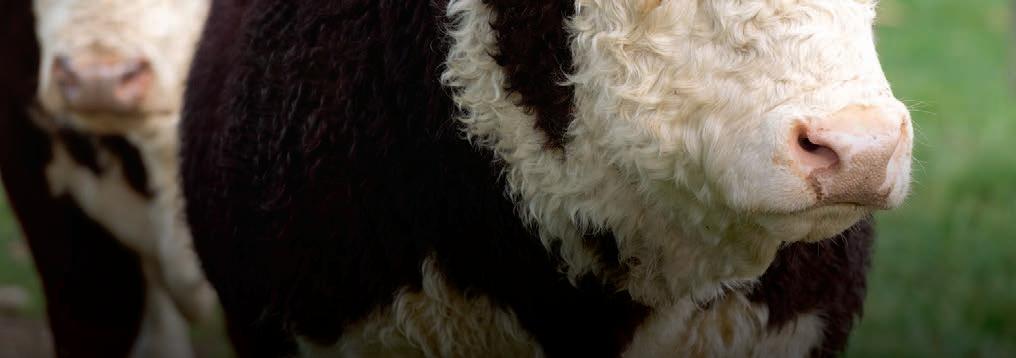
PULLETS HY-LINE brown, great layers. 07 824 1762.
Website: eurekapoultryfarm. weebly.com – Have fresh eggs each day!!!


PROMOTES QUICK PASTURE growth. Only $6.50+gst per hectare delivered. 0508-GIBBGRO [0508 442 247] www. gibbgro.co.nz. “The Proven One.”

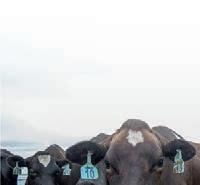
BROOKLAND SIMMENTAL, LBW, short gestation, bulls, suitable for beef or dairy, EBV’s available. Phone 06 374 1802.
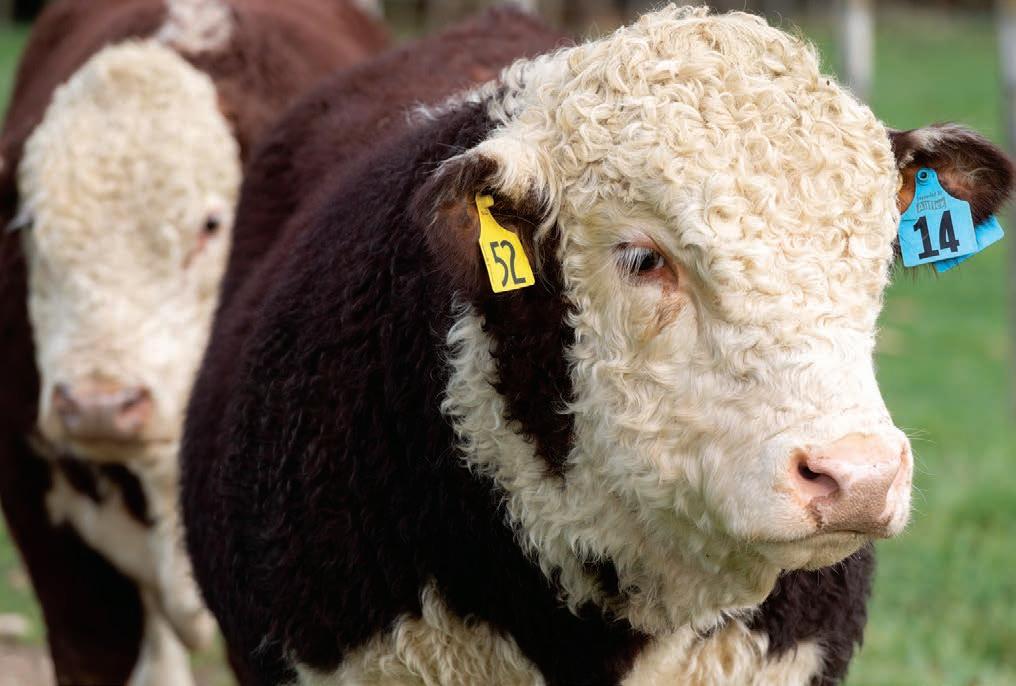
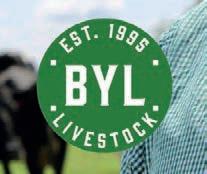
RED DEVON BULLS. Well grown, purebred. Feilding. Phone 027 224 3838.
MASSAGE BODY MAINTENANCE
SORE BACK? Busy lives?
Sports massage. Relaxation massage. Pedicure. Mobile services at your home. BOP. Call 020 411 34425. www. massagetherapyirene.com
IS YOUR SHEEP scanning getting ridiculously expensive? My rates might surprise you. Over 20 years quali ed sheep scanning experience. Hassle free, easy system with 3-way draft. I do the marking. $$ saved to you. Wet/dry to all multiples. Lates included. Areas covered Taihape, Hawke’s Bay, Whanganui, Wairoa, Wairarapa. Phone to discuss options. Greg on 0274 588 900.

WHAT’S SITTING IN your barn? Don’t leave it to rust away! We pay cash for tractors, excavators, small crawler tractors and surplus farm machinery. Ford –Ferguson – Hitachi – Komatsu – John Deere and more. Tell us what you have no matter where it is in NZ. You never know.. what’s resting in your barn could be fattening up your wallet! Email admin@ loaderparts.co.nz or phone Colin on 0274 426 936 (No texts please)
SAWN SHED TIMBER including Black Maire. Matai, Totara and Rimu etc. Also buying salvaged native logs. Phone Richard Uren. NZ Native Timber Supplies. Phone 027 688 2954.
BOOK
Ph
A man is leaning on a farm gate, watching the farmer round up some sheep when he realises that the farmer isn’t using a sheepdog, but rather a pig. What’s more, the pig, which is expertly manoeuvring the sheep into a pen, only has three legs.
“Excuse me,” says the man, “but why has that pig only got three legs?”

“Let me tell you a bit about that pig”, says the farmer. “That pig not only herds my sheep, he also crows in the morning and milks the cows morning and night.”
“That’s not all!”, he continued, “that pig can count! He counts so well that he does all the farm accounts and lls in my tax forms.”
“What an amazing pig!” says the man.
“I ain’t nished,” says the farmer. “Two years ago, my farmhouse caught re and the pig called the re brigade and then fetched water from the river to douse the ames in the hall.”
“Wow,” says the man, ”that really is an incredible pig. I just don’t understand why he only has three legs.”
“Ah,” says the farmer, “when you have a pig this special, you don’t eat him all at once.”
To advertise phone Debbie 06 323 0765
WORK WANTED
33 YEARS MANAGING Dry Stock, Sheep, Beef, Deer and Dairy from 500-2500ha. Pro cient in all aspects of hands on farm management and farm tech systems. Calm, easy nature. Good team of dogs. CV and references on request. Phone Steve 027 788 8115.


• All trials prove better breeding values make you more money.



• Orari Gorge Herefords are proven performers in Progeny Tests across all breeds.

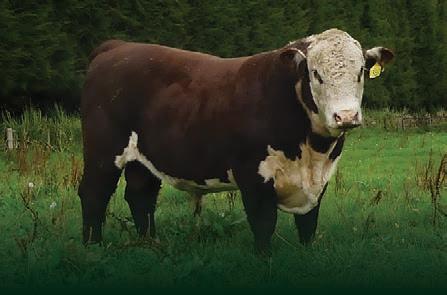


• All cows and heifers wintered on steep hill country up to 3,500ft with no supplement.

• All bulls and replacement heifers independently structurally assessed on Breedplan.

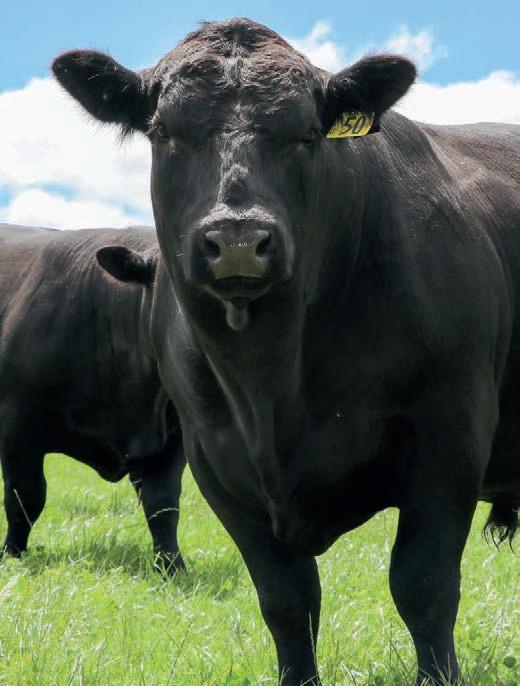


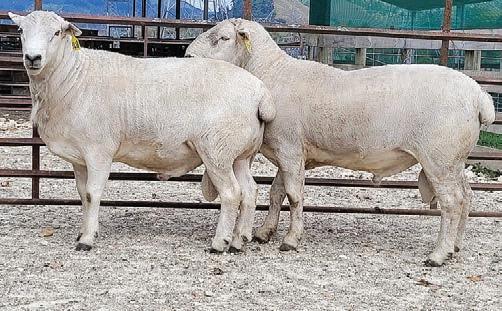

• Every calf DNA tested for parentage, defects, and accuracy of breeding values.



• The right Hereford bull can return $100s in quality premiums per calf PLUS $100s per calf with Hybrid Vigour when used over Angus cows.


Friday 19th May
Viewing from 10am Auction Starting at 12pm 25 Mackay Pass Road, Rockville, Golden Bay
COMPRISING:
• 2017 John Deere 6140M with FEL (5500hrs)
• 2010 John Deere 6430 with FEL (4400hrs)
• Case 595 with FEL (3500hrs)
• 2019 Kverneland Optima V 7 Row Planter
• 2018 Jen Debru 4.15m offset discs
• 2021 Taege
A/c Faraway Farms Ltd
Date: Wednesday 17th May
Address: Matamata Saleyards

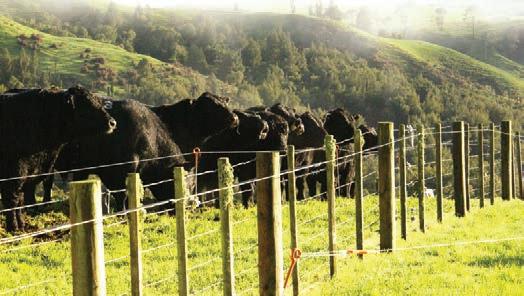
Start Time: 11.30am will be available for online bidding
COMPRISING:
185 x Mixed Breed C/O cows BW192, PW266. Due to calve from 20th July.
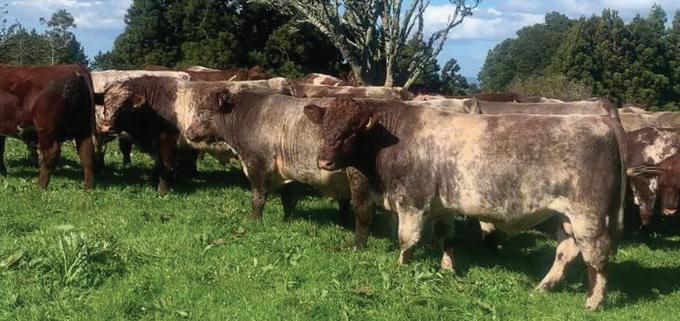
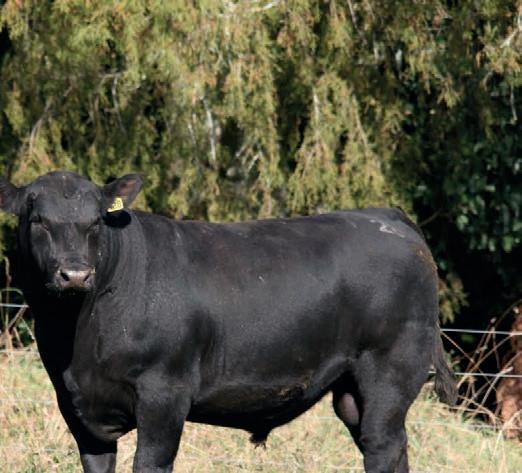
AUCTIONEERS NOTE:
• Kuhn HR3020 Power Harrow
• 2018 Honda TRX500 Auto (2000hrs)
• Dommett offroad 8m Bale Trailer
• 20ft Shipping Container
• 2 x pair of Hustler Mega Soft hands ASSORTED SUNDRIES: Tools, Calf Rearing Equipment, Electric Fencing gear, rims, tyres, general fencing equipment, troughs etc.
DETAILS: List of equipment and specs available at carrfieldslivestock.co.nz
FURTHER ENQUIRIES CONTACT:
241 8919 Jake Garrett 027 787 6007

These hand-picked carryover cows were purchased in-milk last season to a strict buying criterion with emphasis on age, low SCC, and indices. These cows were milked this season and mated to AI bulls for seven weeks with no natural mating. The cows will come with a 28 day in-calf guarantee from auction day.
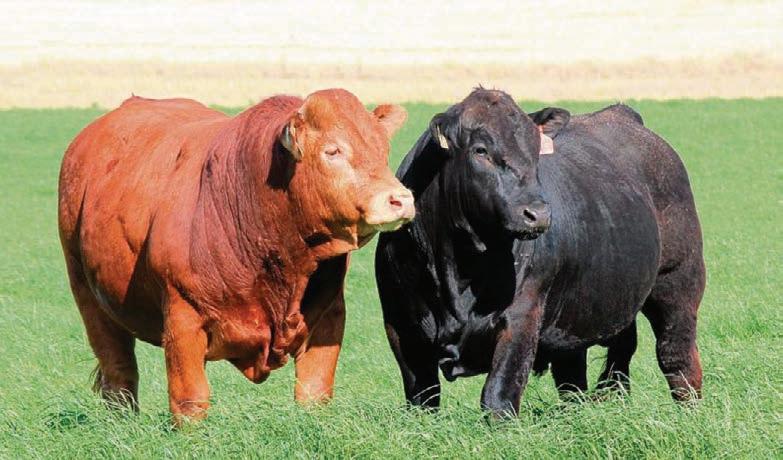


PAYMENT TERMS:
14 days after sale.
CARRFIELDS LIVESTOCK AGENTS:


Reuben Wright 027 284 6384
John Price 027 594 2544
Kelly Higgins 027 600 2374
OUR VENDOR: David Van Bysterveldt 021 189 9888
10AM 1ST JUNE 2023

20 Bulls available
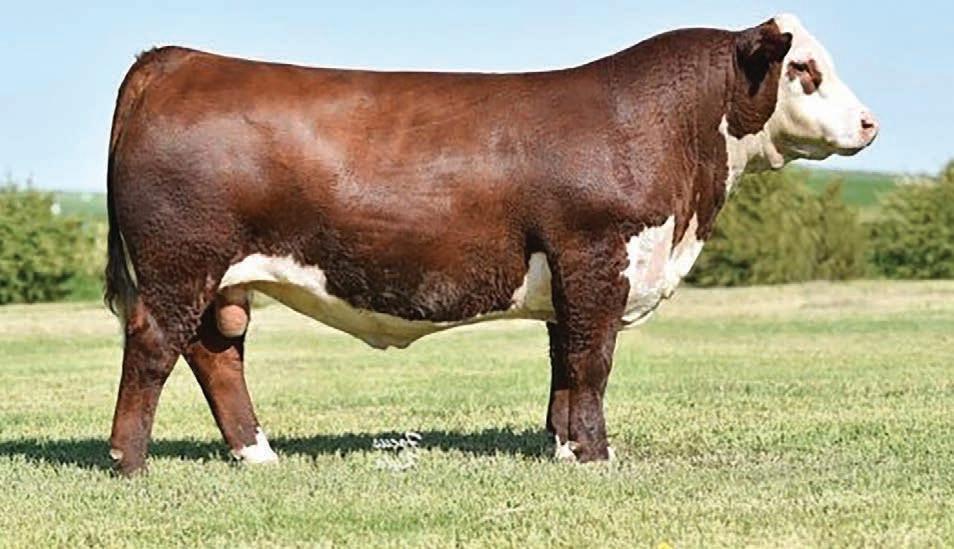
The genuine article is at Ngakouka
NJW
• The best cross over all breeds of cow
• The best cross over all breeds of cow
• Our focus is on breeding seedstock with great fats, fertility, feed conversion, faultless structure and to be free and friendly movers.

• Our focus is on breeding seedstock with great fats, fertility, feed conversion, faultless structure and to be free and friendly movers


• bulls are Lepto and BVD vaccinated
• Bulls are Lepto and BVD vaccinated

• Catalogues available on line at ngakoukaherefords.co.nz


• Catalogues available online at ngakoukaherefords.co.nz
Viewing from 8am
Bruce and Chrissina Donal d 06 374 2939 | 027 230 211 2
Bruce and Chrissina Donald 06 374 2939 l 027 230 2112
ngakoukaherefords@gmail.com
ngakoukaherefords@gmail.com

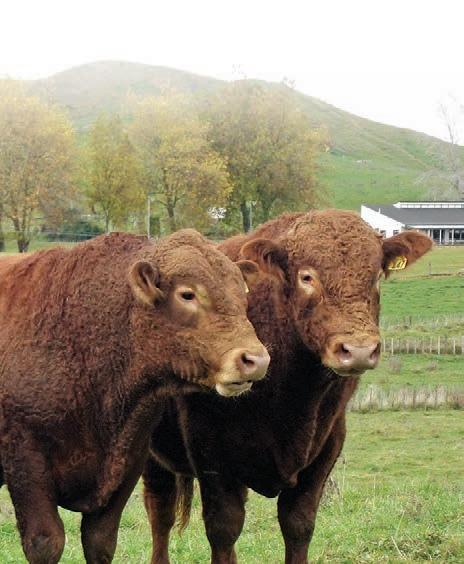








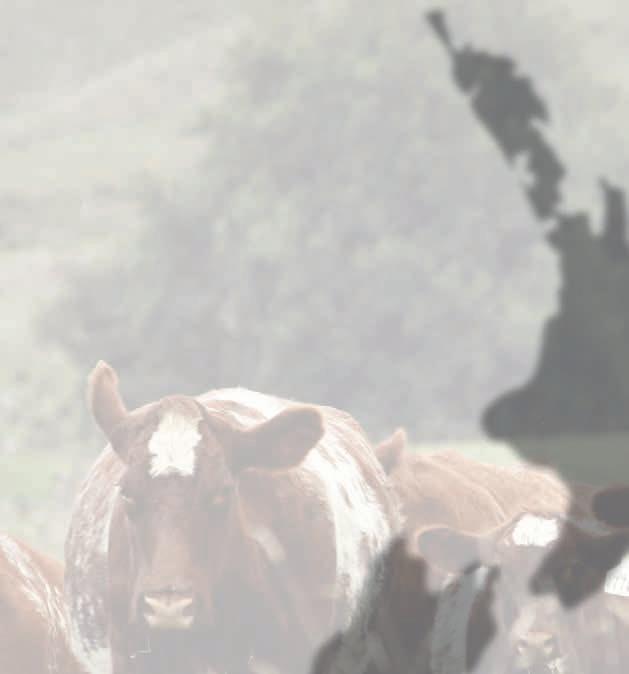


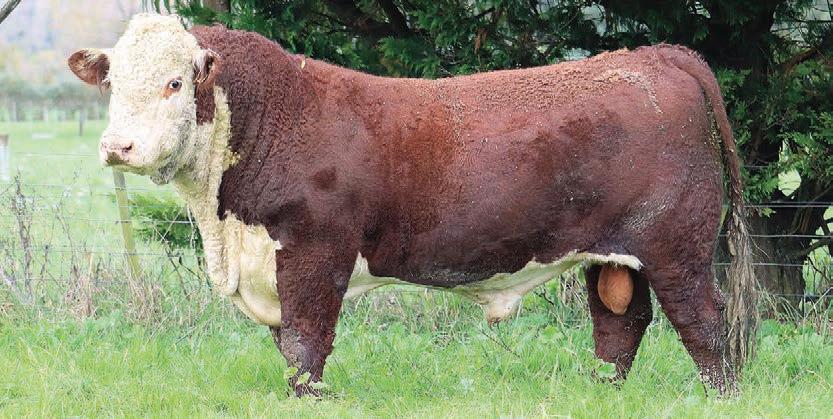
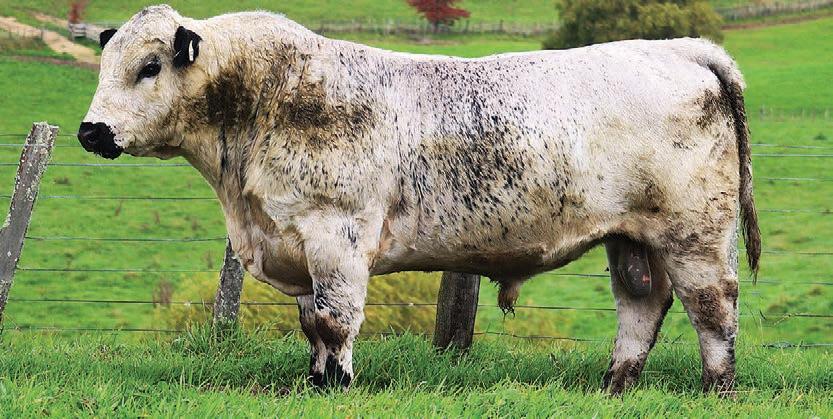














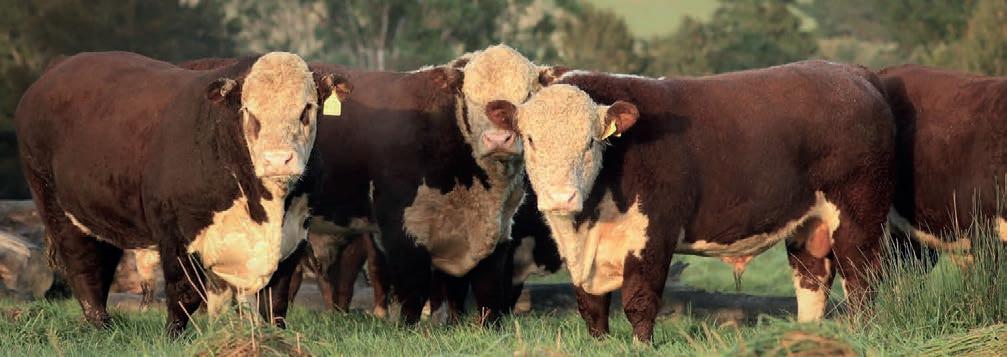















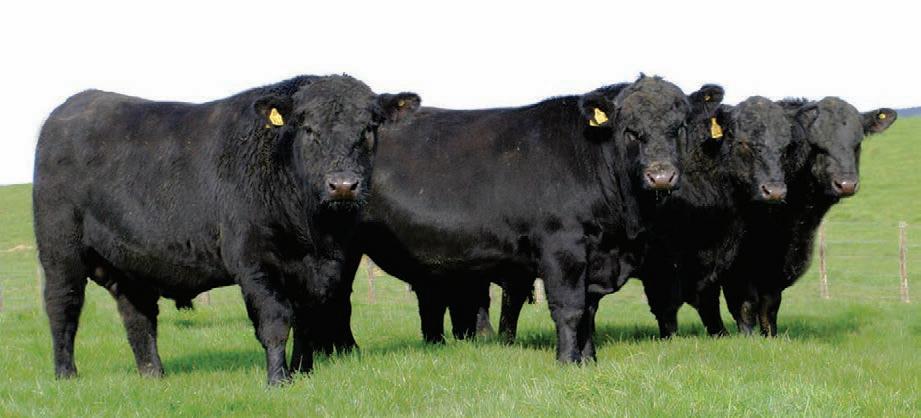
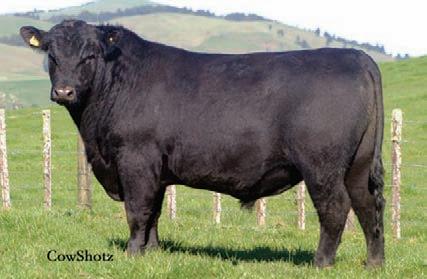
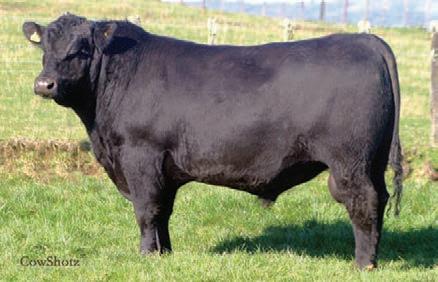

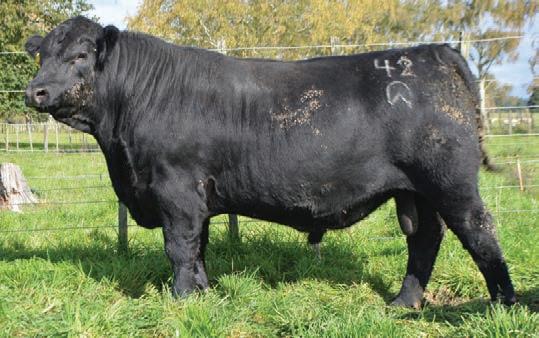
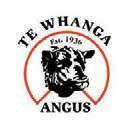
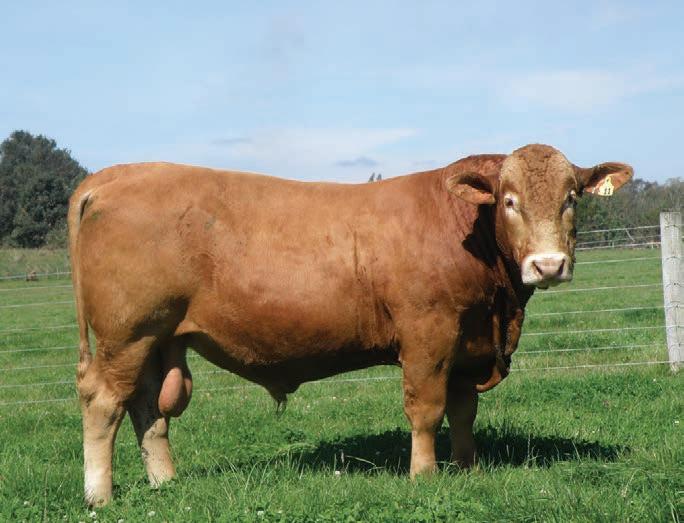

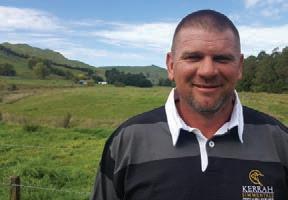

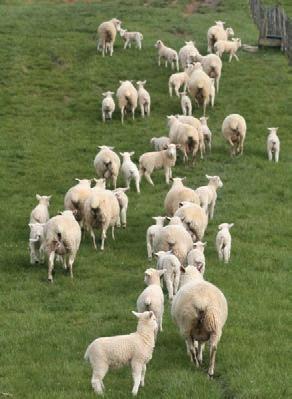
If you have a higher than expected dry rate - consider the impact FE may be having on your flocks performance.
For every clinical ewe there will be at least 10 subclinical cases. This unseen liver damage impacts her ability to conceive, maintain condition and perform.
64 Alec Robins Rd, Queenstown
Wednesday 24 May, 3.30pm
Mike and Gemma Smith
Mike 021 975 269 or Email: mike@kcangus.co.nz
PGG WRIGHTSON
Cullum McDonald 027 433 6443
Craig Knight 027 590 1331
John McKone 027 229 9375
John Duffy 027 240 3841
RURAL LIVESTOCK
Anthony Cox 027 208 3071
Paul Mavor 027 473 0100
Tony Pride 027 434 7230
ROGER KEECH GENETICS
Roger Keech 027 417 8641
Inspection welcome at any time
Food and refreshments available www.kcangus.co.nz
Nikau Coopworth clients report little to no effect on scanning rates in a hot FE season. They can count on ewes getting in lamb.
The proven solution - Nikau Coopworth FE genetics. Call for a chat about how genetics can help your flock tackle FE head on.
www.nikaucoopworth.co.nz 09 2333 230


TUESDAY 16 MAY: 6.30pm: Groven Pasture High Production Holstein Friesian Sale (Leeston) 7pm: Waiohine Hereford & Hollow Top Angus Inaugural Online Bull Sale
WEDNESDAY 17 MAY: 11.30am: Friesian/ Friesian X Sale- A/C Van Bysterveldt (Matamata) 12.30pm: Clearing Sale- A/C Madibe Dairies (Oamaru)
7pm: Moovin Aherd Elite Calf & Genetic Sale

THURSDAY 18 MAY: 11am: Clearing Sale- A/C IK Bellamy (Whangarei)
Ruaview Simmental & Angus Annual Bull Sale
Glenwood Angus & Loch Lomond South Devon Bull Sale

Puketoi Angus Bull Sale
FRIDAY 19 MAY: 2pm: Penvose Angus Bull Sale MONDAY 22 MAY:
Pukenui Road- Kaiwaka-Northland
Wednesday 24 May 10.45am
Comprising:
Comprising:
• 300 Jersey In Calf cows
• TB C10, Lepto vaccinated, EBL Free. The original Pukenui herd was started in 1926 and has always been admired by visitors for their great dairy conformation and proven shifting ability of trying country. Based on the Big Hollow bloodlines for many decades that were renowned throughout NZ for establishing many of the best female families of their time, this is a great and rare opportunity to purchase into some very special genetics that have stood the test of time and have given Bryan and Isabel a lot of pleasure.
Information on calving dates: They have been scanned where possible, the dates are available in the catalogue. Catalogues available from the auctioneers or online at Agonline & Bidr.
Bernie McGann 027 590 2210
Andrew Reyland 027 223 7092
NZ’s Virtual Saleyard bidr.co.nz
On Farm, 1473 Taieri Peak Rd, Stoneburn - East Otago Friday 26 May, 2.30pm • Offering 25 R2 Polled Hereford Bulls • Bulls born & bred on East Otago dryland country • This sale will be livestreamed on bidr, bid & buy from anywhere
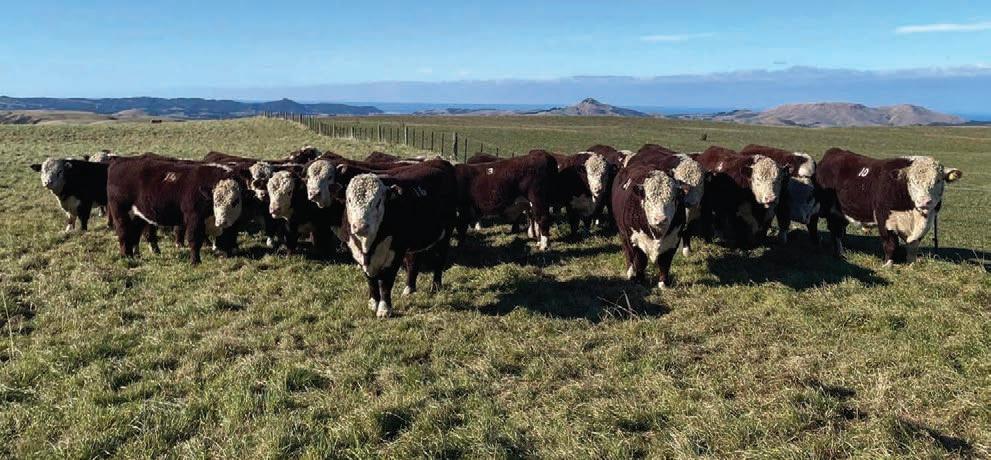
• Open day is Friday 12 May, viewing from 1.00pm to 5.00pm
Gerard Shea (PGW) 027 442 5379
Callum McDonald (PGW Genetics) 027 433 6443
Ben McKerchar (PGW Auctioneer) 027 366 7766
Andy Denham (Vendor) 027 640 8167 / Campbell Denham (Vendor) 027 444 7412
Thursday
We


The United States is New Zealand’s go-to market for manufacturing beef, but to what extent have high hopes for the season been realised?
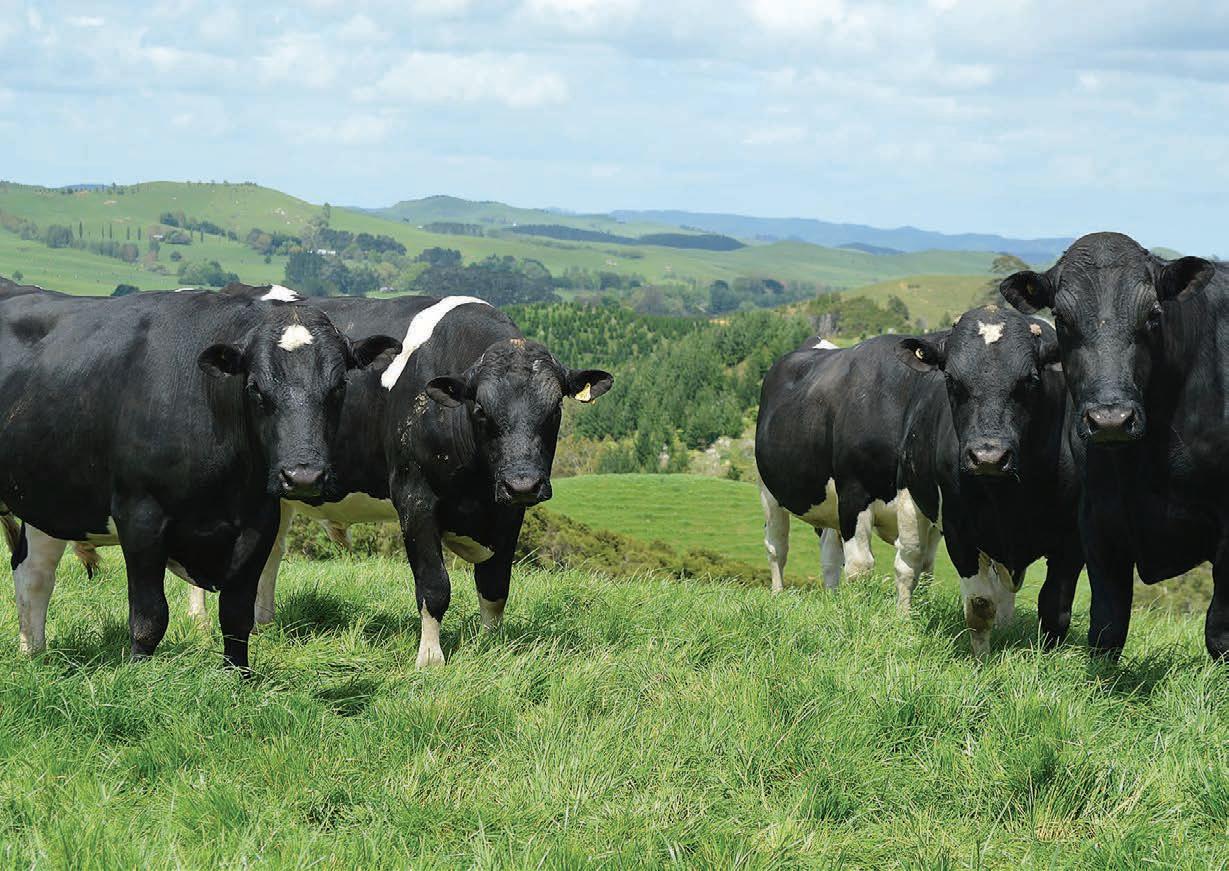
THE United States has historically been New Zealand’s go-to market for manufacturing beef, and little has changed in recent years. China has stepped up its requirements and in doing so added a bit of competition to pricing, but the US continues to absorb most of our manufacturing beef.
This is especially so at this time of the year, when the cull cows are running and NZ is producing a heap of lean beef. Bulls also provide their share of manufacturing beef throughout the season.
Of all beef exported from NZ this season (October to April), 43% or 128,000t has been manufacturing beef. Of that total, the US has accounted for nearly 60%.
There were high hopes for the US beef market this year, on the basis that its own beef herd had contracted enough to present holes in its supply and create a greater reliance on imported beef. So far, the imported beef market has performed well, considering the low point it started from in early January.
Tighter US domestic supplies have supported the lift. Imported 95CL bull meat has lifted US60 cents/lb since January, while imported 90CL cow meat has firmed US35 cents/lb. Values have
trailed last season, but in doing so they enabled demand to continue to grow, unlike last year when values peaked in March and fell from there.
May is typically a strong demand month for beef in the lead-up to the US’s Memorial Day holiday. As supplies are quickly absorbed, this demand extends to imported prices.
Yet that hasn’t been the case this year. Despite holding solid over the past month, prices, particularly at the leaner end of the market, have felt some pressure.
Some of this is partly related to higher volumes of beef from NZ and Australia, but also some recent developments in the US market.
Not only have US beef cow supplies diminished, so too has the fed cattle slaughter. Numbers are down, carcase weights are lower, and ultimately the volume of fatty 50CL trimmings is tight.
This has led to an explosion in 50CL values, limiting the ability for end users to pay any more for leaner beef, which is typically mixed with those fat trimmings.
If demand was strong and sales were moving freely there would be more leeway to cover the leaner requirements. However, demand at the foodservice level is soft within the lower priced fastfood category. Beef is up against cheaper competing meats such as chicken and pork once again, and no one is taking it lightly.
Demand at the foodservice level is soft within the lower priced fast-food category. Beef is up against cheaper competing meats such as chicken and pork once again, and no one is taking it lightly.

Slowing demand at this point of the season is unwelcome but potentially reflects economic concerns and the fact that consumers are watching their
spending. Stocks of lean beef at high prices and an inability to lift current prices to offset those stocks has slowed everything down.
A correction in 50CL prices would favour import prices and potentially prevent any further retraction in prices, but that has yet to be established.
Back in NZ, the slowdown in imported beef prices combined with a lifting exchange rate may create some short-term hurdles.

Current farmgate bull and cow prices are near to levels achieved this time last year. However, US imported beef returns are softer, even in NZD terms, restricting
any fat in the system should this market fall even further. It’s not the solid outlook we were banking on, but fortunately we are closing in on much lower export volumes through winter. While there might not be much further upside to imported prices based on current demand signals, what’s important for farmgate returns is where imported prices level out short term.
A strong finish to May on the demand front in the US, combined with their falling domestic cow production, might just help stabilise the market towards spring and provide support for returns here.
The last of the calf sales in the South Island was held at Canterbury Park on Thursday, May 4 and was a big offering of nearly 2300 high country calves.
The sale stretched from 10am to 4pm and Angus and Angus-Hereford lines easily dominated, though Hereford and exotic-cross also featured.
Competition was strong throughout, especially from local buyers, who have an abundance of feed. The North Island weaner fair season will finish at Feilding on Thursday May 18.
5 | 2167 sheep
Taranaki | May 10 | 744


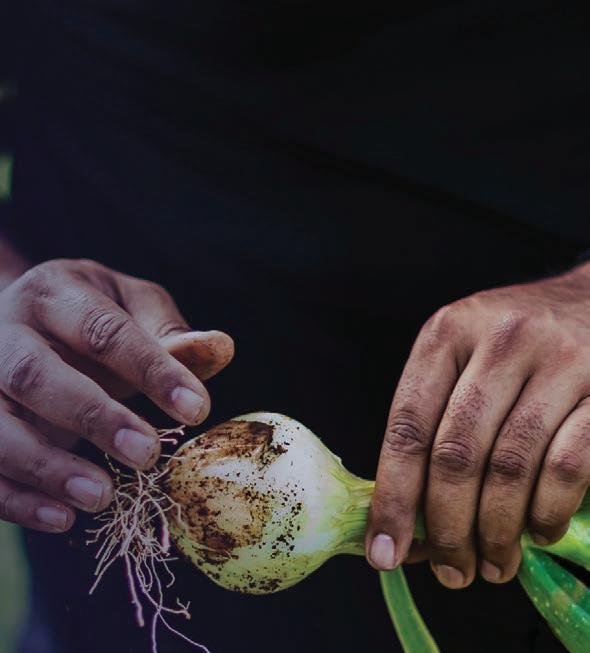






NOTE: Slaughter values are weighted average gross operating prices including premiums but excluding breed premiums for cattle.
Data provided by

Milk price futures ($/kgMS)



Canterbury feed wheat ($/tonne)
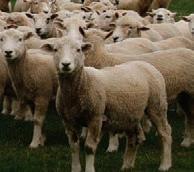
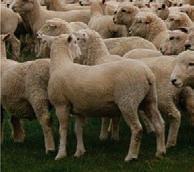





Canterbury feed barley ($/tonne)
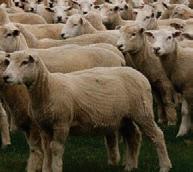

WMP futures - vs four weeks ago (US$/tonne)


Waikato palm kernel ($/tonne)





AFTER weeks of abovenormal temperatures, New Zealand has finally had a cold change with classic autumn weather across the country last week.
Snow fell on the mountains and ranges, hail showers peppered northern New Zealand with thunderstorms and squalls, and temperatures dropped nationwide. In fact, it was the first proper cold southerly of the year – which is remarkable considering we’re just two weeks away from June and the start of winter.
The run of weather that was much warmer than average, noticeable in April and the first half of May, isn’t over yet either. This week northerlies return as high pressure again moves out to NZ’s east. When high-pressure zones are parked east of NZ the airflow (being anticyclonic) tends
to bring in milder northerlies and nor’easters (although, granted, nor’easters aren’t warm for everyone – but they do tend to make for milder overnight lows even if the days feel cooler).
When high-pressure zones are parked west of NZ, around
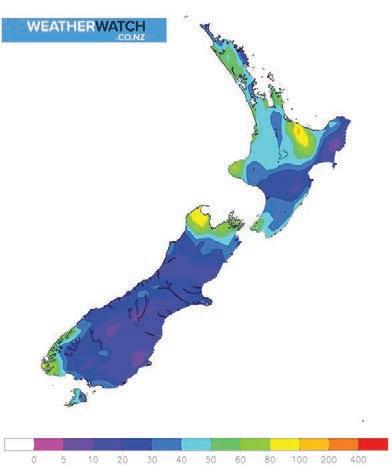
Tasmania and New South Wales, that’s when we get the colder southerlies.
In fact, there is a very specific shape to the air pressure zones when NZ gets hit by a major Antarctic blast. For this to occur (that is, when we get snow to sea level in Dunedin and Christchurch and snow on the ranges of the upper North Island), high pressure needs to be basically centred over Tasmania and be a “tall” high (in other words, it’s shaped north to south – so it reaches northwards into Queensland, and southwards over the Southern Ocean).
We then also need a lowpressure zone southeast of Dunedin. When you have the Tasmania high-pressure zone coupled with the low-pressure zone southeast of Dunedin, NZ gets a major cold blast.
When it snowed in Dunedin, Wellington, Christchurch and Auckland in 2011, this was the set-up we had – and we’ve seen variations of that set-up in recent
years with other cold blasts (that weren’t quite as major).
While last week saw a decent injection of cold, the high-pressure zone over Tasmania wasn’t “tall” enough – so it didn’t stretch down further over the Southern Ocean to dredge up the cold polar air. The further south that high stretches, the more likely NZ is to get a cold blast.
So as we head towards the end of May, what is happening with autumn’s weather pattern? This week we are back to warmer-thanaverage in many places again – all due to high pressure east of the country, where it once again pulls down sub-tropical airflows. We
may also see a fast-forming low in the Tasman Sea late this week, bringing a burst of rain and wind to the country.

• High pressure clears NZ to the east this week

• Risk of severe weather late week
• Heavy rain and strong northerly quarter winds possible Thursday/Friday
• Low pressure may dominate the North Island this weekend



• Another high may come in next week from Australia




